June 2, 2019
Martha O'Kennon
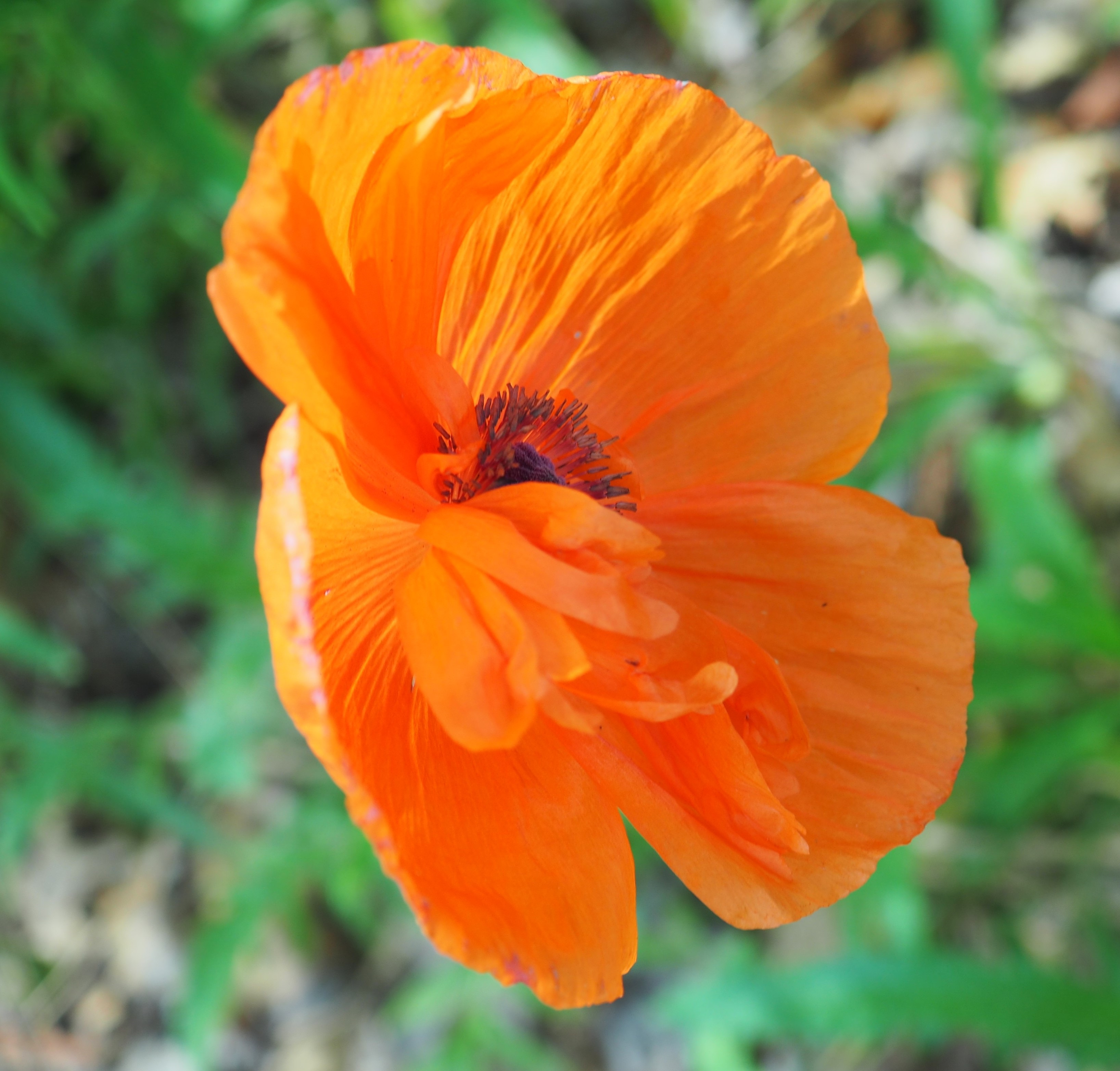
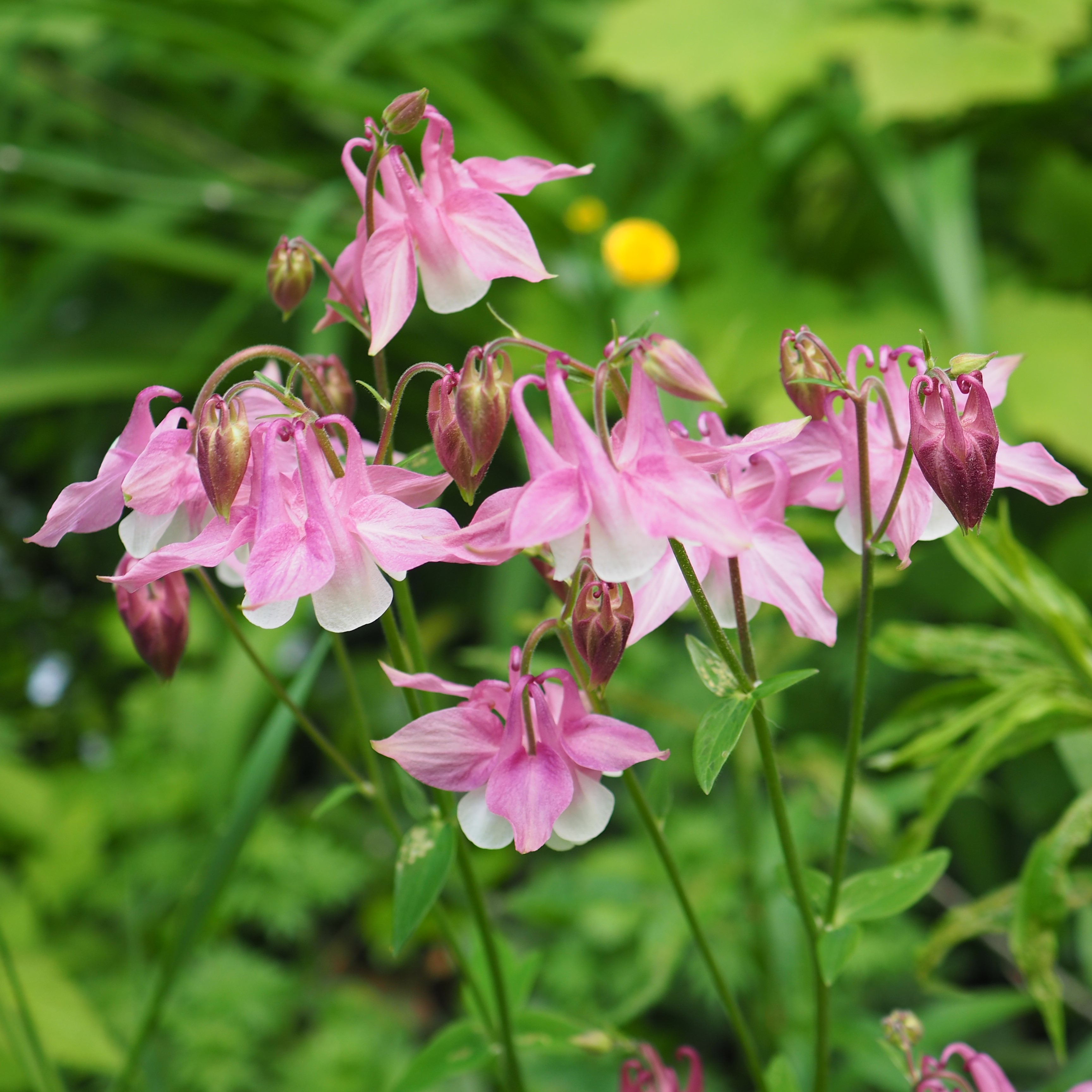
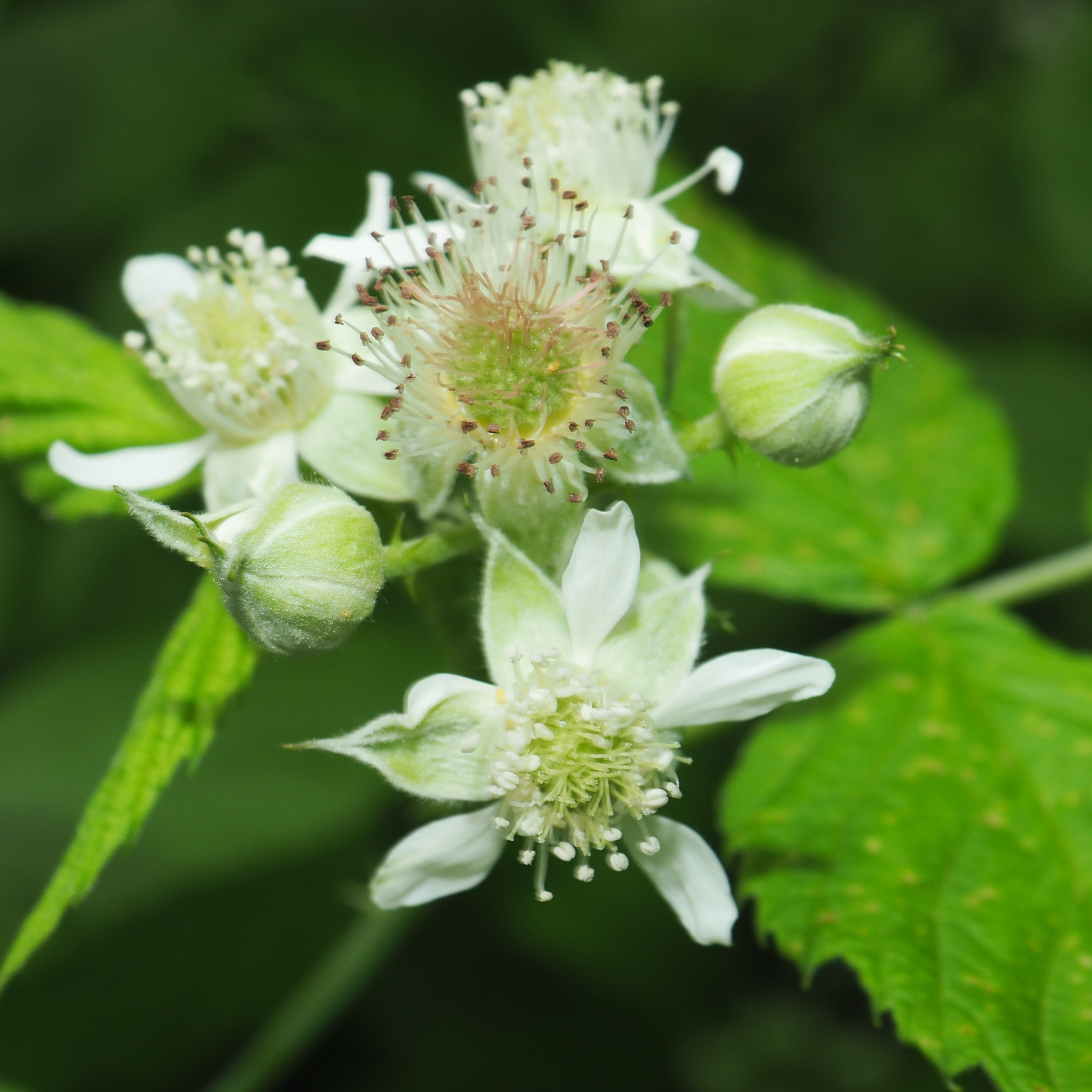
This week's star flowers. A few of those orange oriental Poppies (not to be confused with the bright yellow Golden Wood Poppies) have started to bloom. I was shocked to see that a couple of the old Columbines(They were in the yard when I moved in in 1986) have survived till today. This is the double pink variety and just looking at this picture makes me feel very happy. Another thing that cheers me up is to see the raspberry plants begin to bloom. Not only do they attract many beautiful insects (you'll see some later) but most of the blooms will turn into my favorite black raspberries!
Remember that there is information in the name of the file for each image. You can see it by mousing over the image - look at the lower left of the screen. Or you can click on the image to get to the (usually) larger image. Then the info is displayed in the address line above. Sometimes the second click will actually display a different view of the original image.
There are three very fruitful places to look for ants these days: the oak saplings on the far south side of the house; the shop siding; and this week, on the lone peony bud.
First, an Acrobat Ant on this year's Peony. Too bad the Peony is in quite a shady and congested area and so only has one flower a year. (That does make it easier to look for the ants though.) In other years, I've seen other kinds of ants on the peonies. In 2017, this ant that looks like an Eastern Black Carpenter (note the yellow hairs on its nether end and the relative size compared with that of the Peony) was common on the peonies. Third is the only photo I have from 2016. Fourth, from 2015, looks a bit like a member of the Formica genus. So at least we know that it isn't the same kind of ant every year.
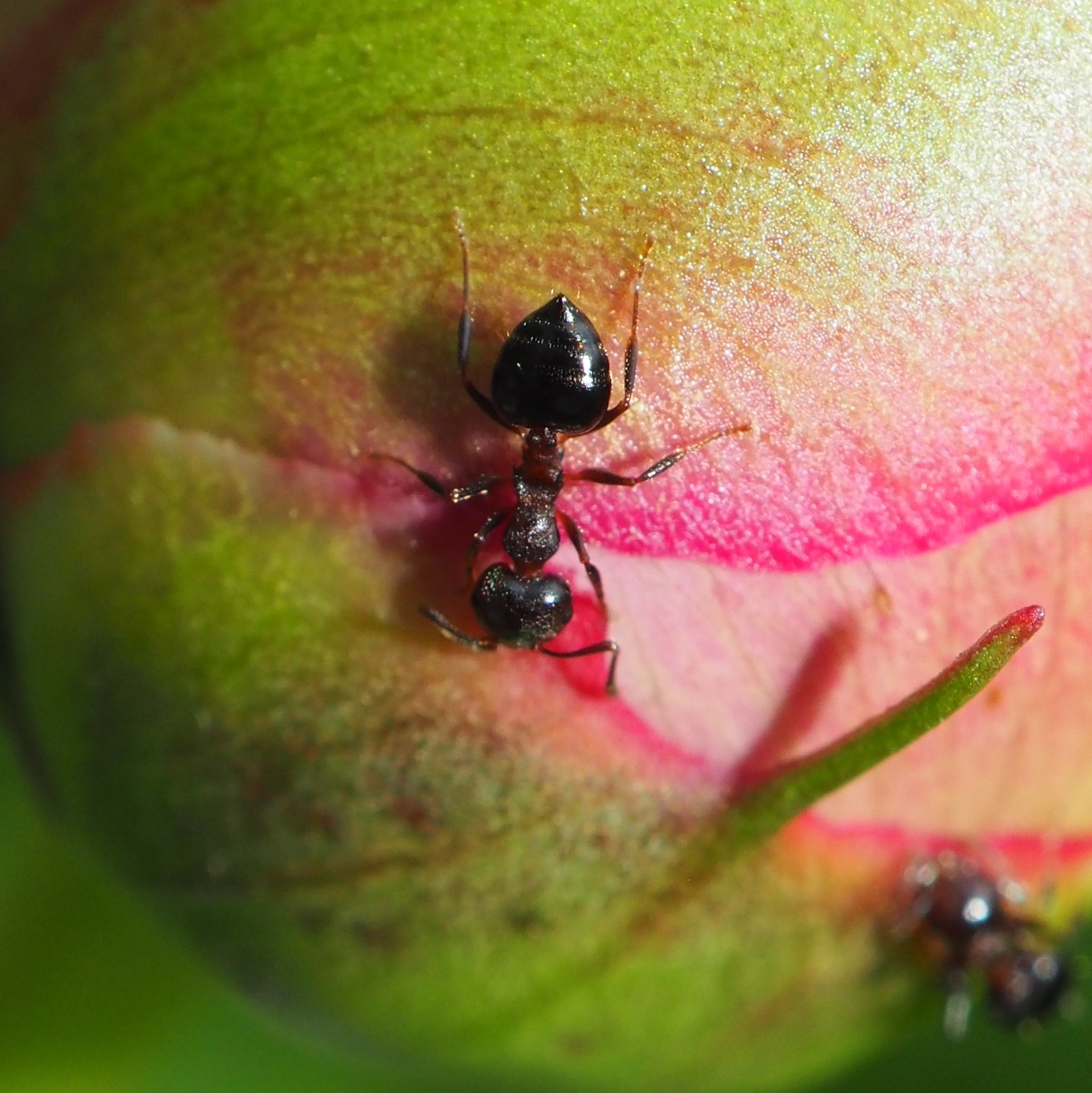
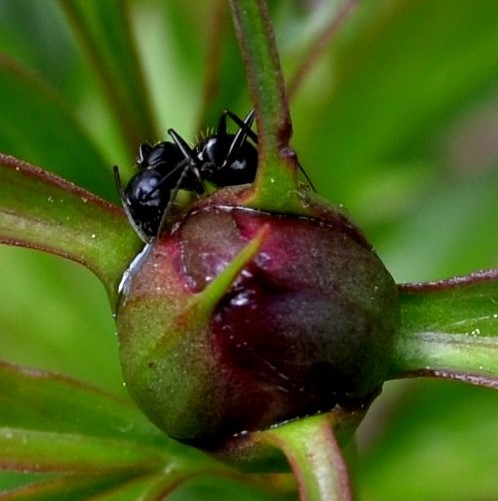
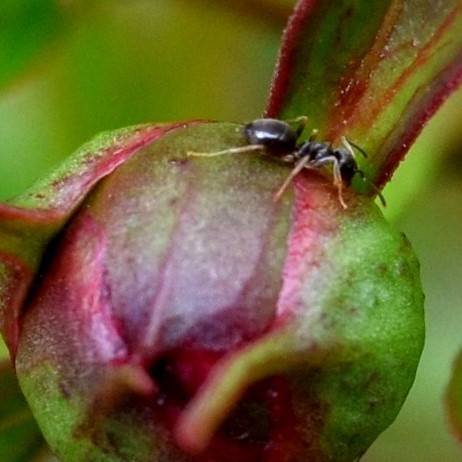
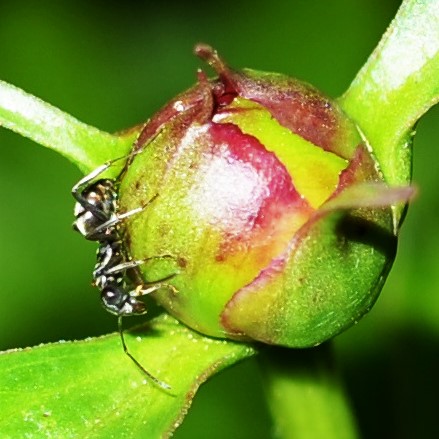
First, on the oak leaves, a probable Odorous House Ant, Tapinoma sessile, only about 1 mm long. Next, another view. Third, a Small Honey Ant.
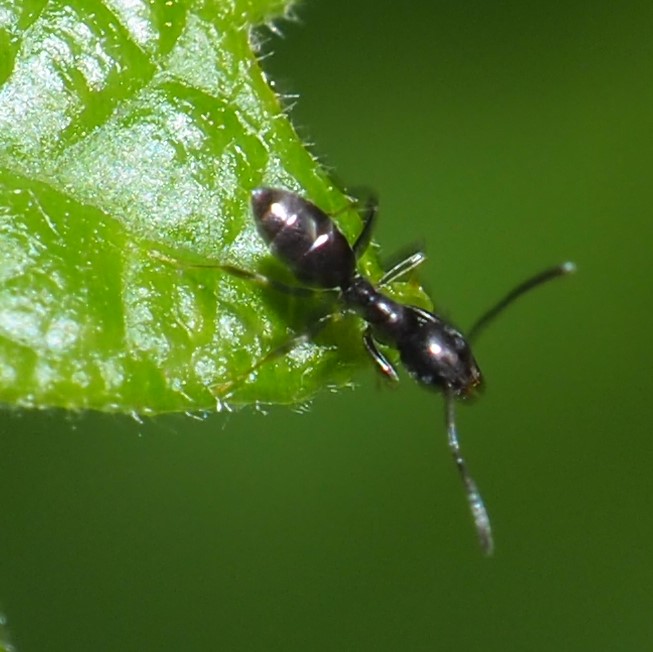
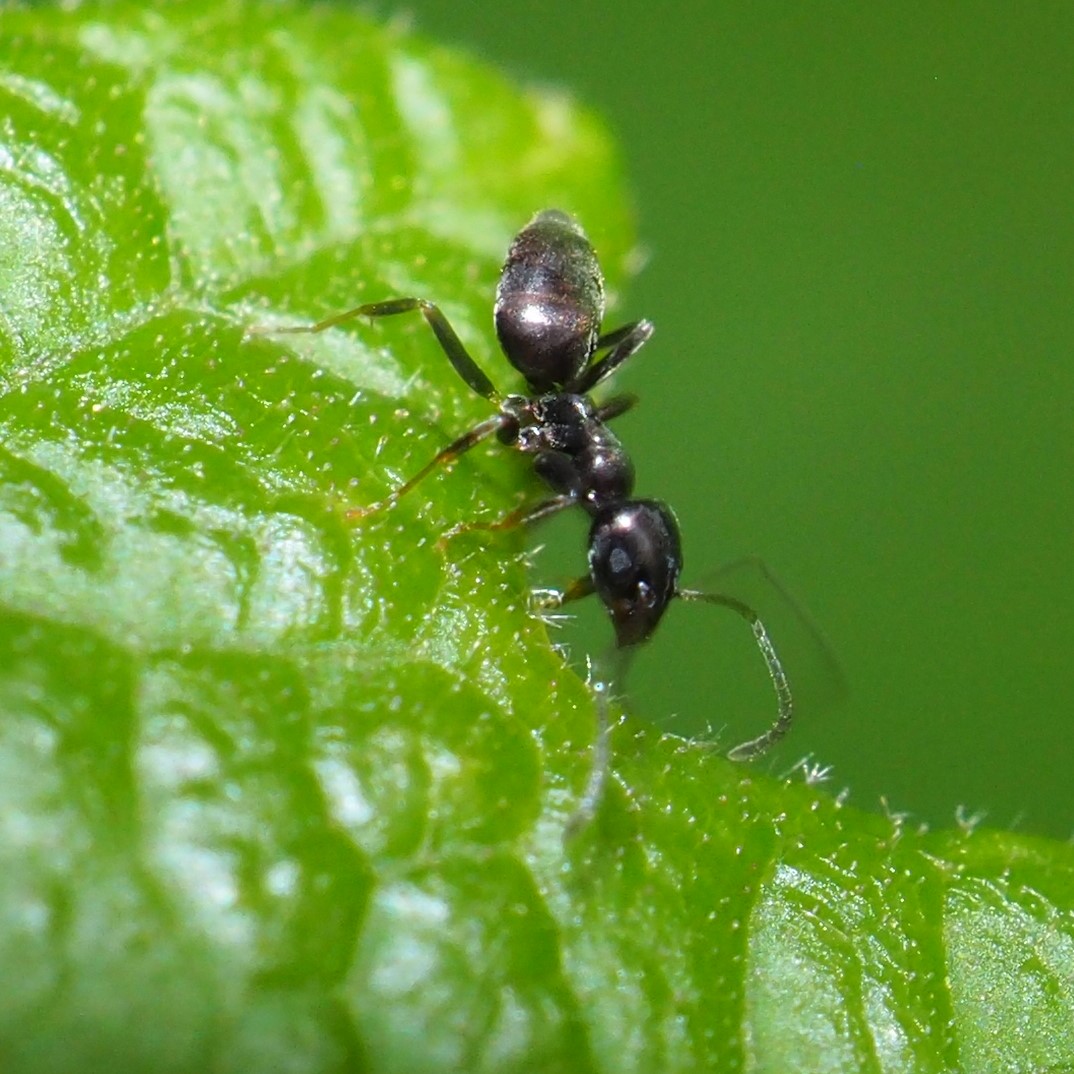
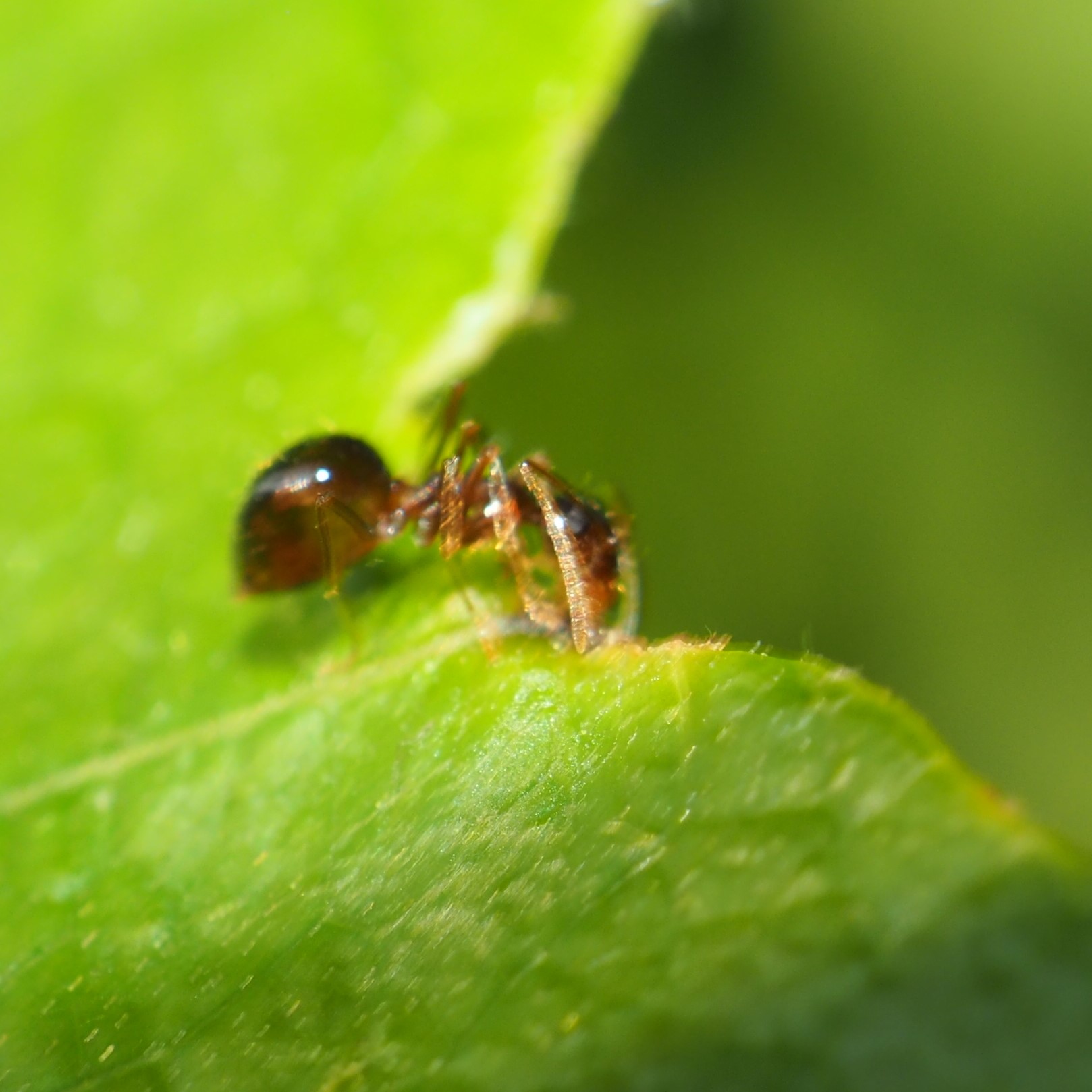
It is always an adventure out back looking over the oak saplings. Here is another kind of ant. It may be a Myrmicine Ant, a member of genus Myrmica. In all these, note the drooping gaster (abdomen, butt). I believe that is a hallmark of genus Myrmica. I just got word from Steven Wang that the middle one, which I just submitted this morning is the Punctured Ant, Myrmica punctiventris. The others are probably the same. :-)
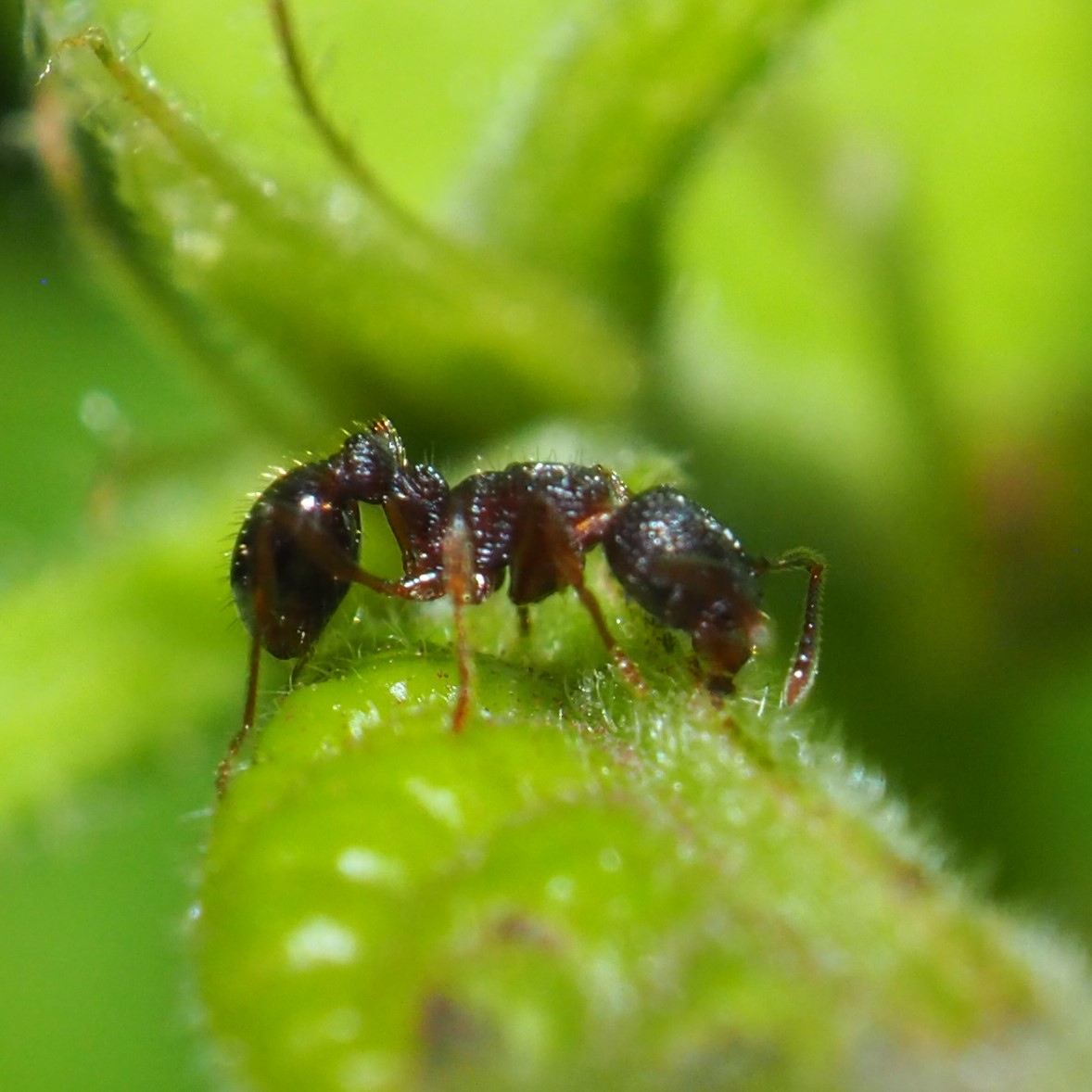
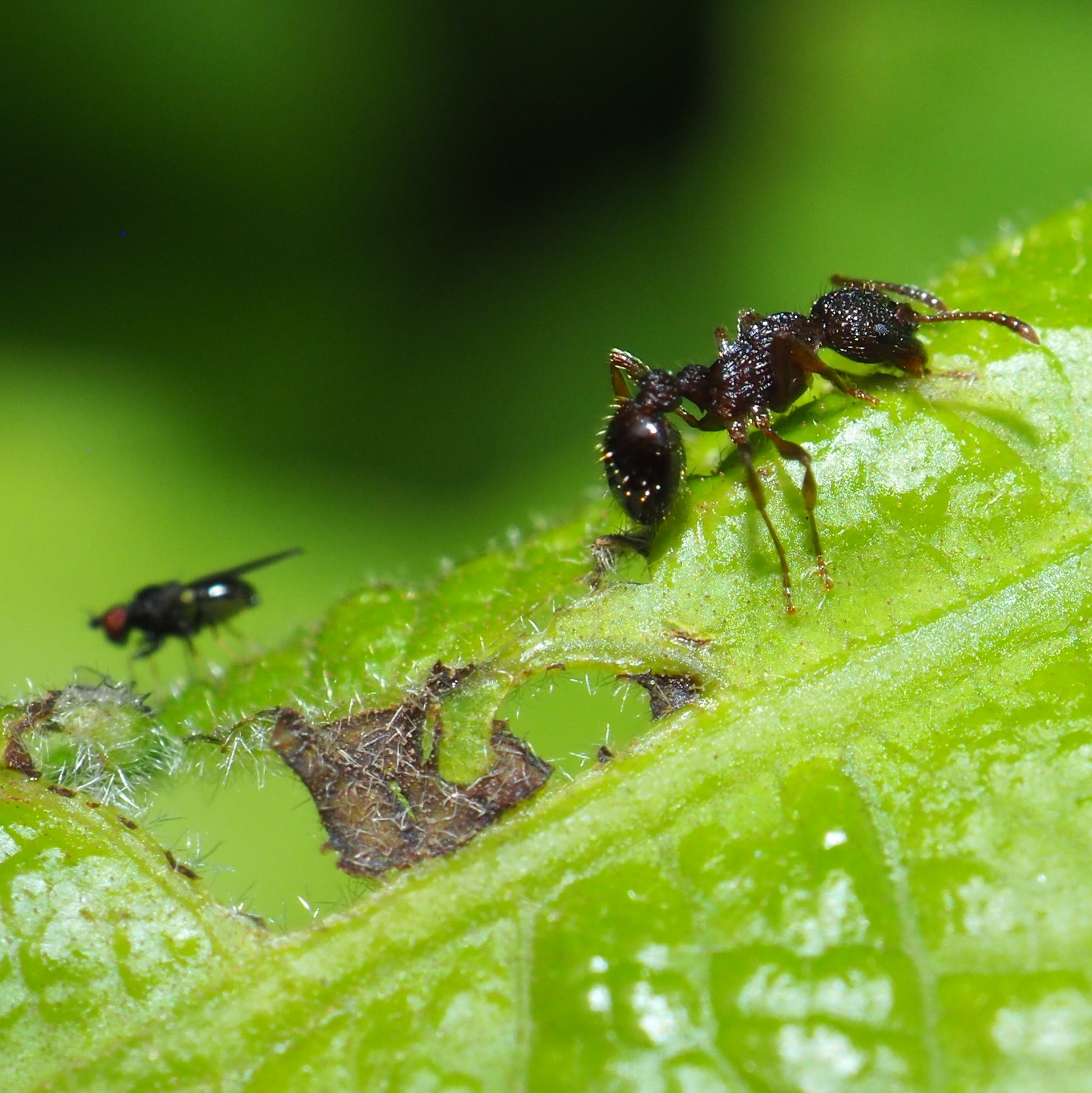
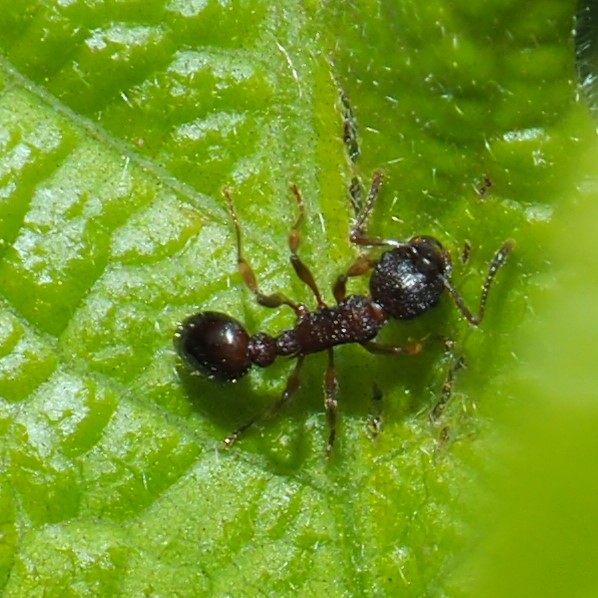
A couple more. Note the tiny insect off to the left in picture 1. Back to the area near the shop: this third image is of a tiny ant (about 1 mm) on a blade of grass. The ant was cooperative, the grass (thanks to the breeze) less so. It seems to have found something tasty.
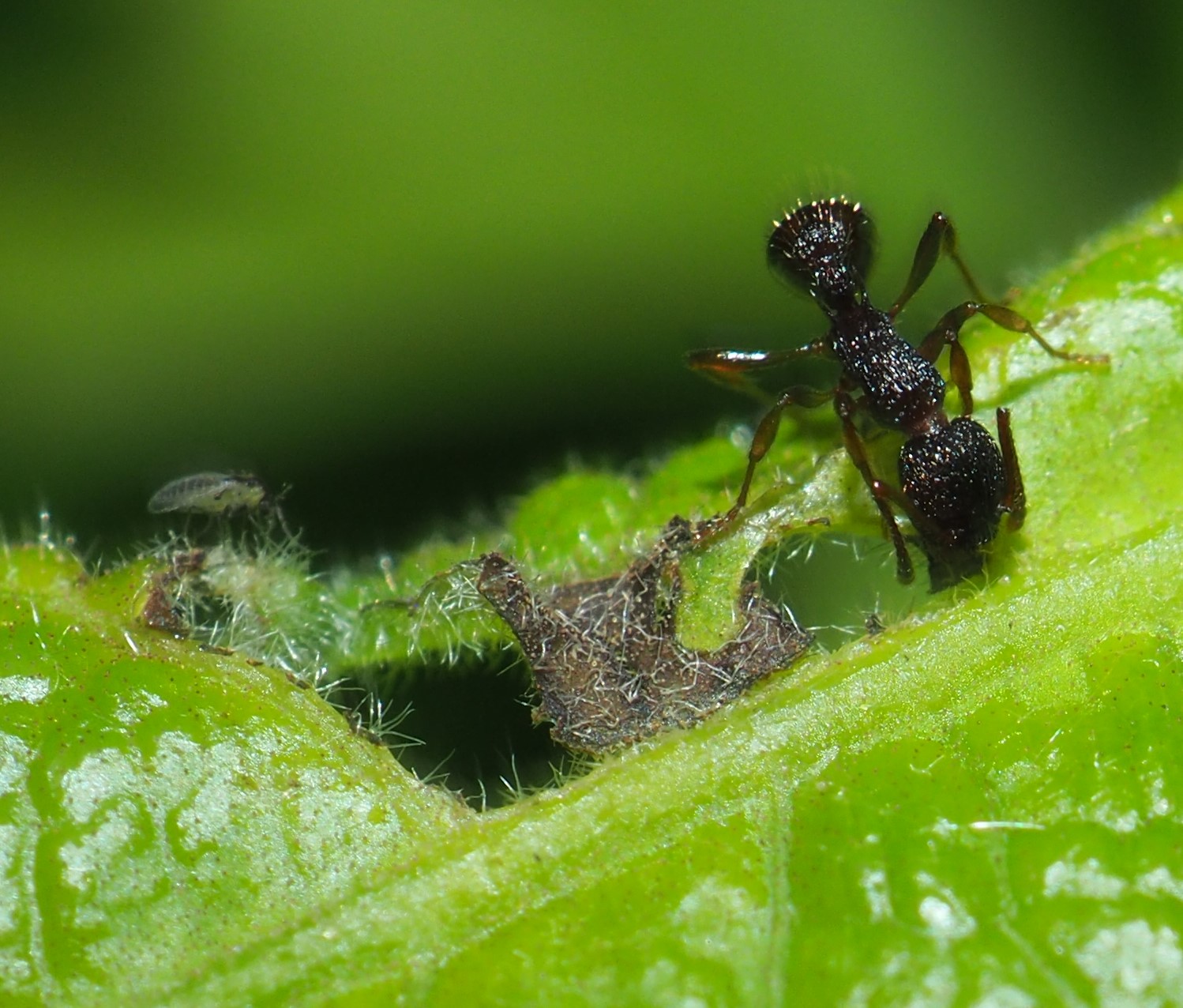
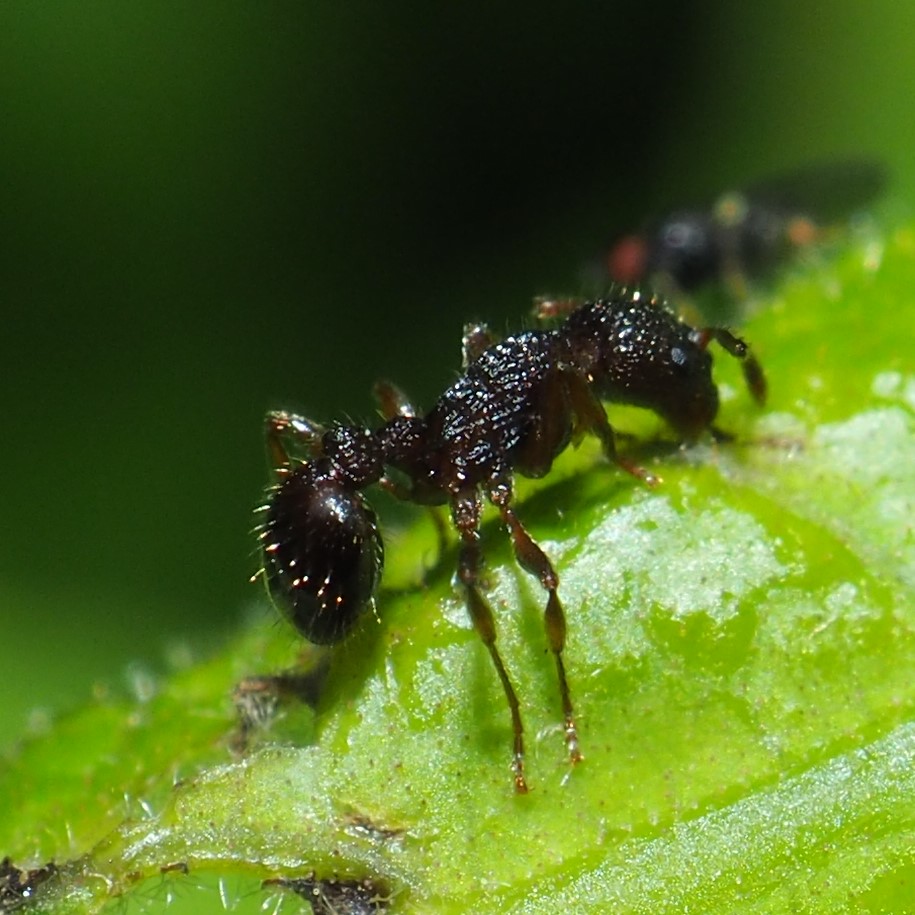
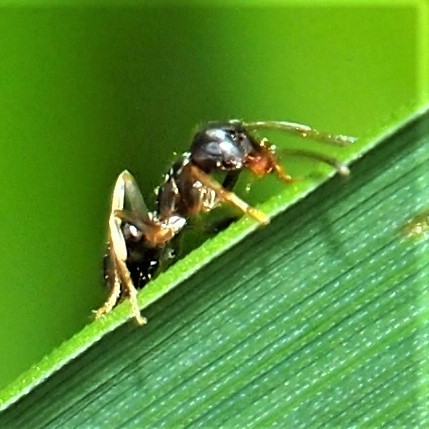
Barklice seem to have returned. Here is my favorite, Graphopsocus cruciatus, or as I like to call it, "Tiger". And here are two new or unidentified ones. If anyone recognizes either, please email me!
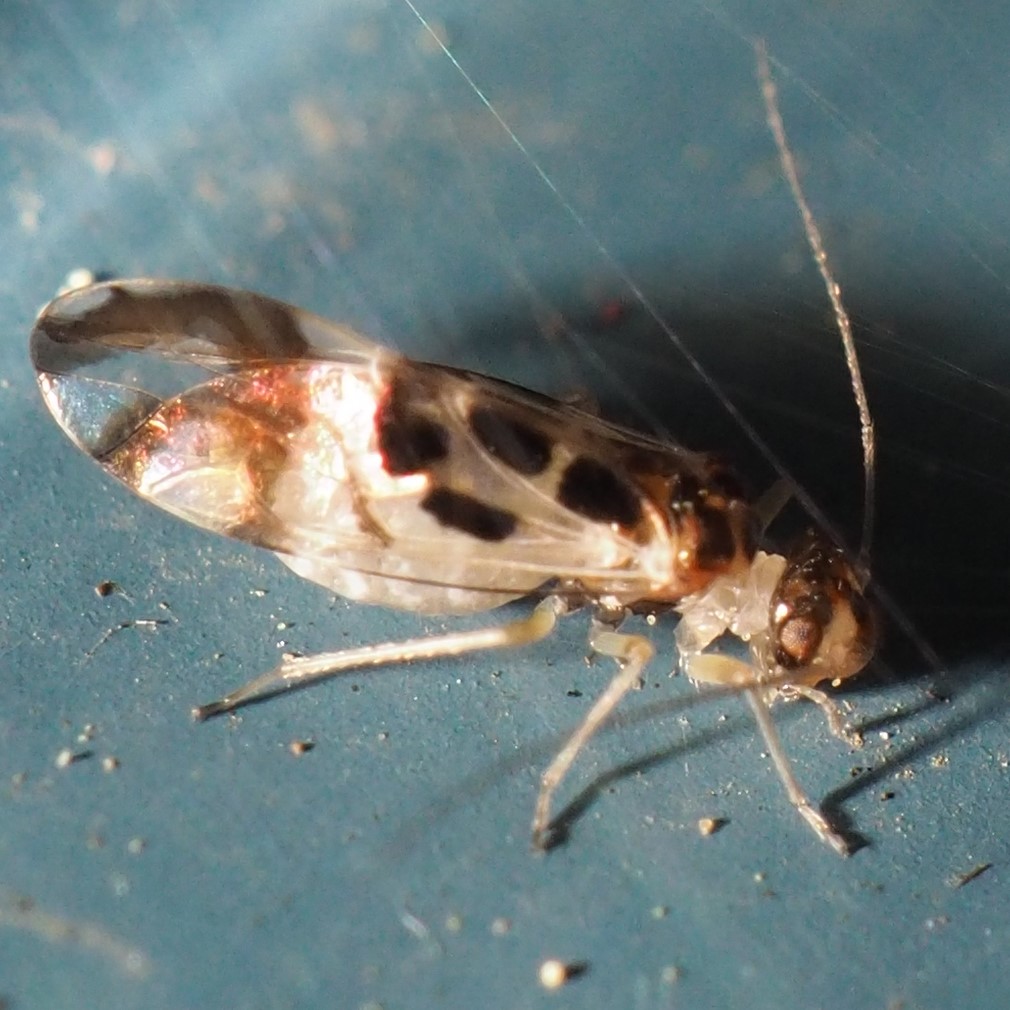
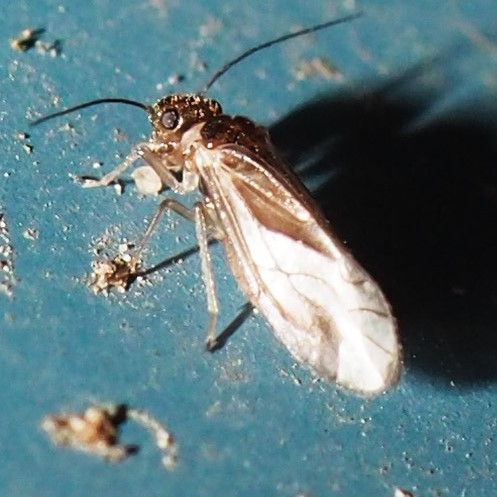
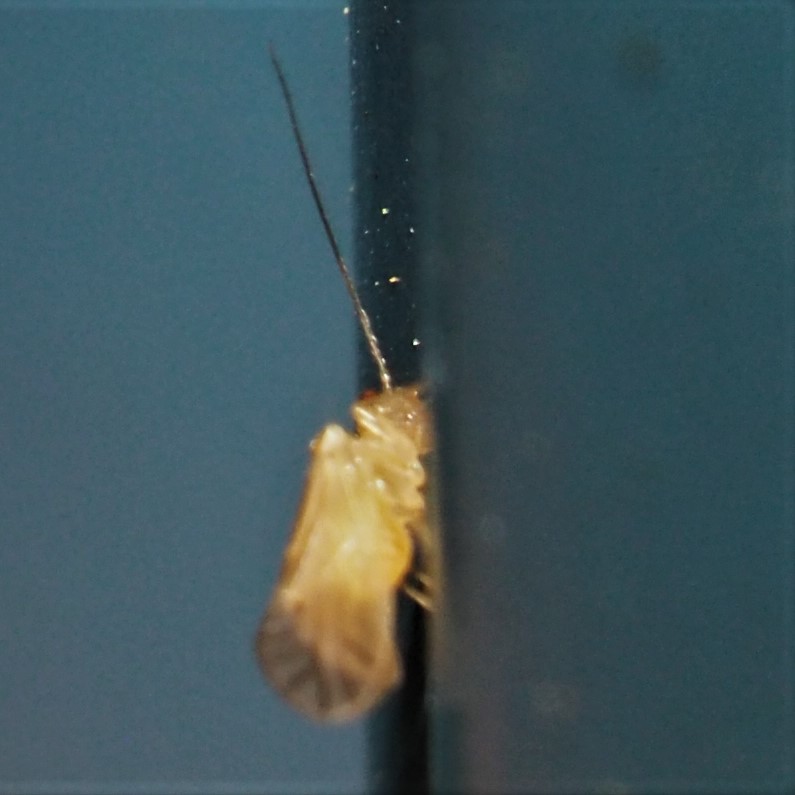
Beetles! Plenty of beetles for everyone. Here is a new one for me. It's a Brown Leaf Weevil (Phyllobius oblongus). Here's the back view. Third is another mystery. It looks like everyone's idea of a plain Black Beetle...
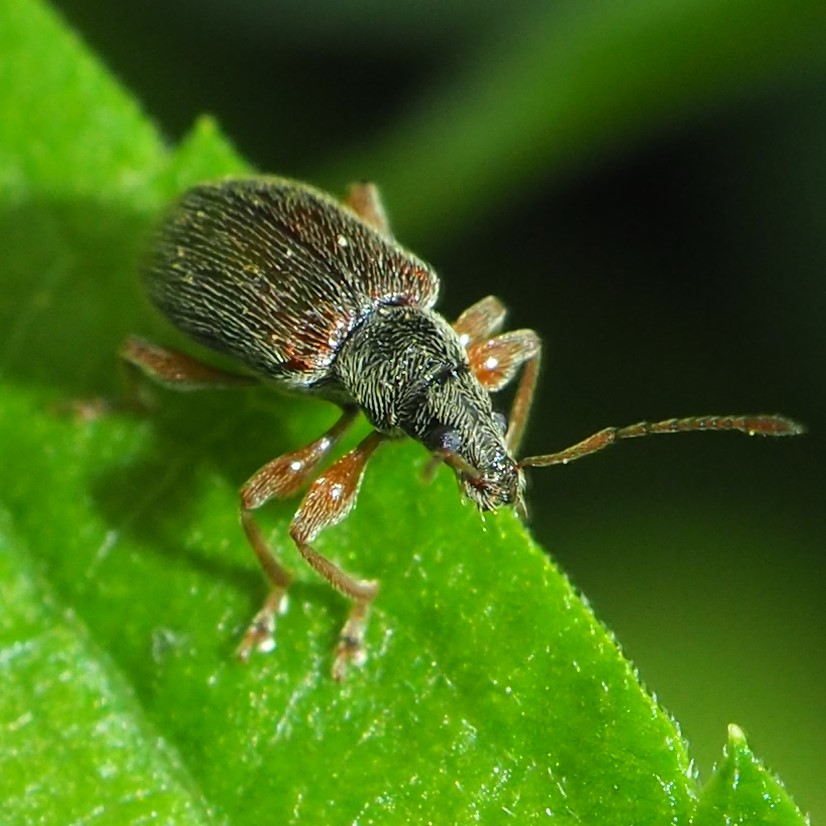
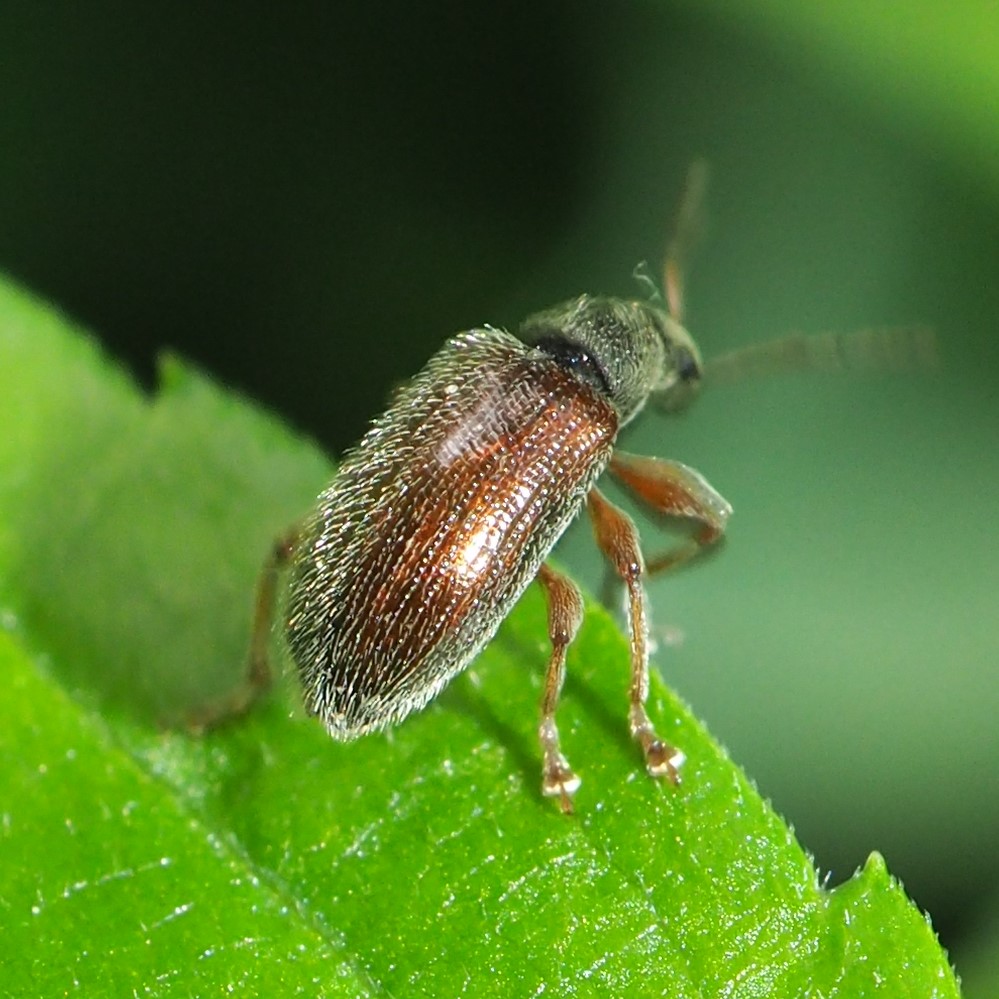
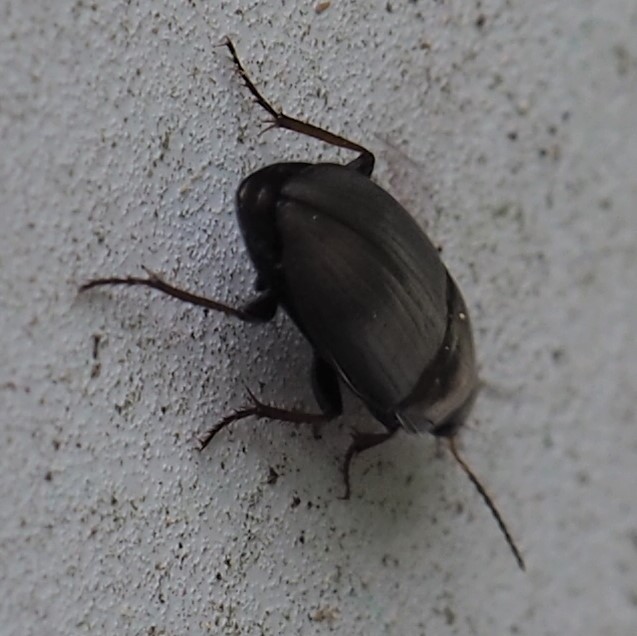
We have probably seen this red beetle with the great round thorax before. The second one, Notoxus desertus (an ant-like beetle), we only saw a couple of weeks ago. The third seems to me to be a new entry, and the ID app in iNat suggests genus Paria. Number 4 is another mystery.
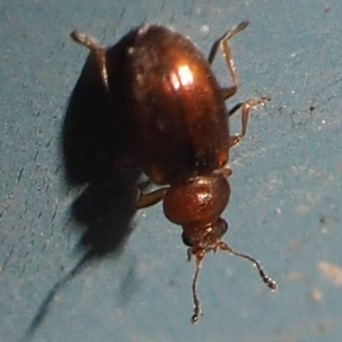
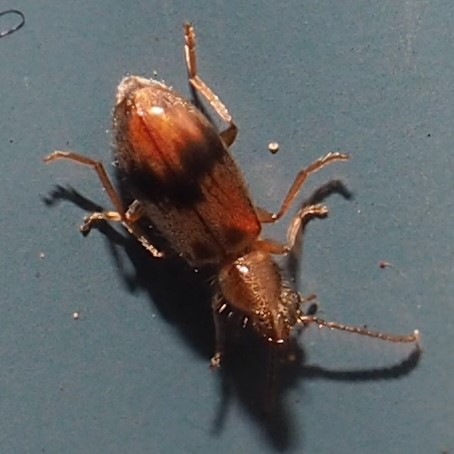
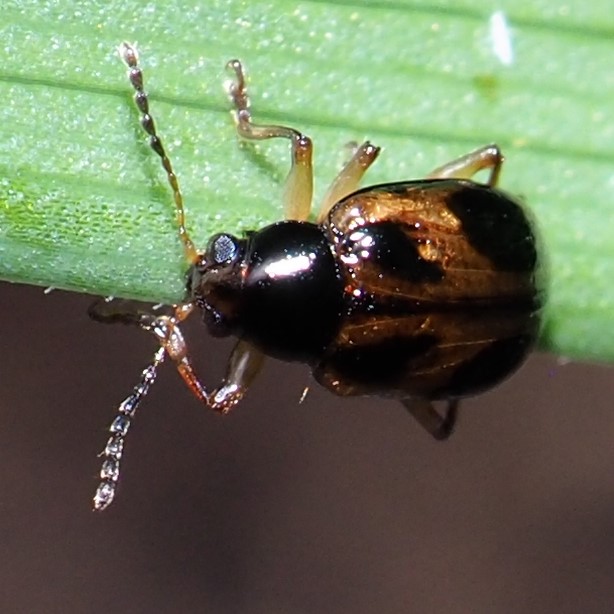
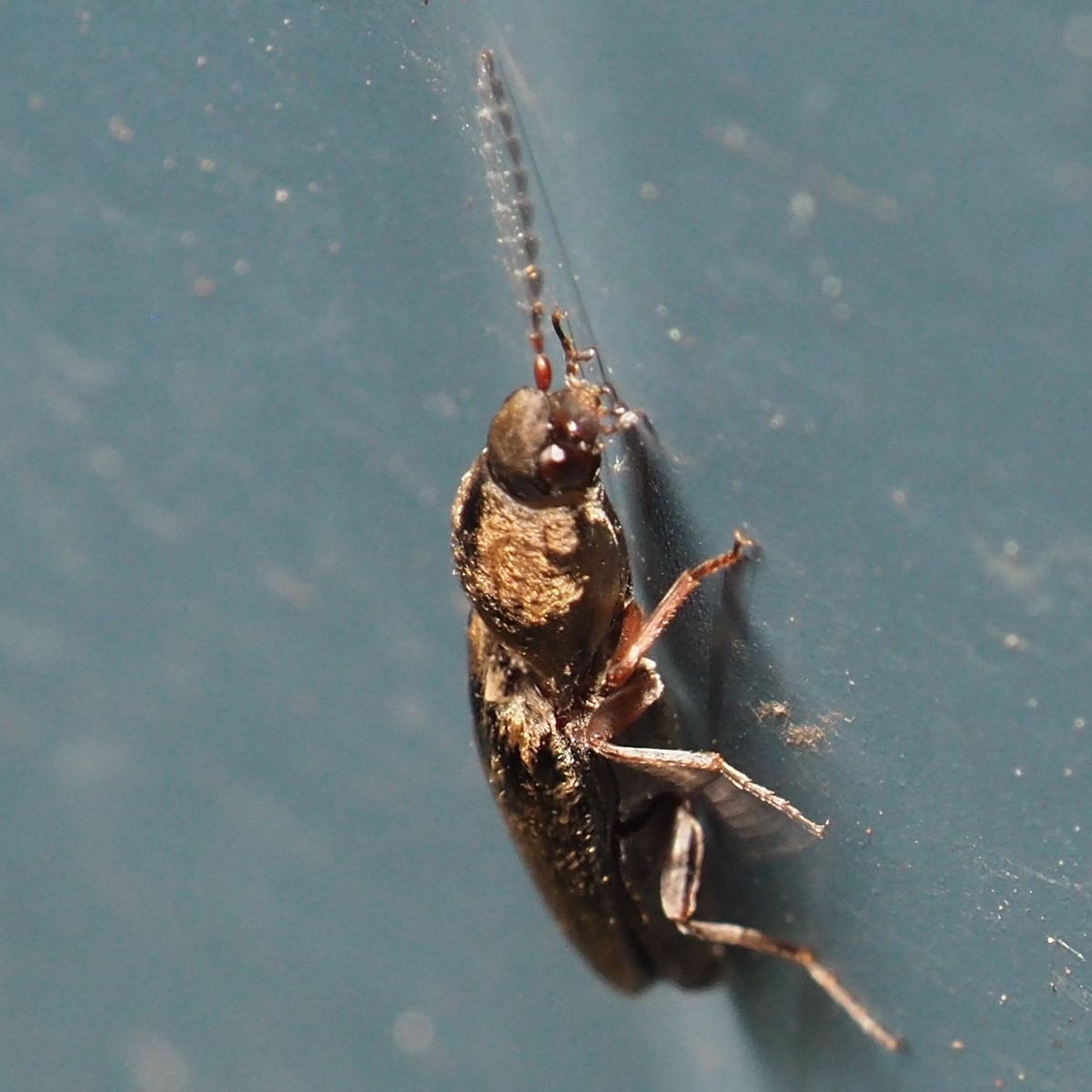
These little beetles with the red necks are from the genus Oulema, and were quite thick on the Tiger Lilies. (As have been the Red Lily Leaf Beetles, which are trying to decimate the population (whatever "decimate" means in your dialect).) If you remember the Rove Beetles are the ones with the very short hard wings (elytra), you might have guessed that this second creature would be one, and you would be right. It belongs to the genus Sepedophilus. This is the weirdest Rove Beetle I've ever seen! Last is one that we've seen recently, from genus Omosita. It always makes me think it has been through a power-wash since it LOOKS as if its color has been rubbed off in places.

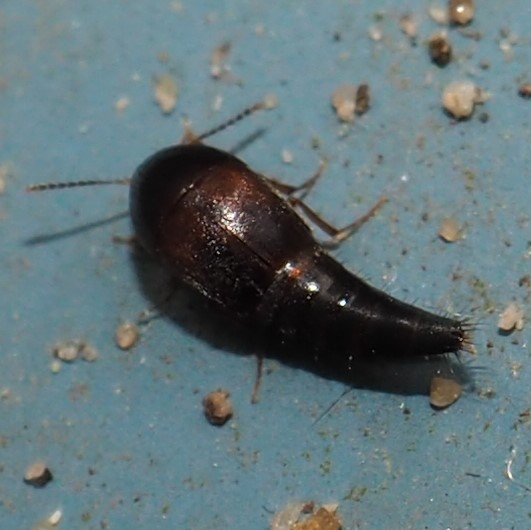
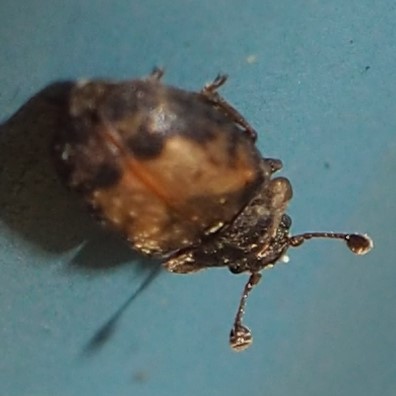
Finally, two more weevils. The first is unidentified as there are just so MANY grey weevils of about this size and shape. The second is, of course, the ubiquitous Redbud Bruchid.
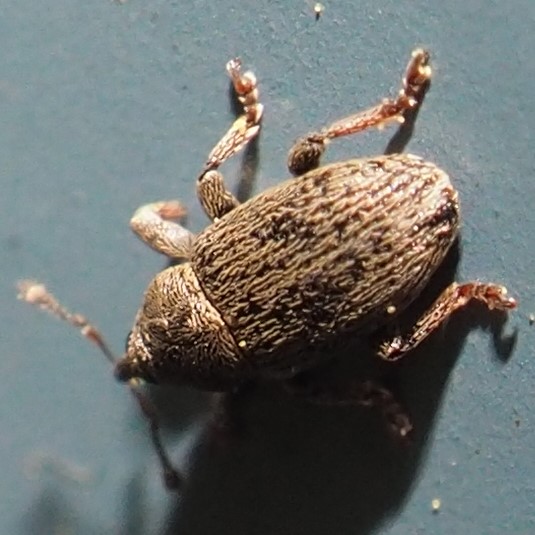
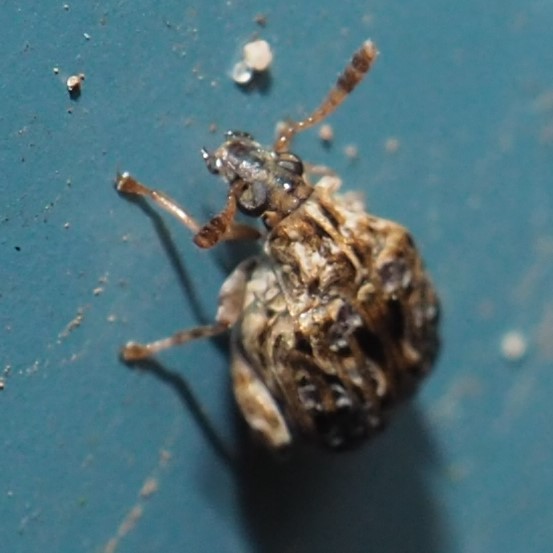
On to the bugs, who are becoming more abundant as summer comes on. This pretty little red and black one is the Twice-stabbed Stink Bug, Cosmopepla lintneriana. Unfortunately, I missed as I tried to grab and mash the Brown Marmorated Stink Bug. They're Baaaack....
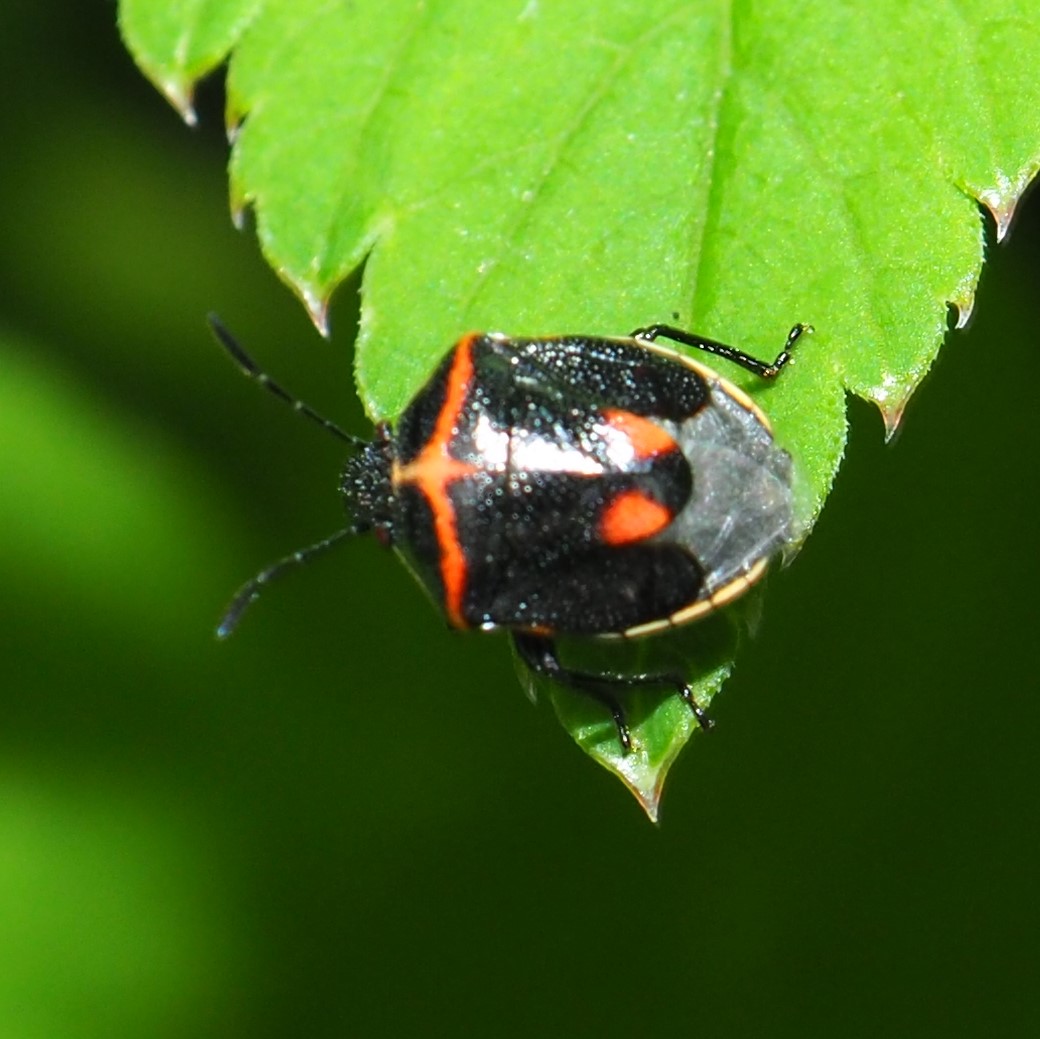
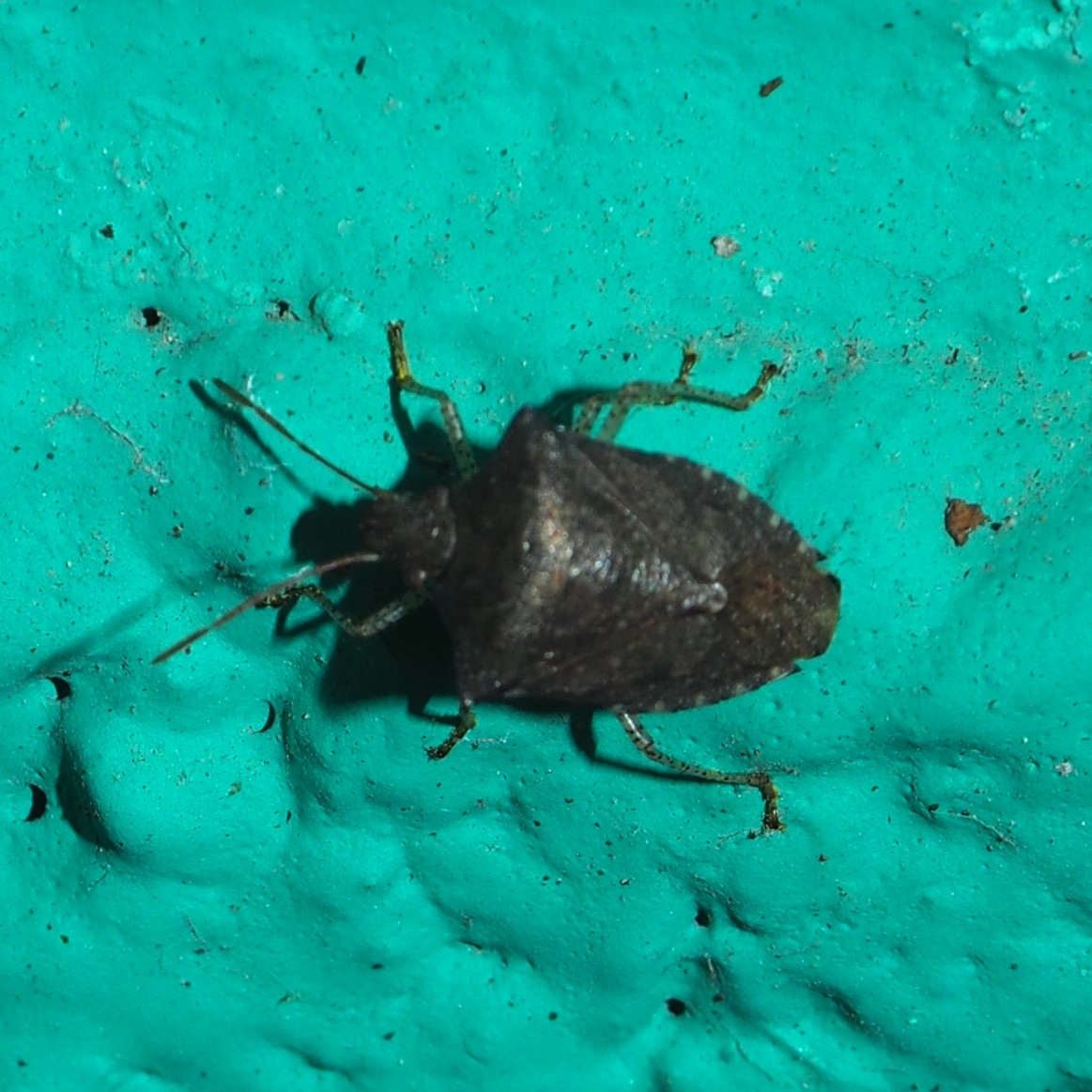
Here is a new black bug, very handsome and mysterious, but I haven't found out anything about it. But the next two images are of the Assassin Bug Zelus luridus, one on the shop wall and the other on a gorgeous green background. Watch the head on the second one - to me it seems to flip back and forth.
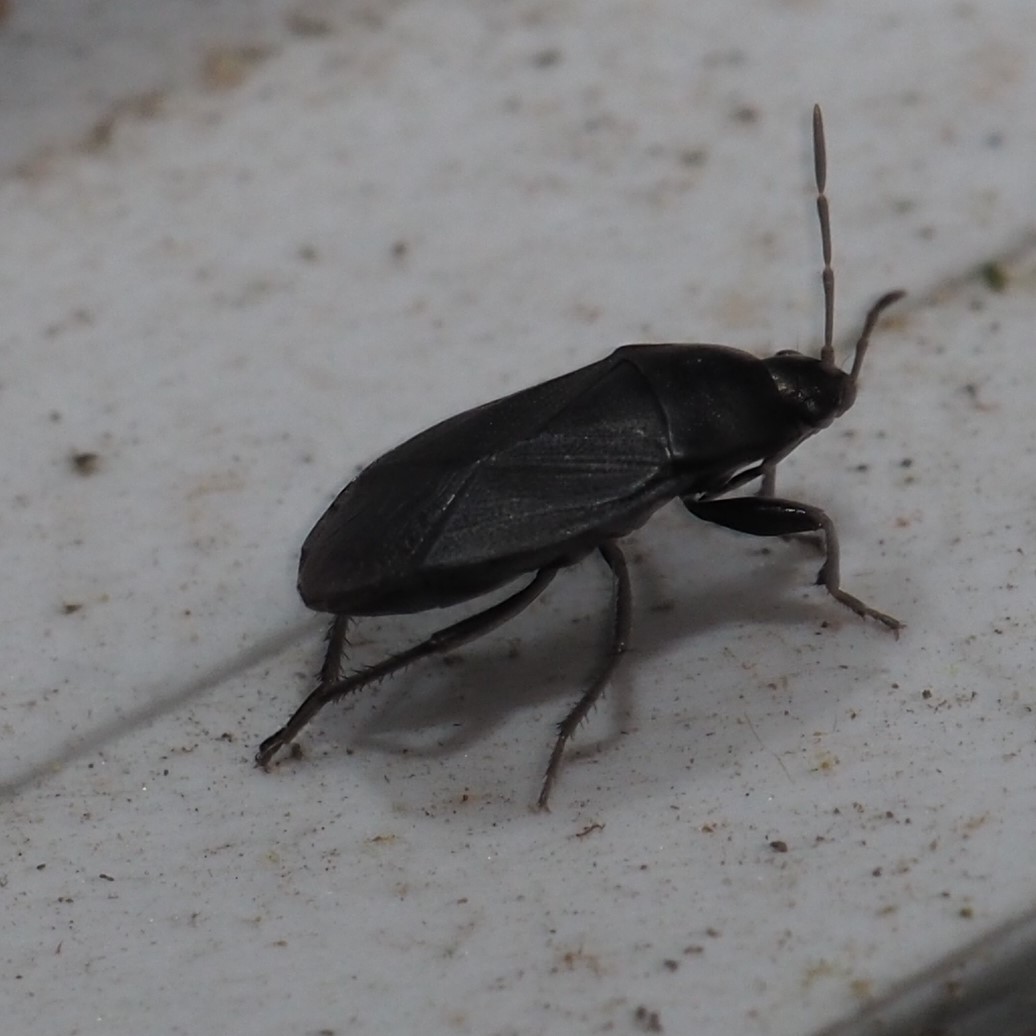
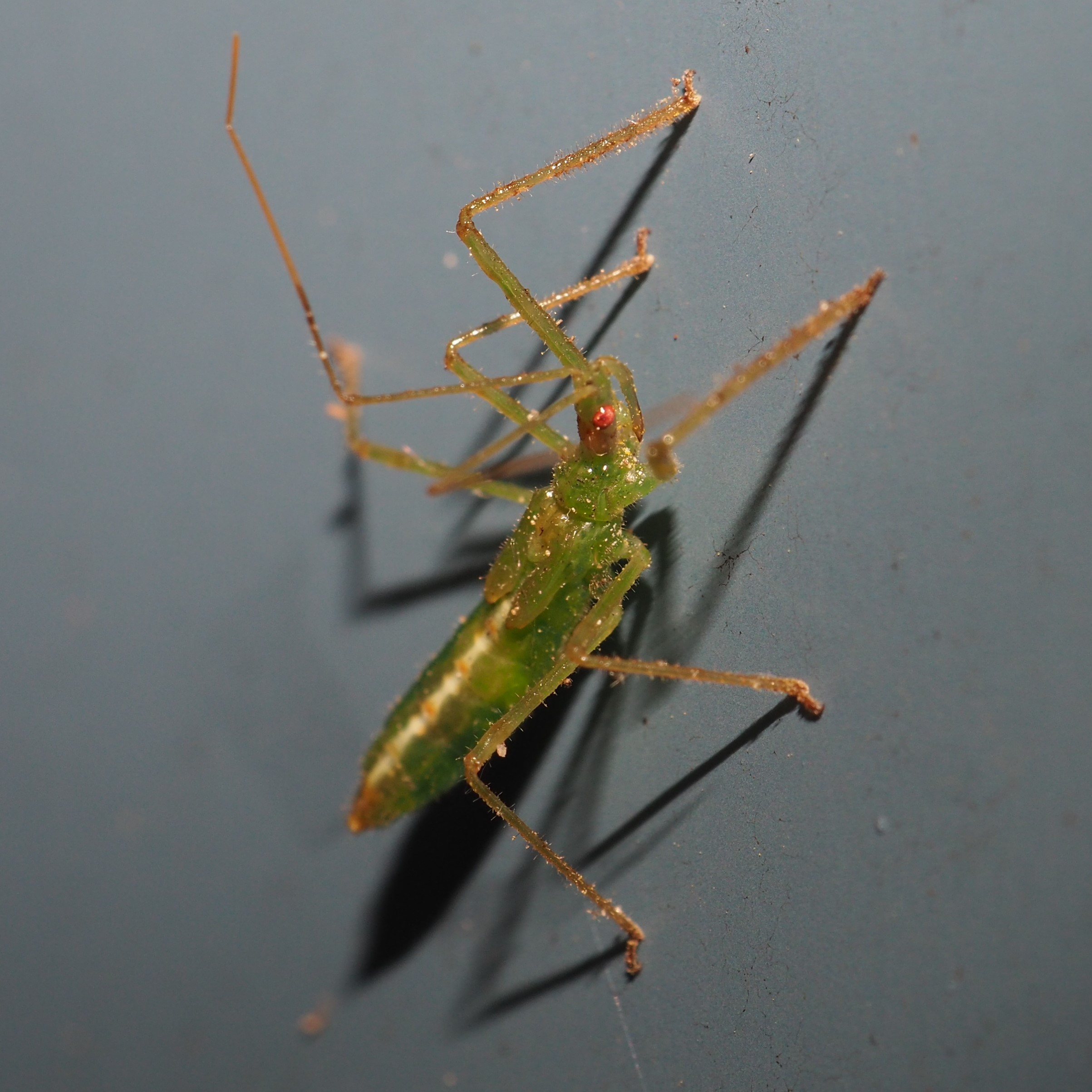
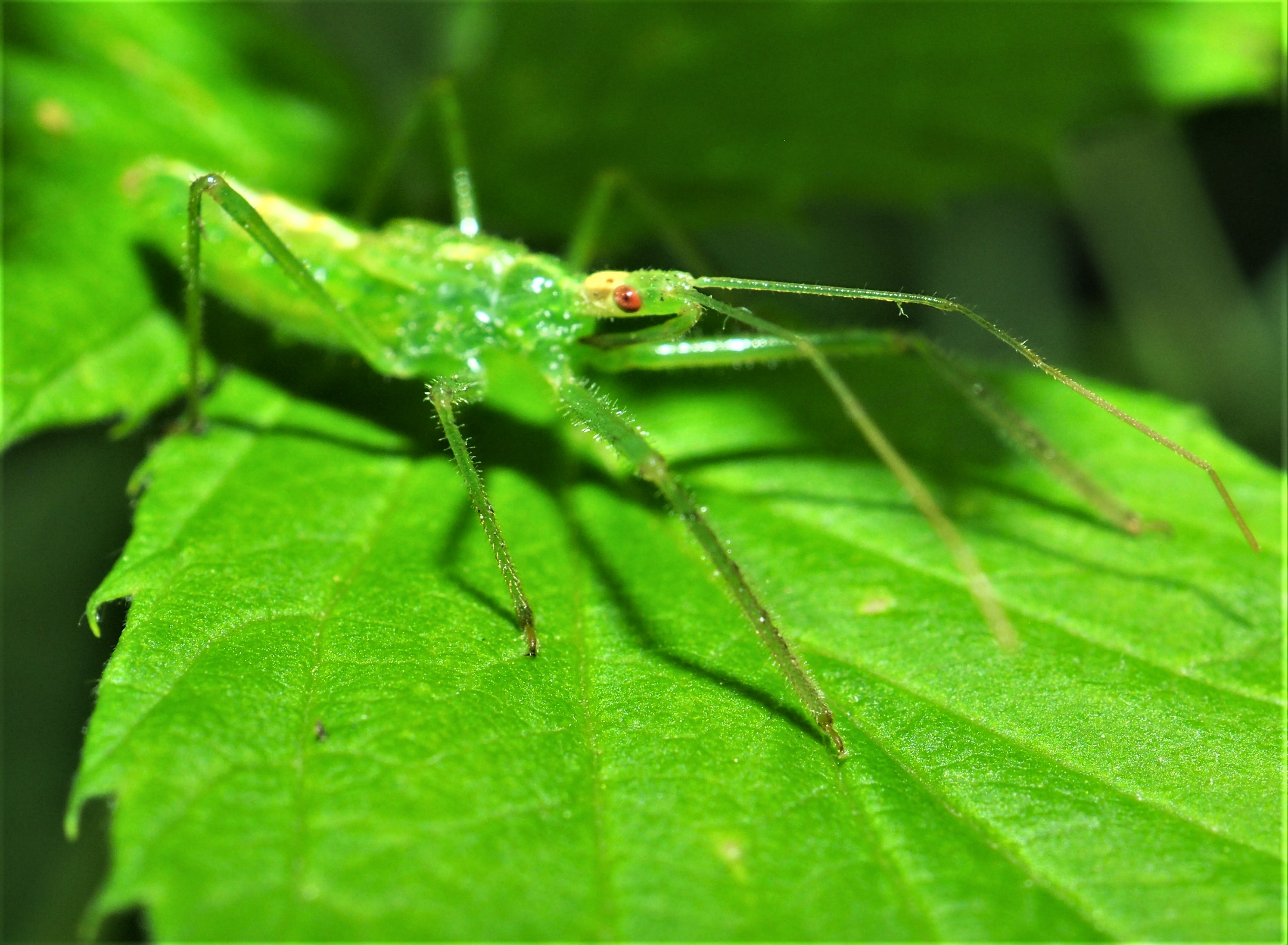
There were two pictures that were so bad I have no idea what they are, but here. If you are very sensitive to awful pictures, please go on to the next bits. The third picture may actually be a bug or a beetle. To me, it looked like a dropping from some creature onto a maple leaf. But now I think I see a leg underneath and maybe a head jutting out the right side.
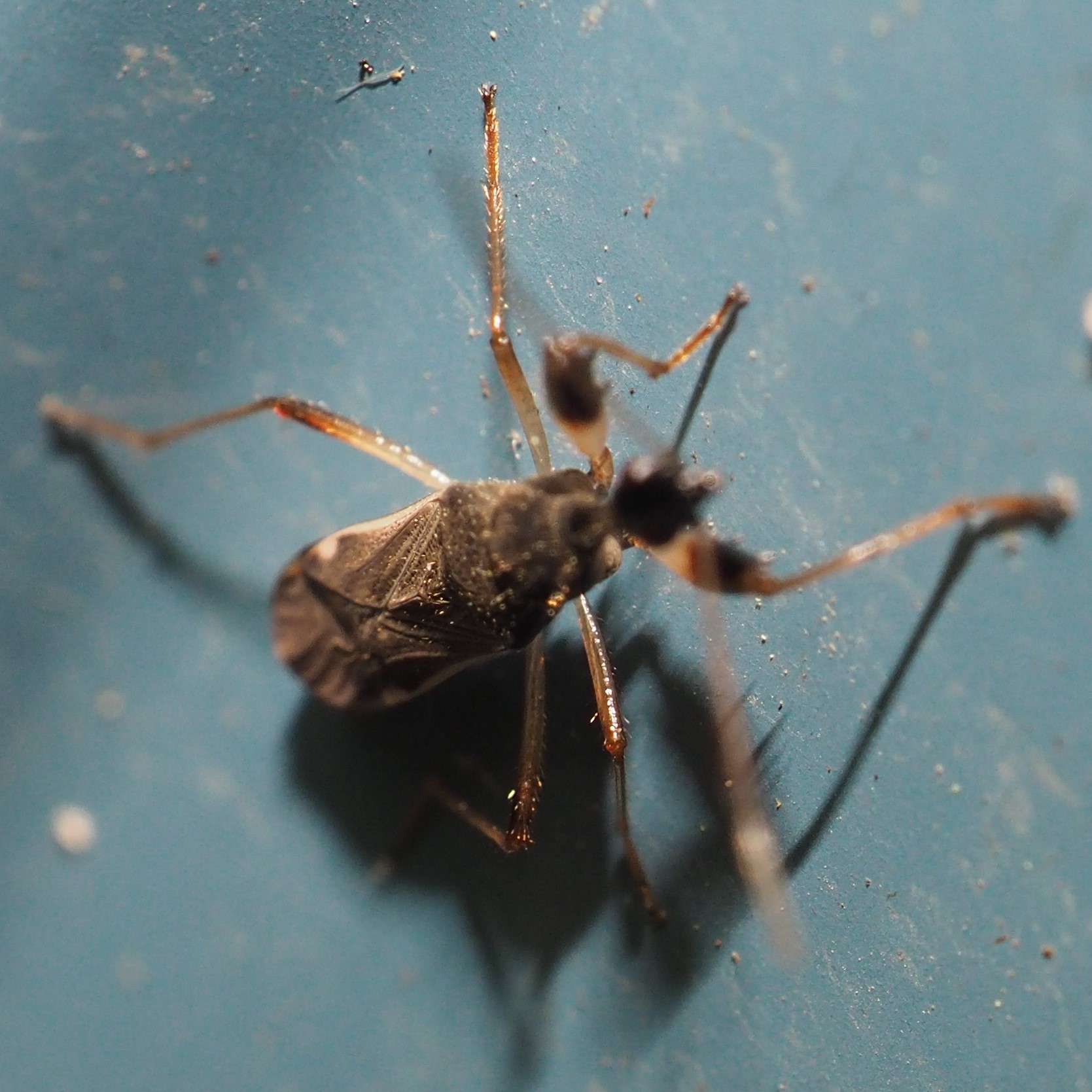
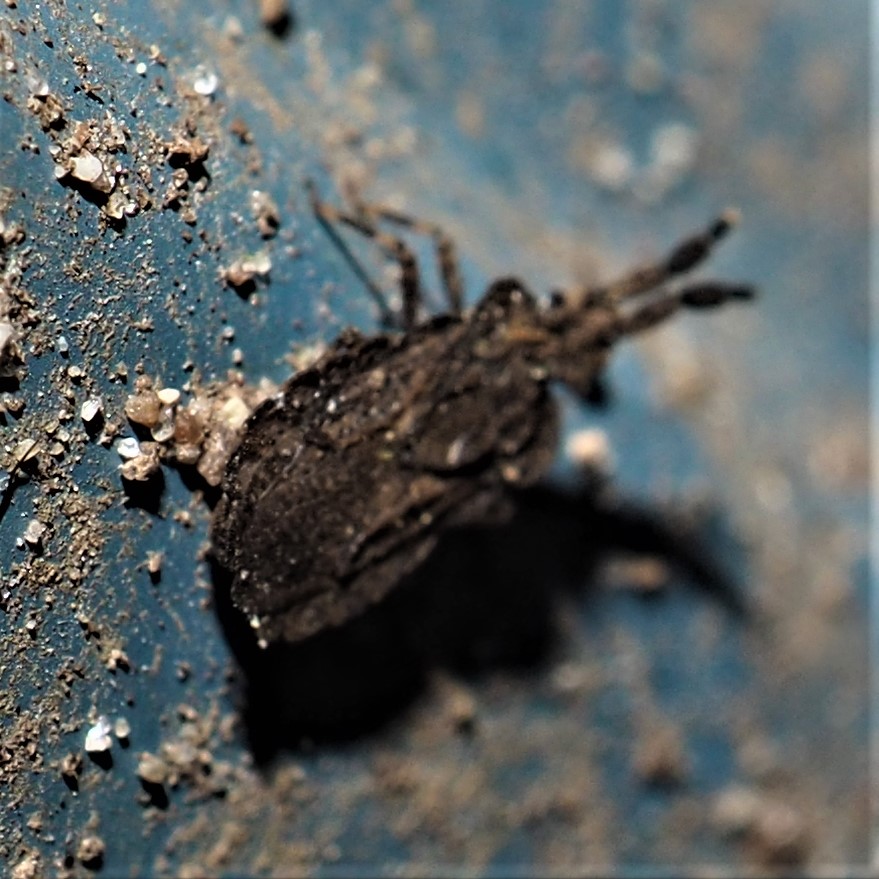
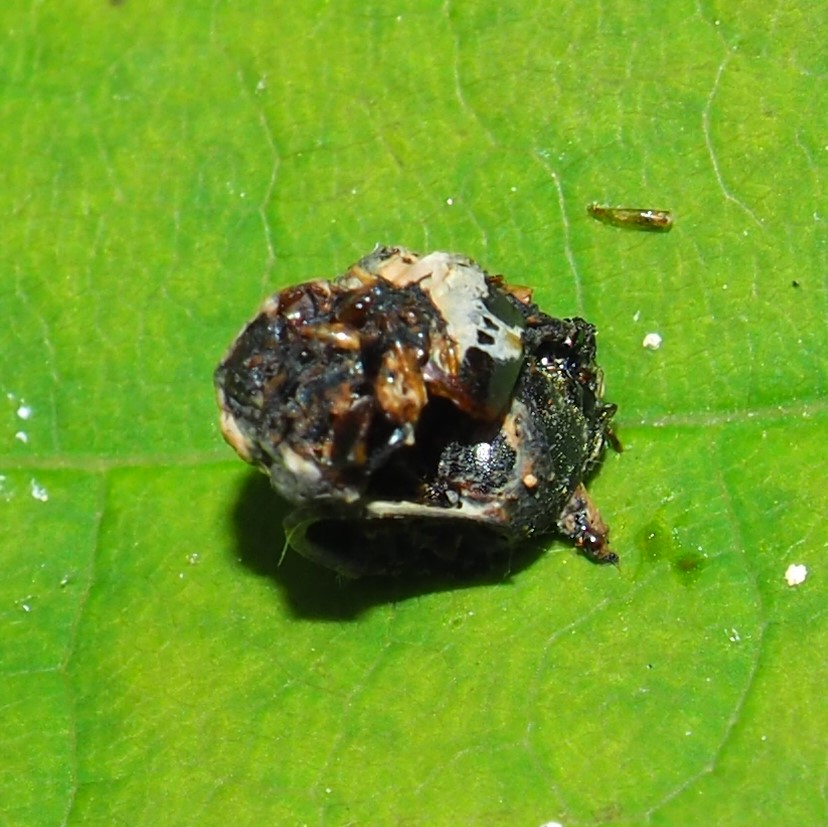
Let's cleanse our eyes with a bunch of leafhoppers. They are back too. The first one is probably the most common in my yard, at least this week. The second shows some of the secret patterning on its head region. The third also has an interesting face.
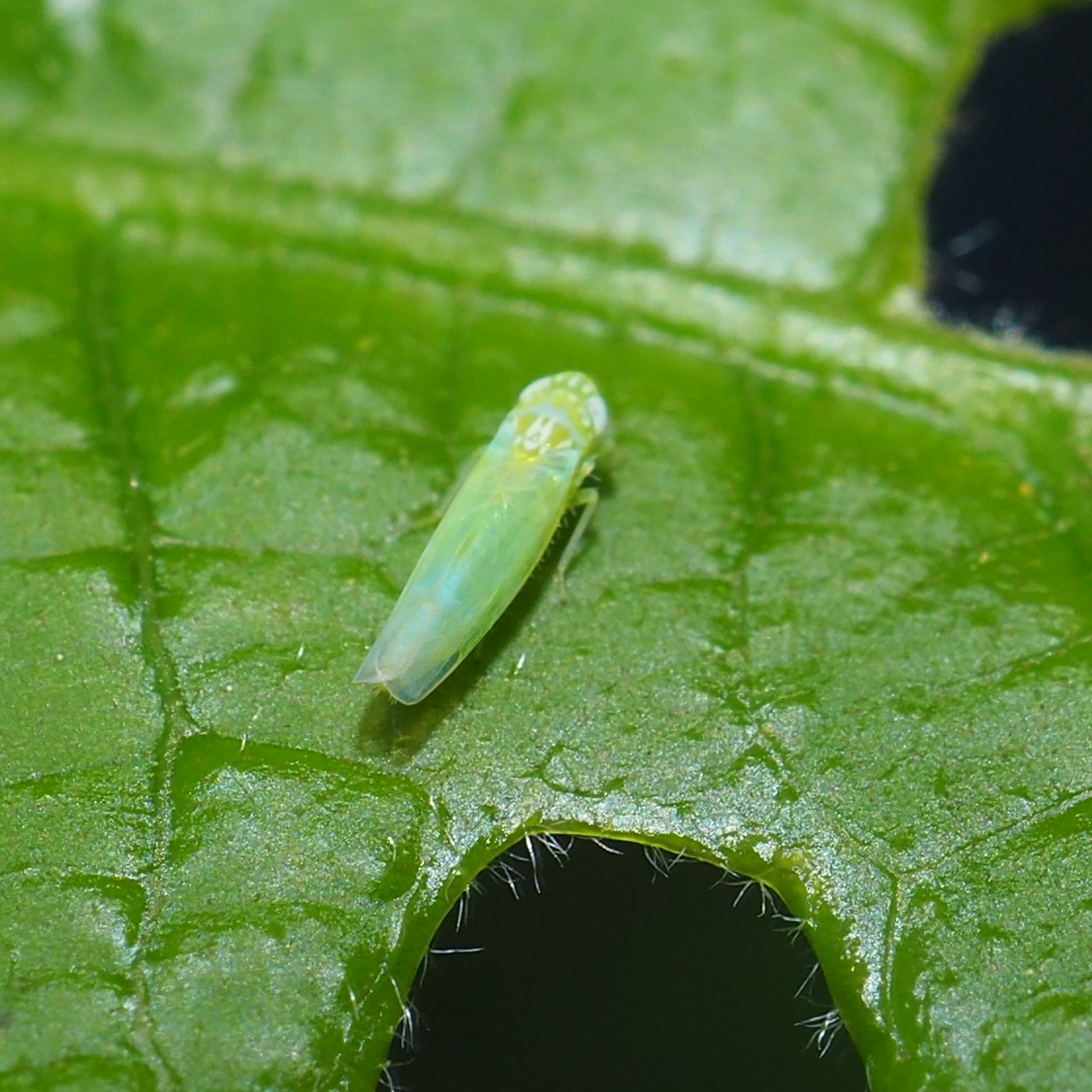
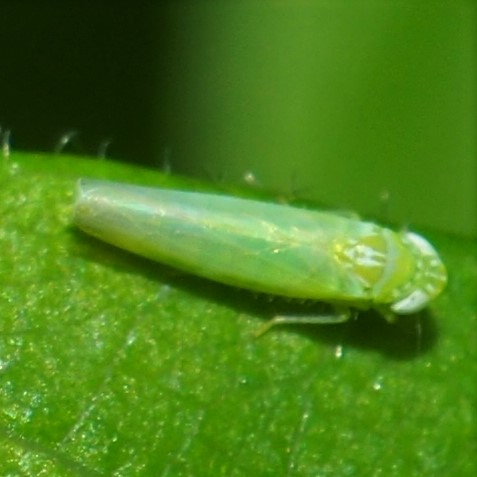
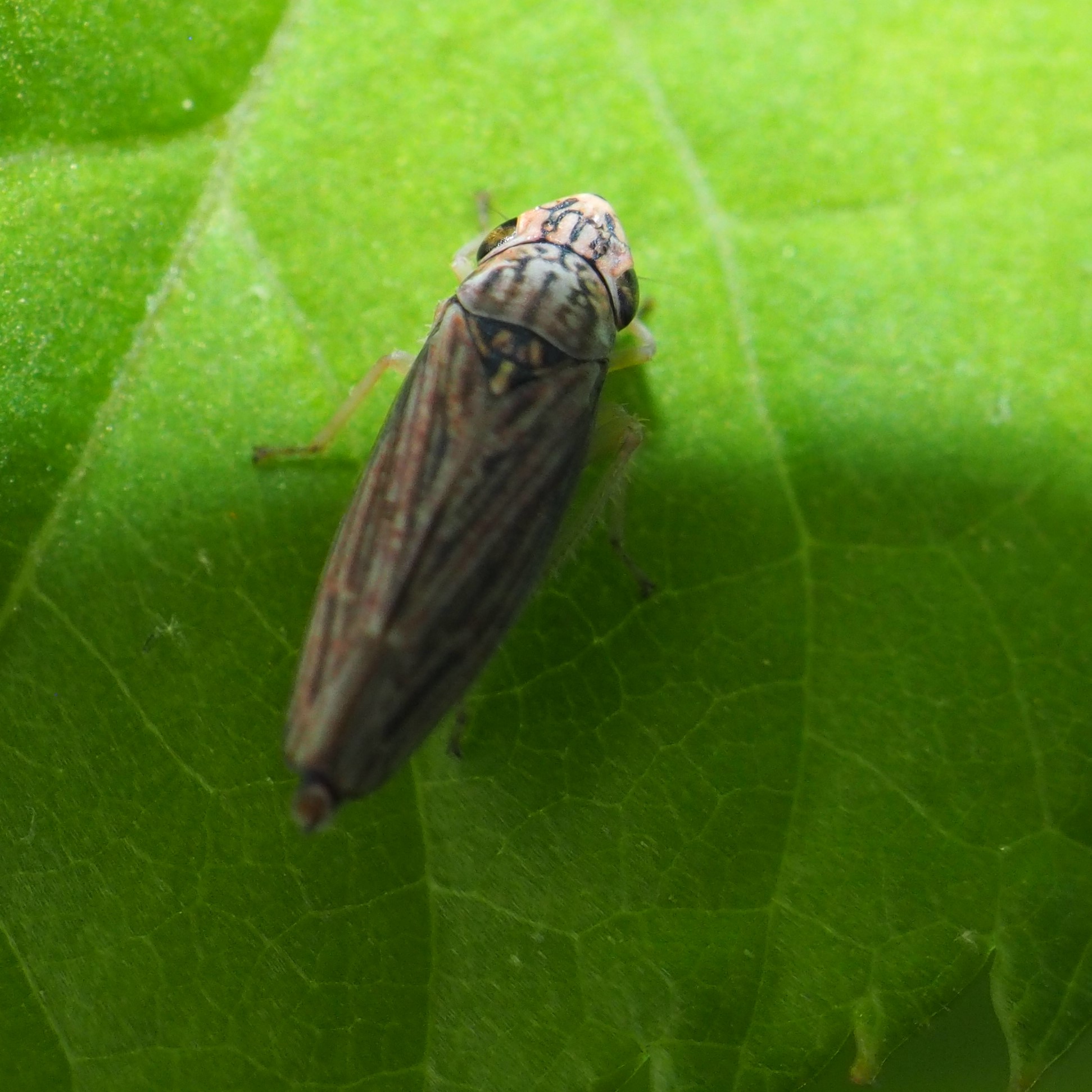
This first one is a real mystery when viewed from the side, which is all it meant to show us before it hopped and flew away. The creature in the middle picture was a shock. I thought it might be some kind of planthopper, but it turns out to be the nymph of a leafhopper. Number 2 was identified as belonging to Subfamily Megophthalminae, one of whose members is (Number 3) the Four-spotted Clover Leafhopper, Agallia quadripunctata, a very common leafhopper around here. But if #3 is common, why have I so rarely seen something like #2? Well, I don't know but it must be good at hiding. This particular one was found dangling from a spider's web.
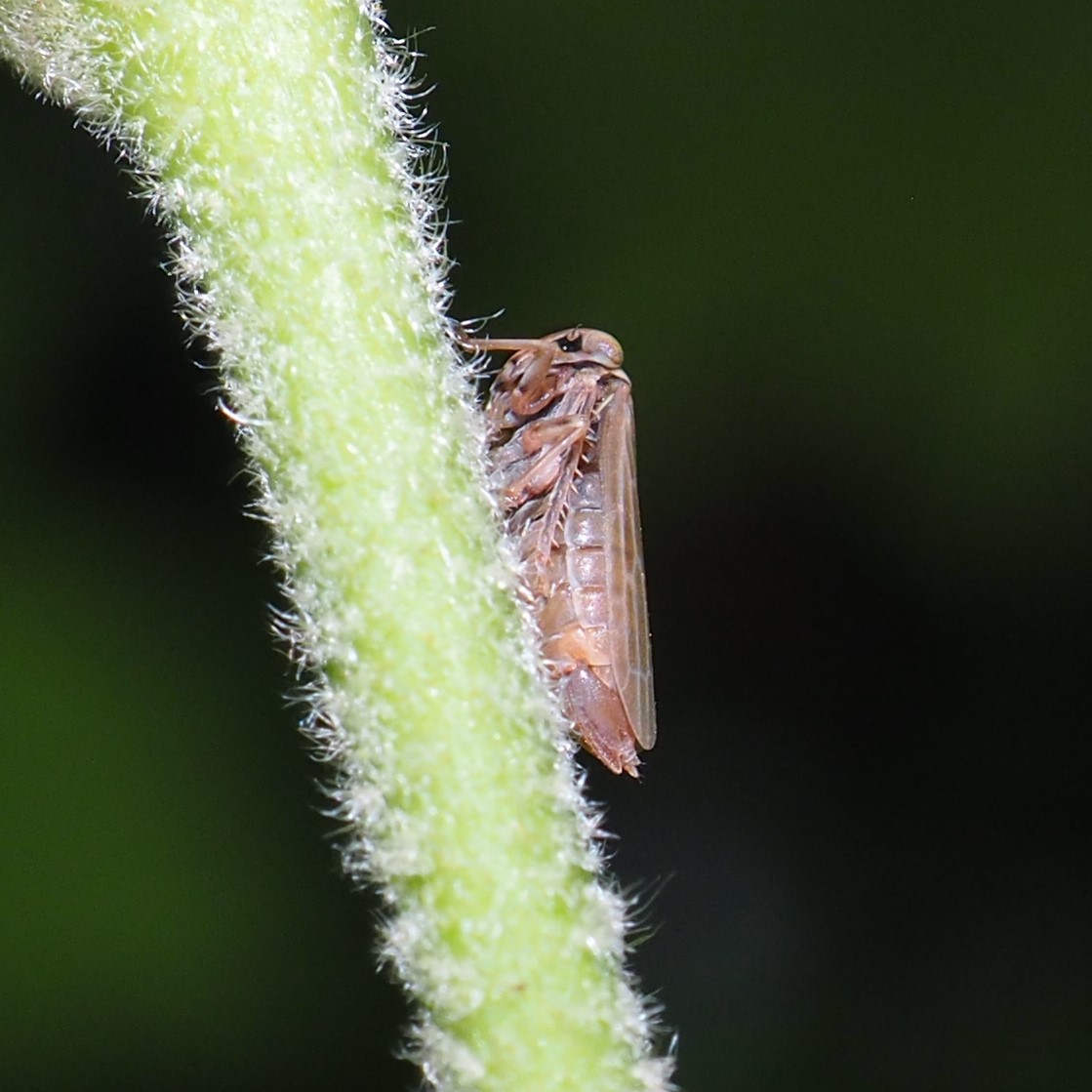
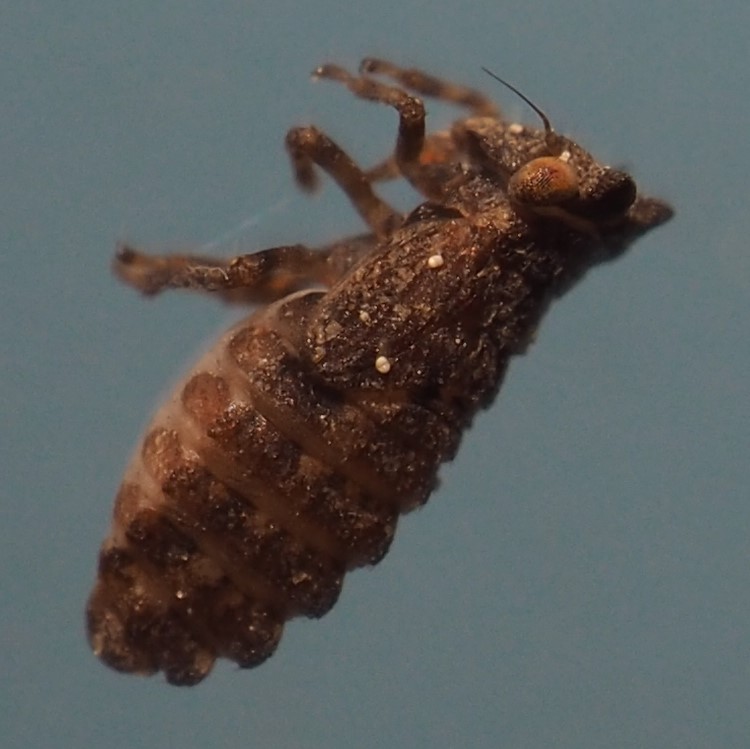
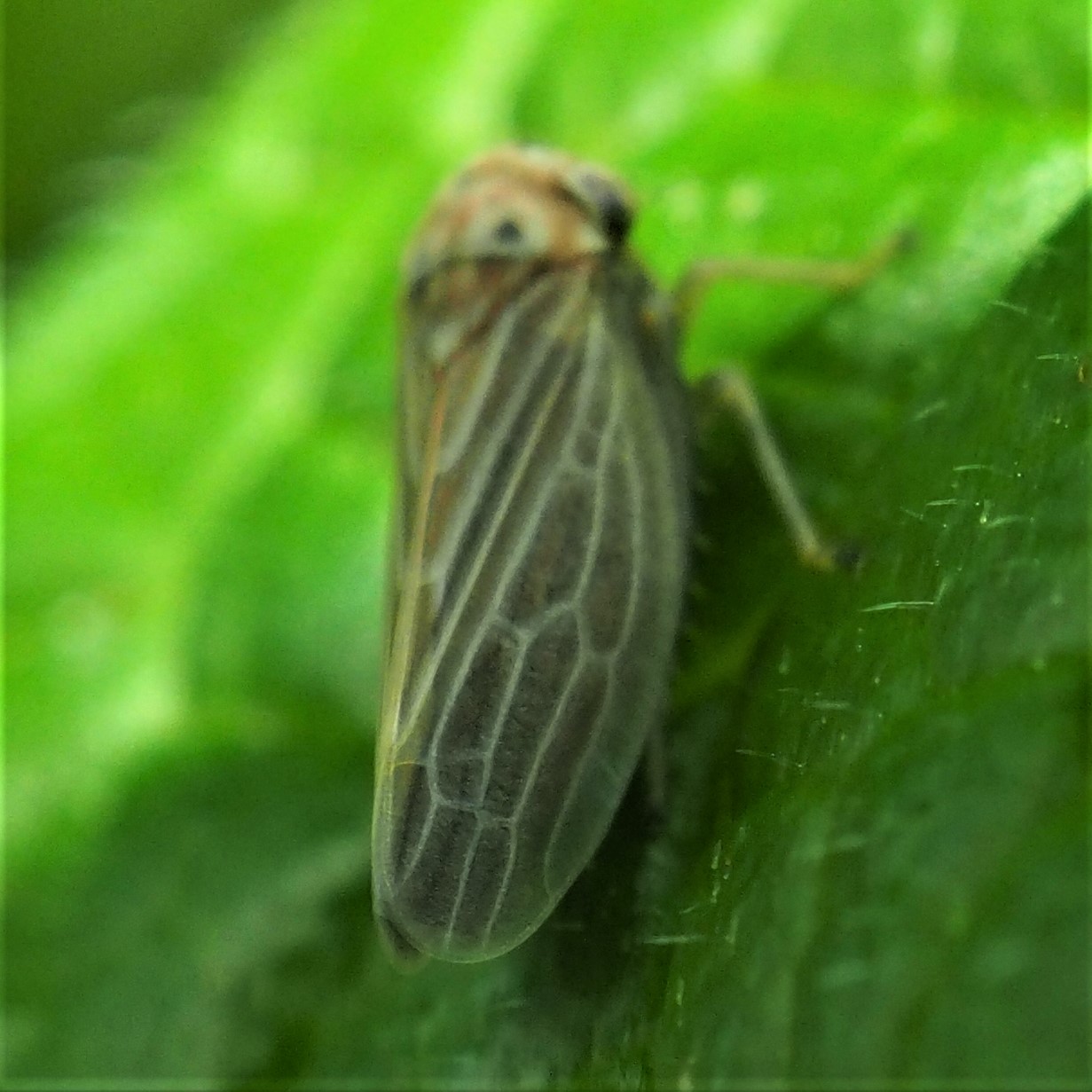
This little bug, whose wings are still only short stubs, is a so-called Plant Bug, one of a huge family of mostly little bugs. The second one is also a plant bug, belonging to a group called Mirids. This pretty little red bug damages lots of plants, like mint and goldenrod. It is pretty indiscriminate. The expensive plants are only about as tasty as the others. We do know what it will grow up to look like : the Four-lined Plant Bug, Poecilocapsus lineatus (picture from June 2015).
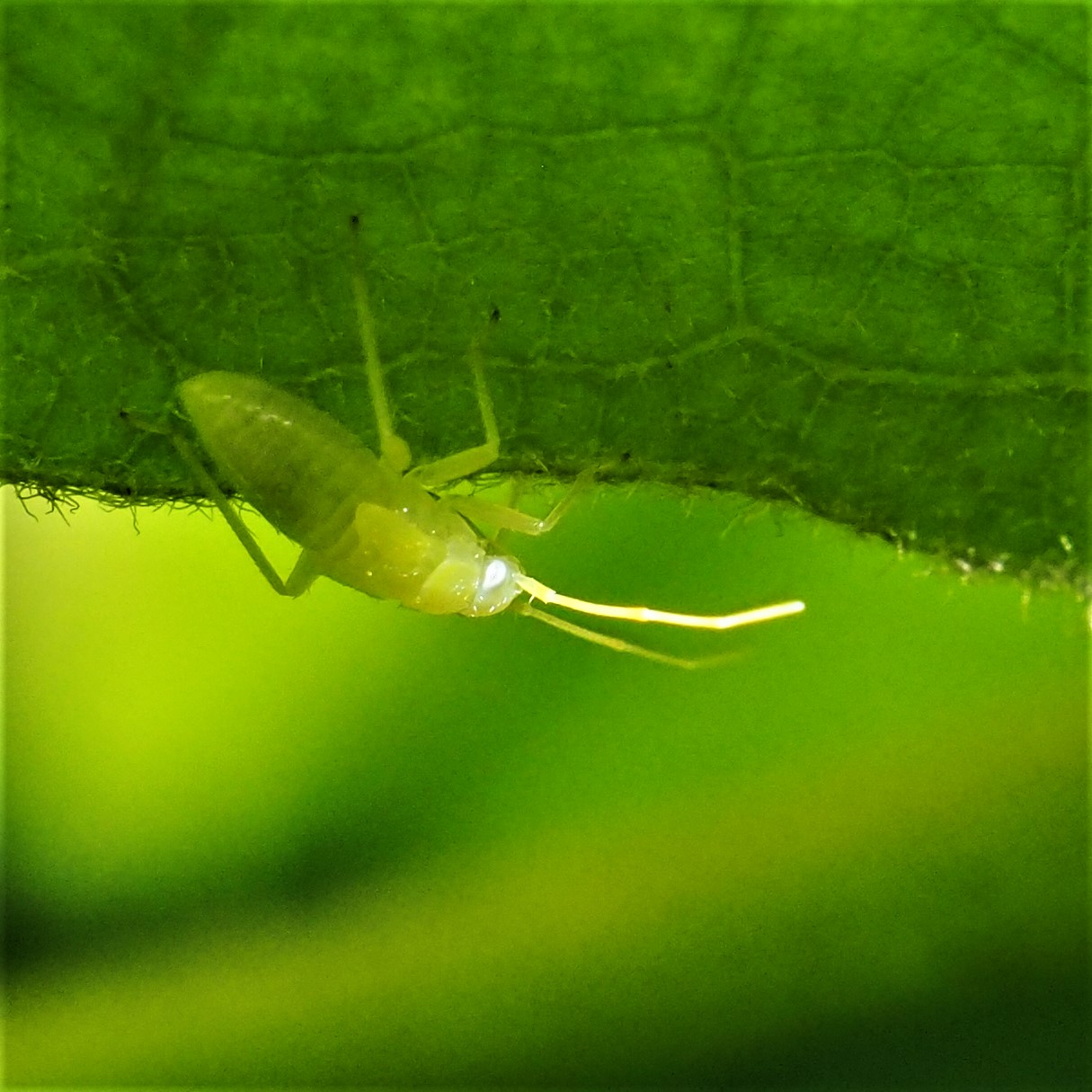
 5 30 19 1.jpg)
 adult 6 9 15a.jpg)
Here is a Stilt Bug with its loooong legs. And the treehopper Entylia carinata, which I'm told likes to live in various places, but in my yard lives happily in Thistle plants.
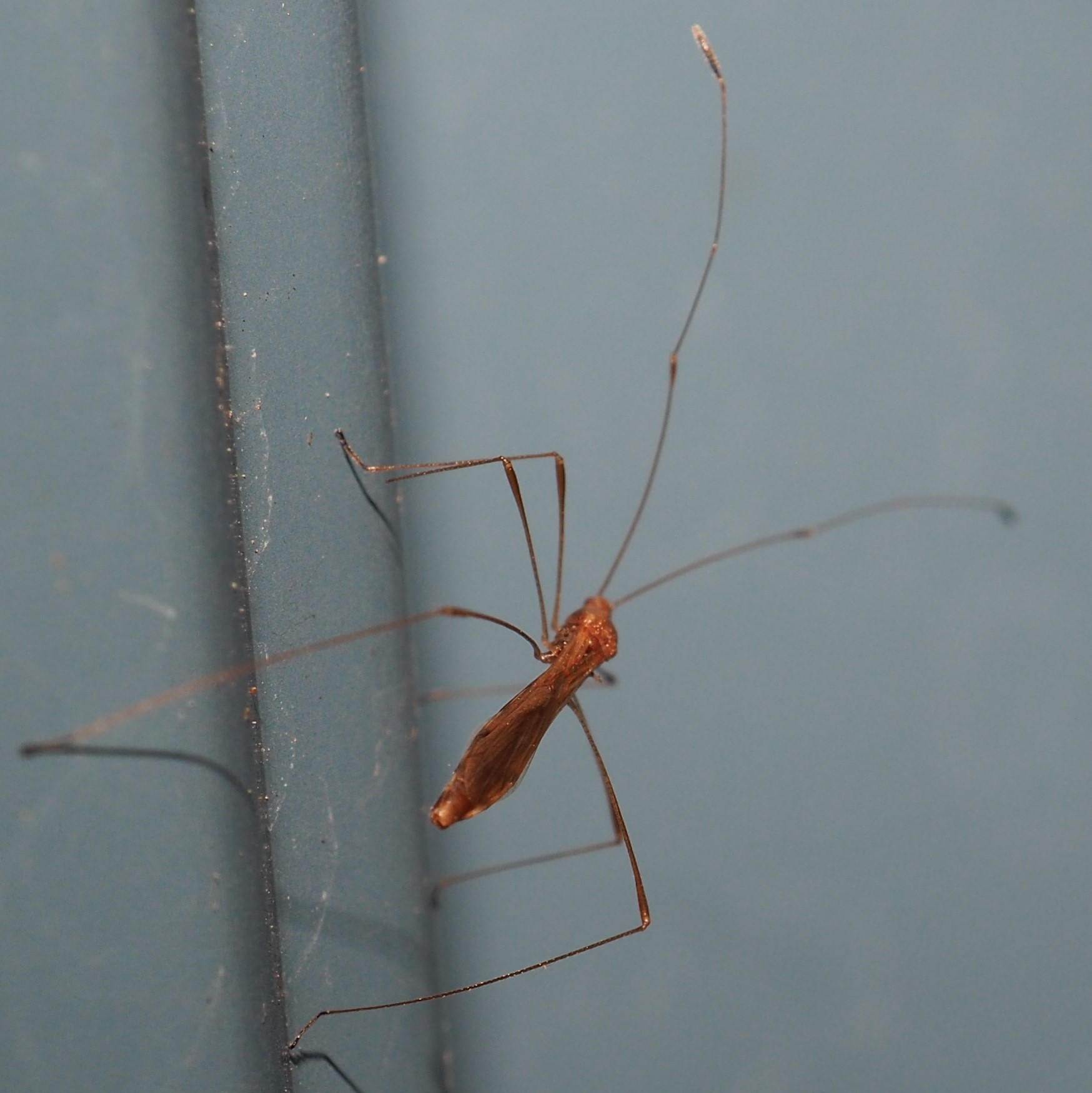

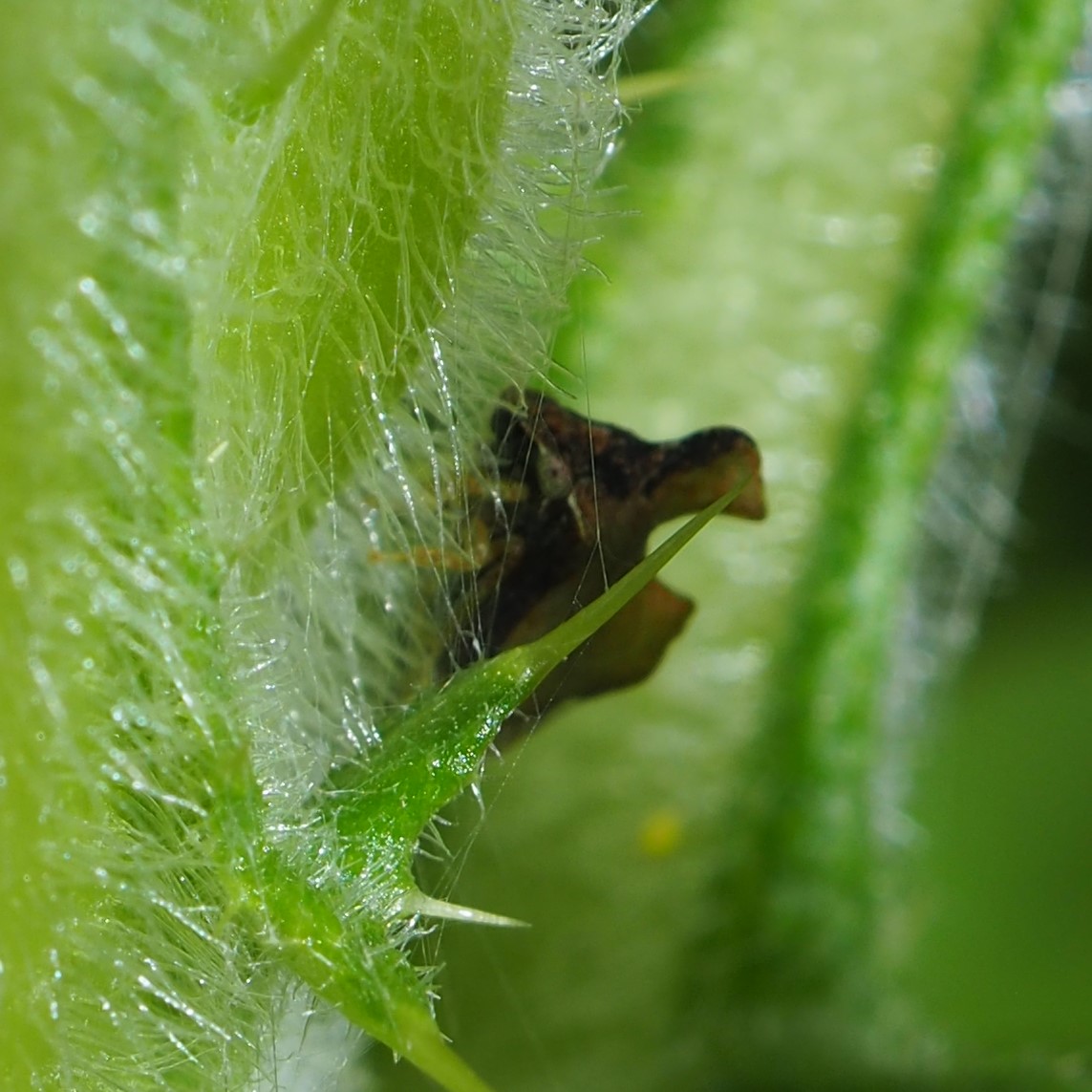
I think it's time that we concentrated on the prettiest of the flies. Enough plain grey midges and fungus gnats. That said, here's a pretty midge. And another. The third resembles an ordinary House Fly, but look at those paintbrush-like feet!
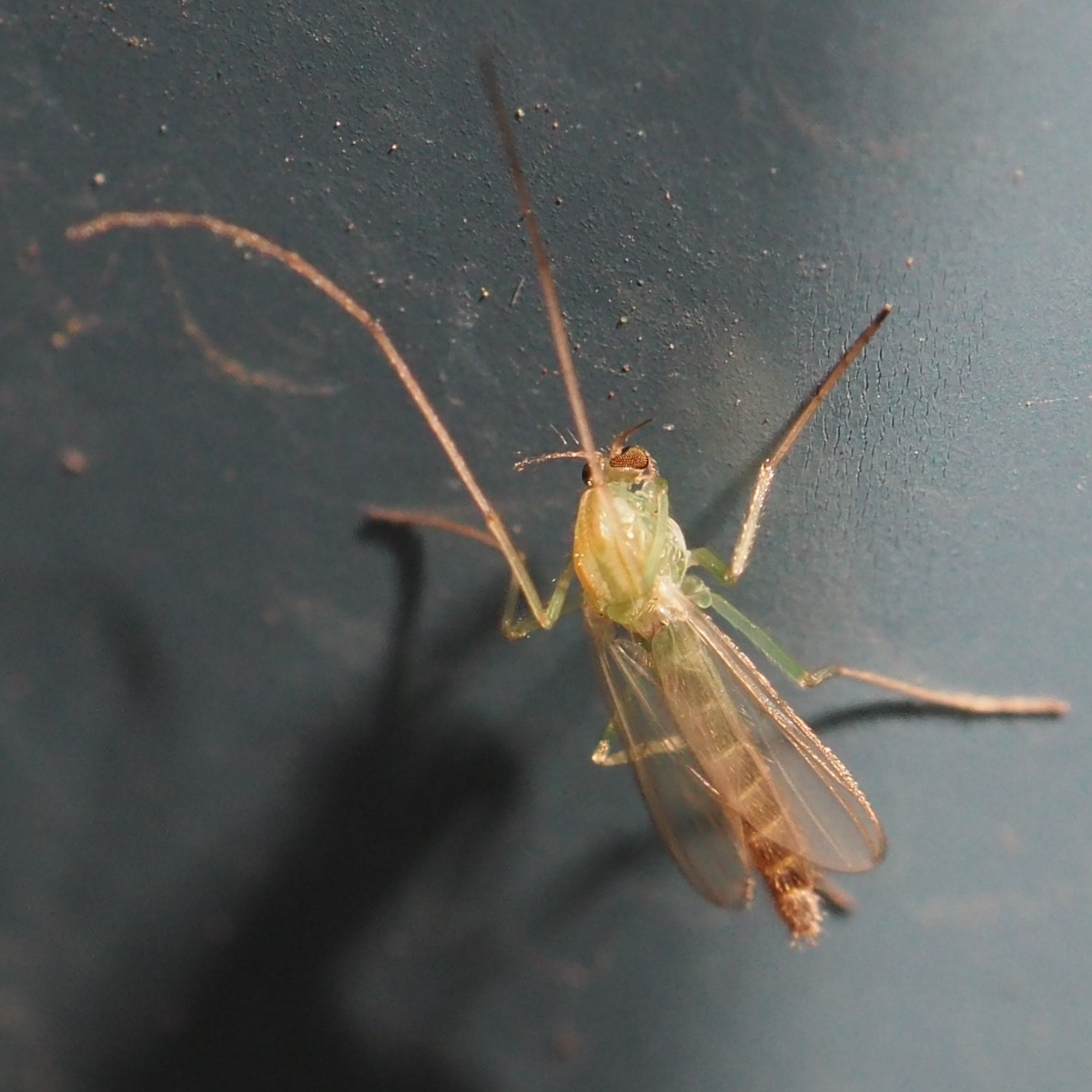
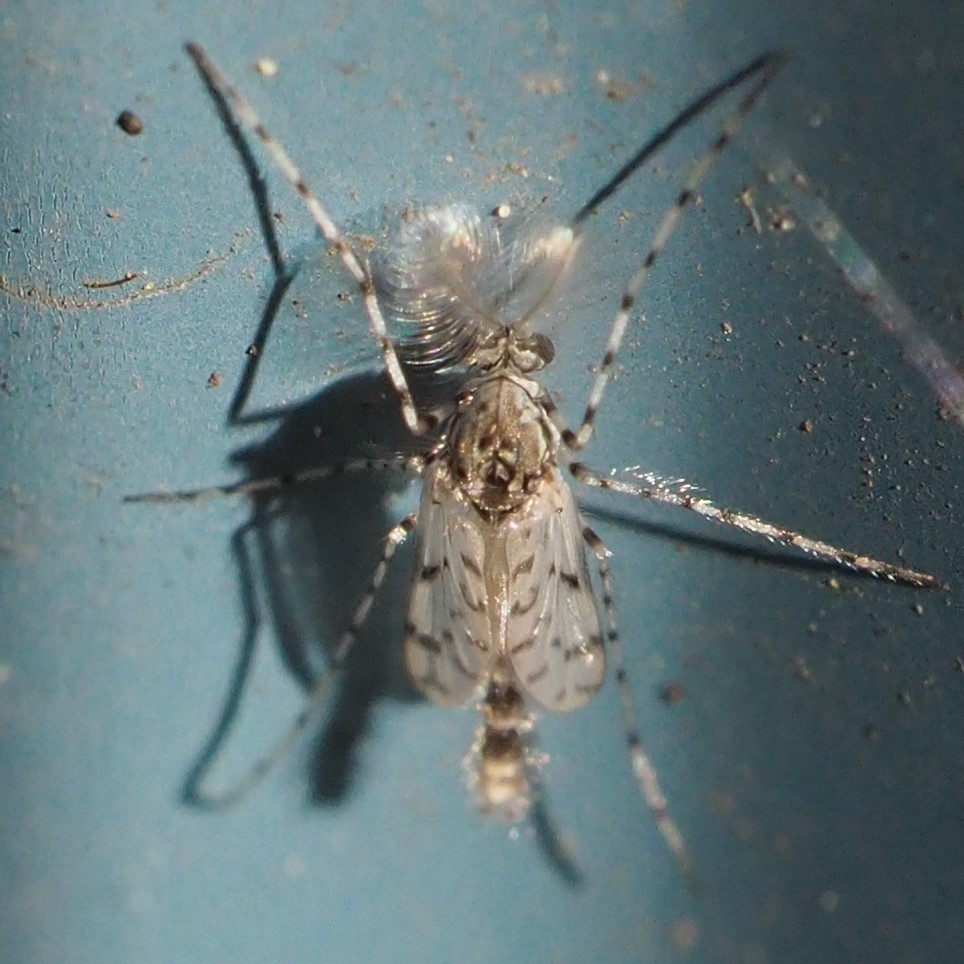
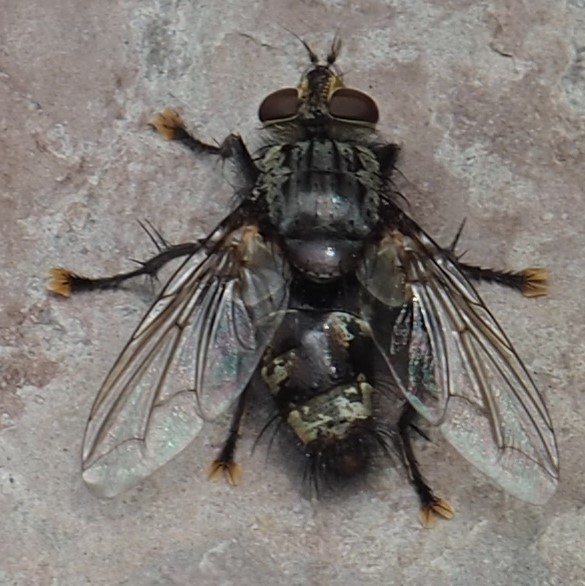
Here are three Moth Flies.
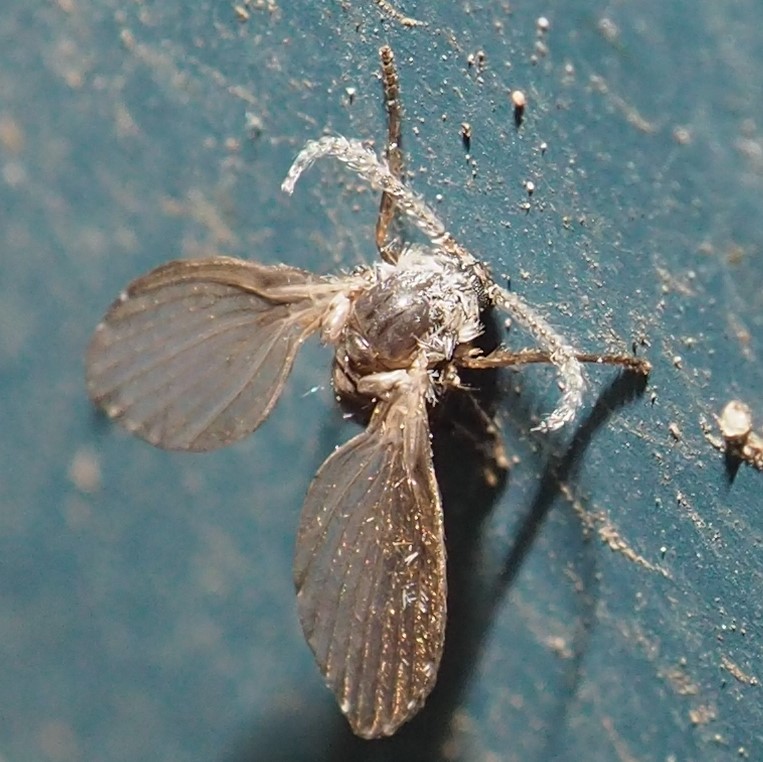
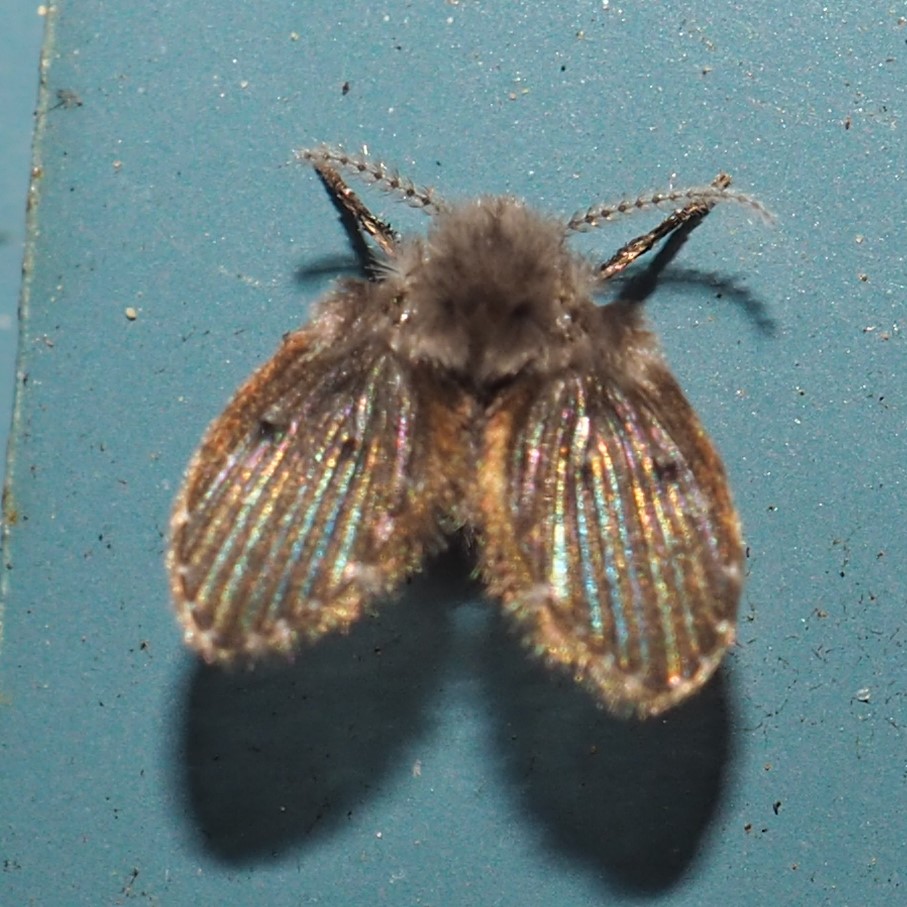
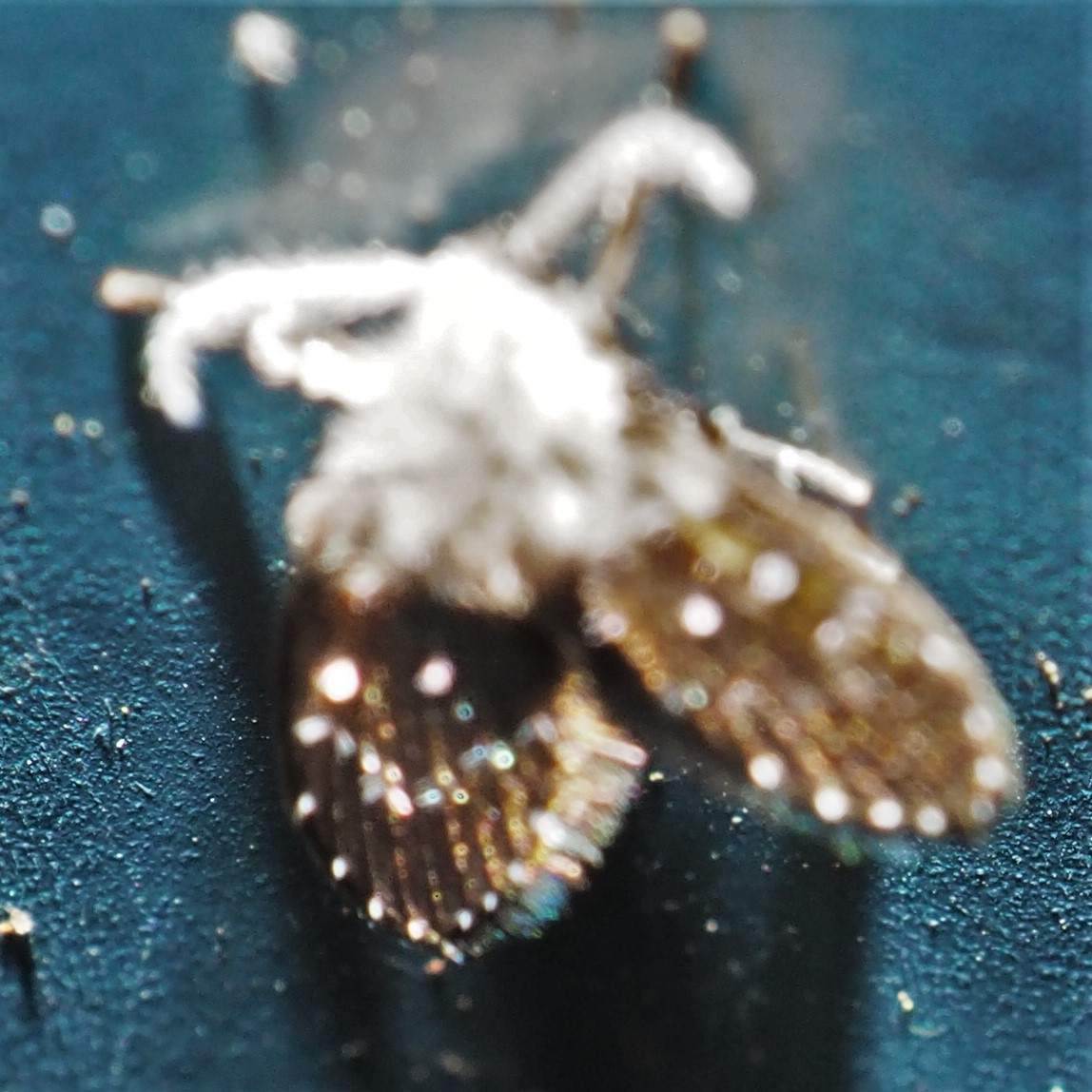
This tiny fly is called the Lance Fly, who knows why? Its red eyes, black body and yellow wings give it away though. The Snipe Fly's highly accented stripes and spots make it very easy to identify too. I don't know the name of this next fly, but its over-all iridescence, even in blacks and browns, is eye-catching. Oh wait. I remember that iridescent fly from last spring. It isn't a fly! It's a wasp! Some of the tiniest flies sometimes flash brilliantly.
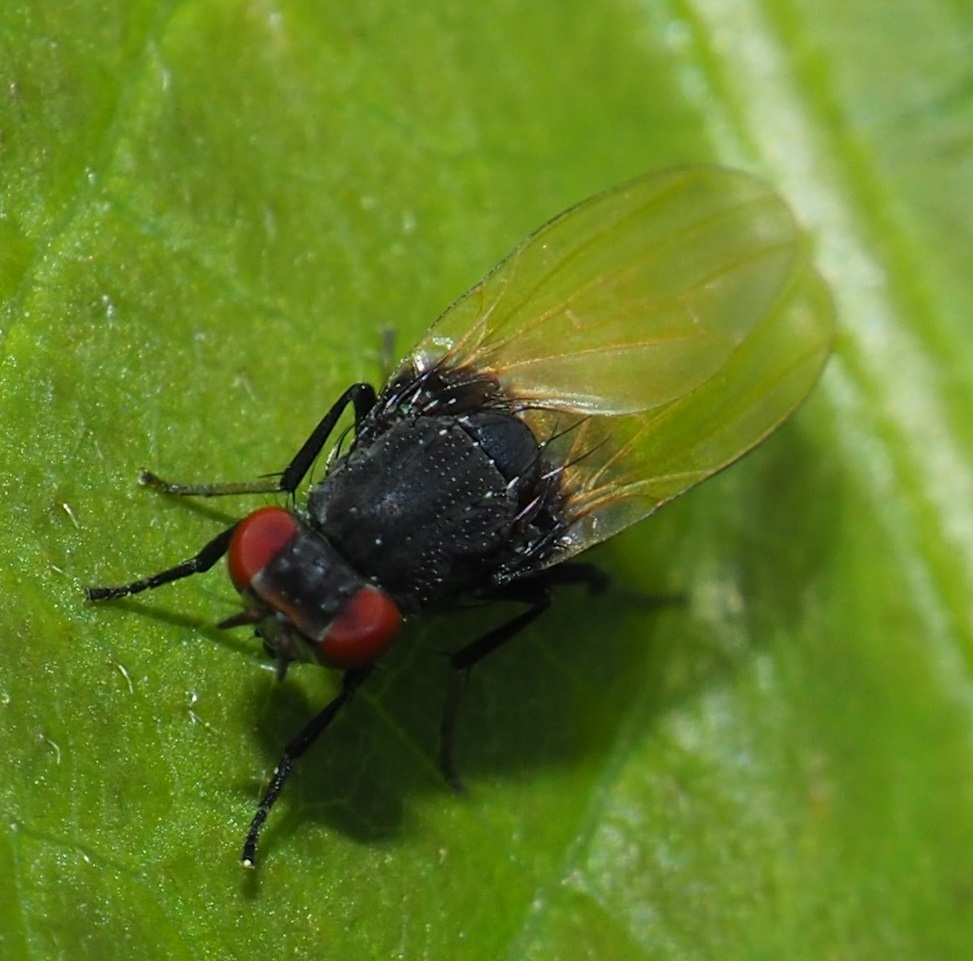
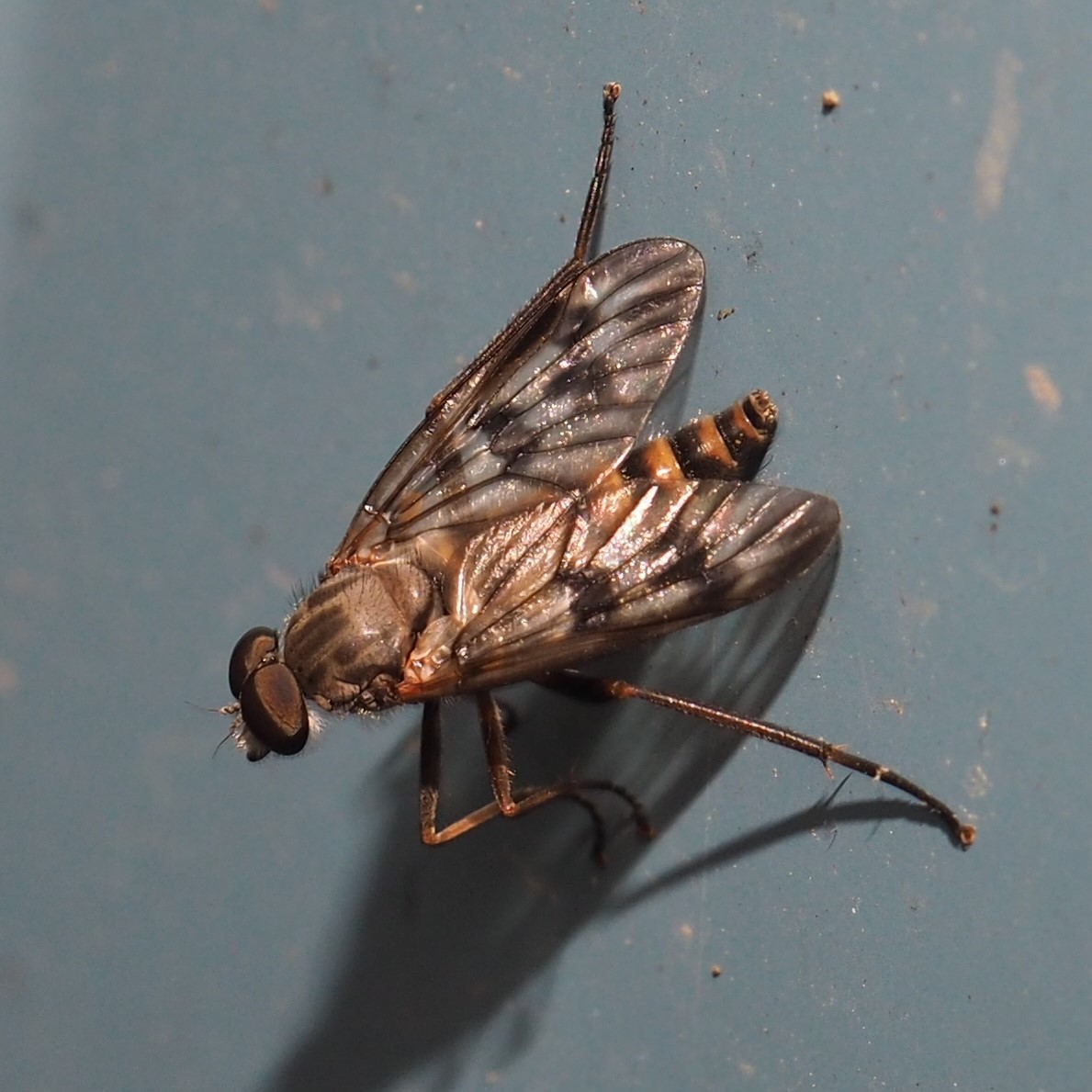
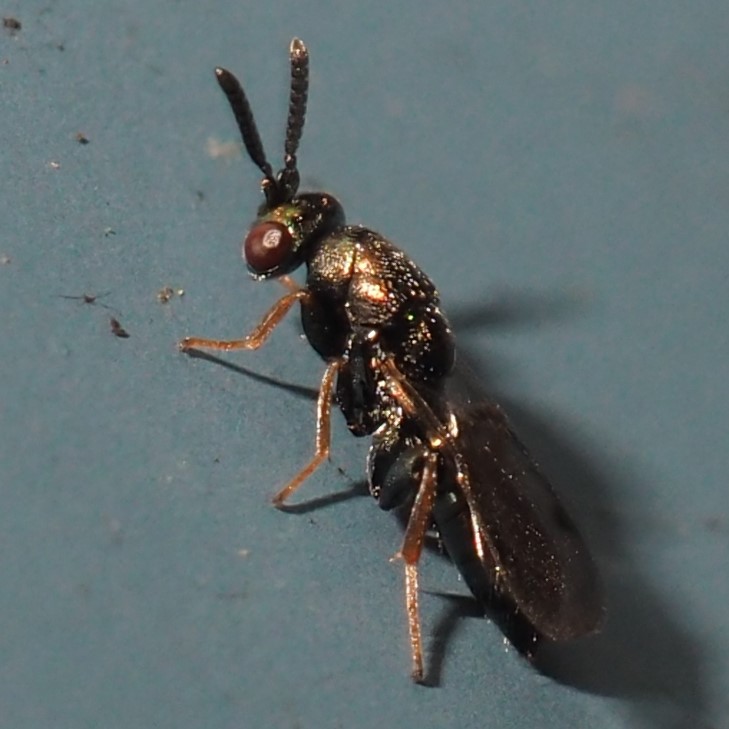
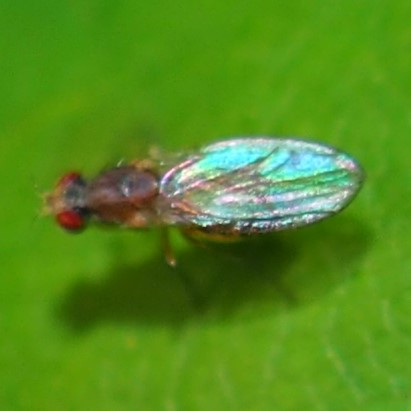
The little hover flies are thick these days, especially Toxomerus marginatus, the Margined Calligrapher. But its cousin, Toxomerus geminatus, the Eastern Calligrapher, is also beginning to show up now. The Margined one is in the midst of its mating season now.
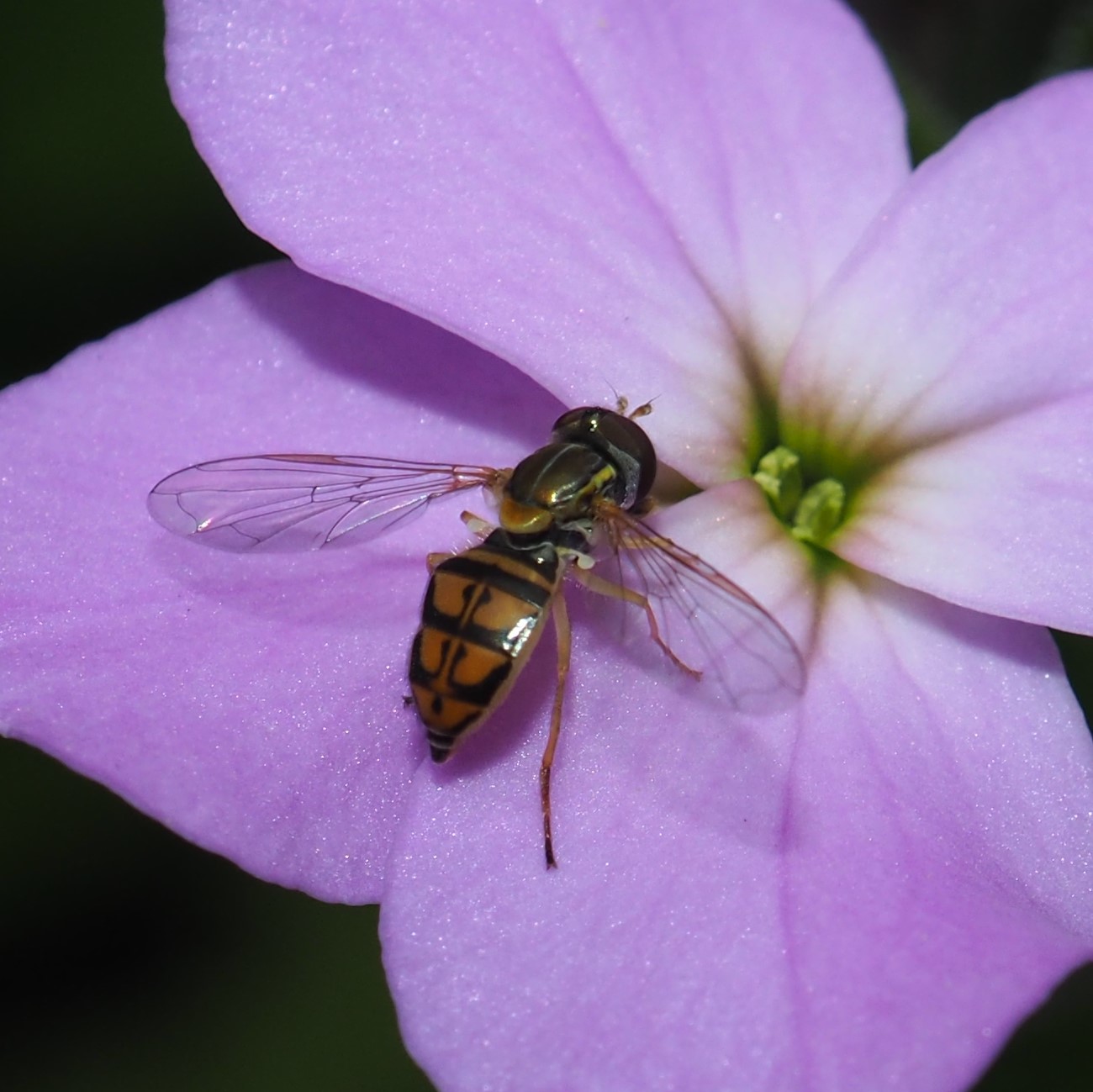
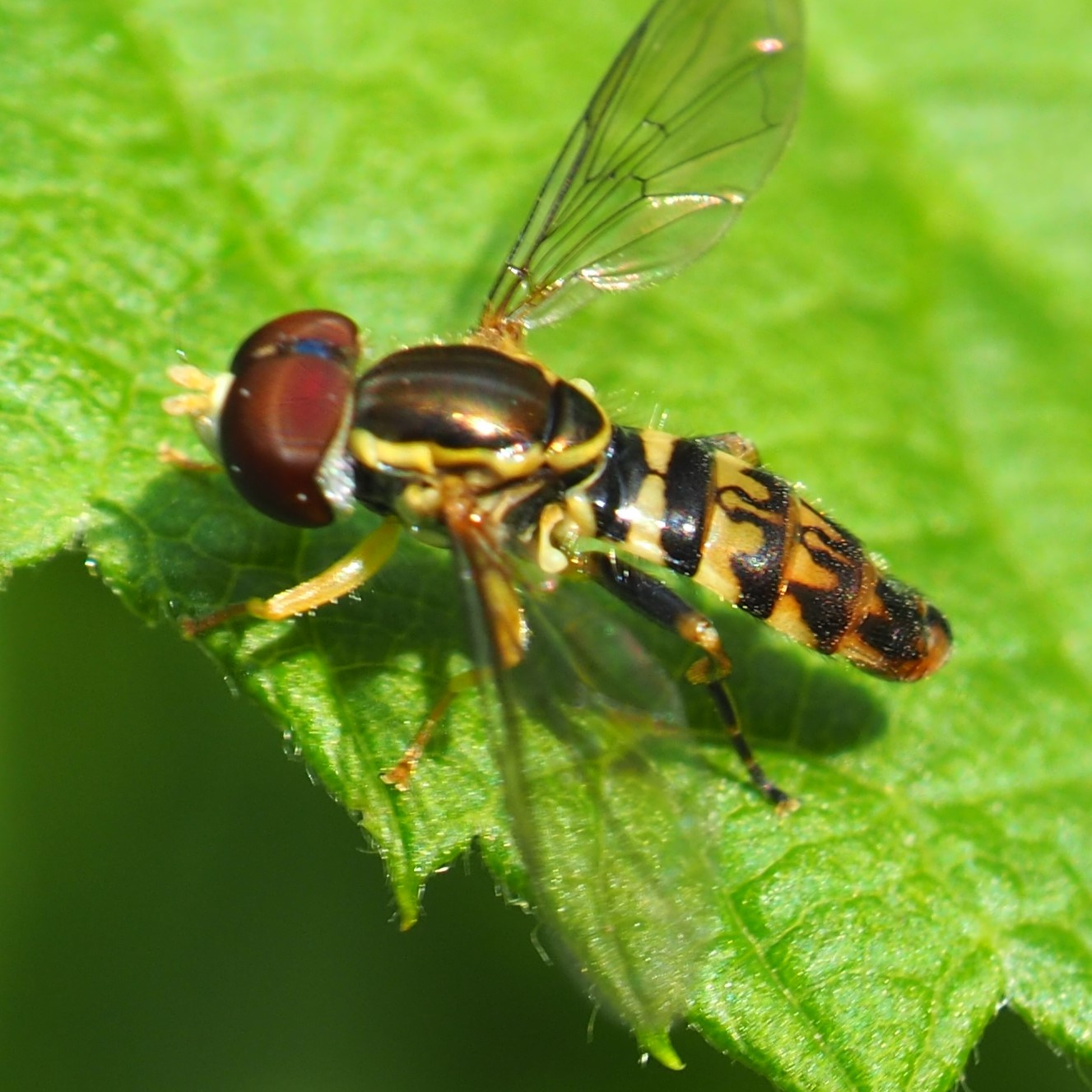
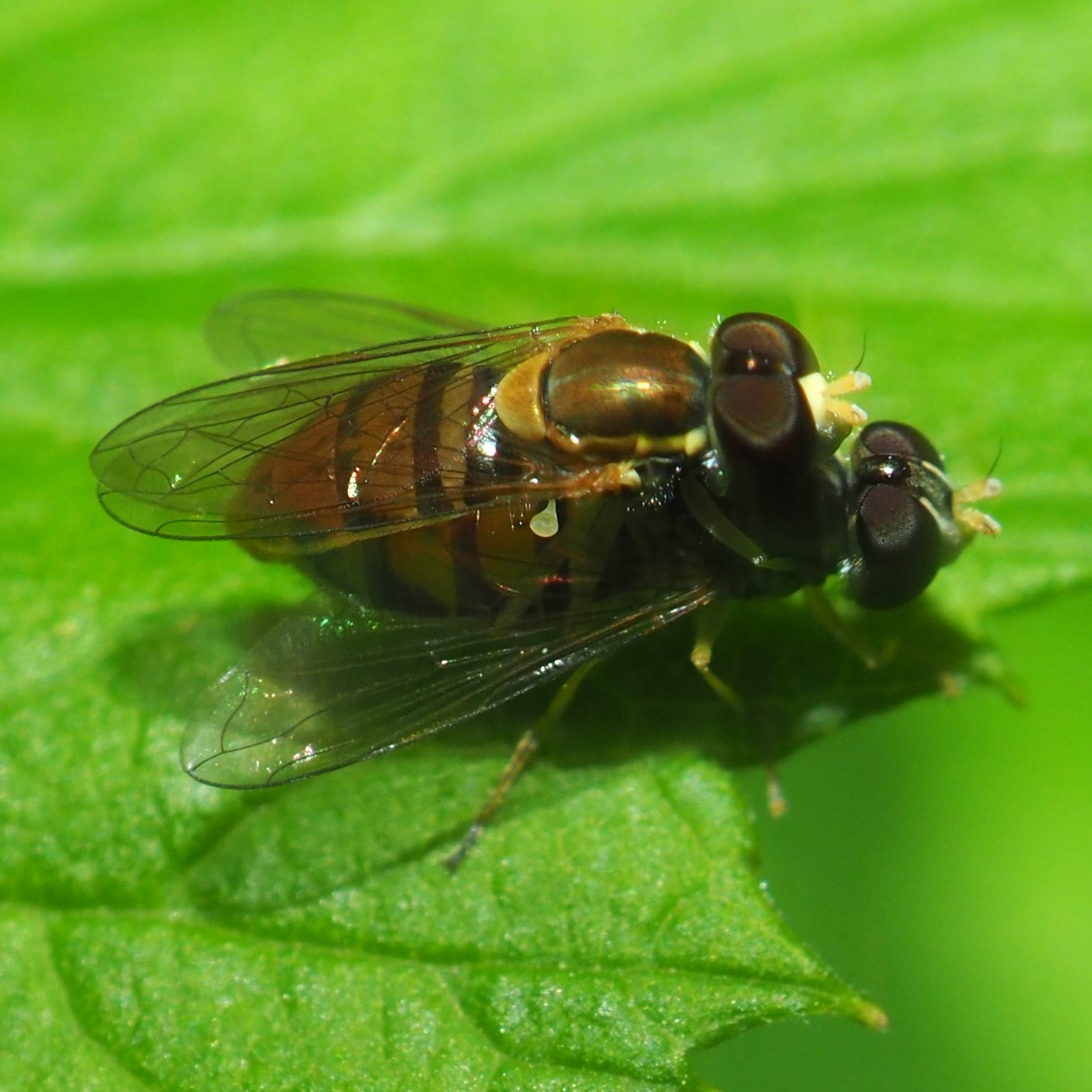
Is this T. marginatus couple participating in something weird? Cover the kiddies' eyes.
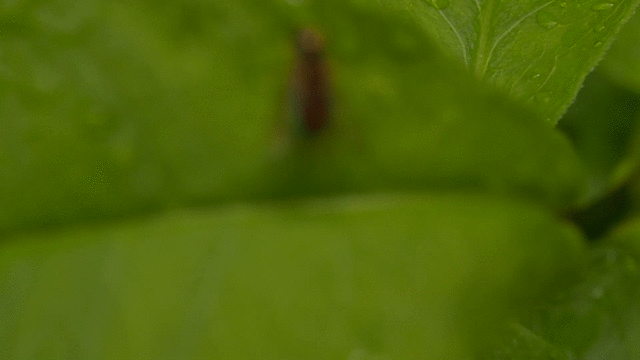
All seems well and quiet in the pond. The commotion of the big toad orgy is over. Here are two fishes still whispering about it all. Froggy is very happy to have all those 15 toads gone. But the results of the trysts - thousands of them spend their days sunning in the shallow parts of the pond.
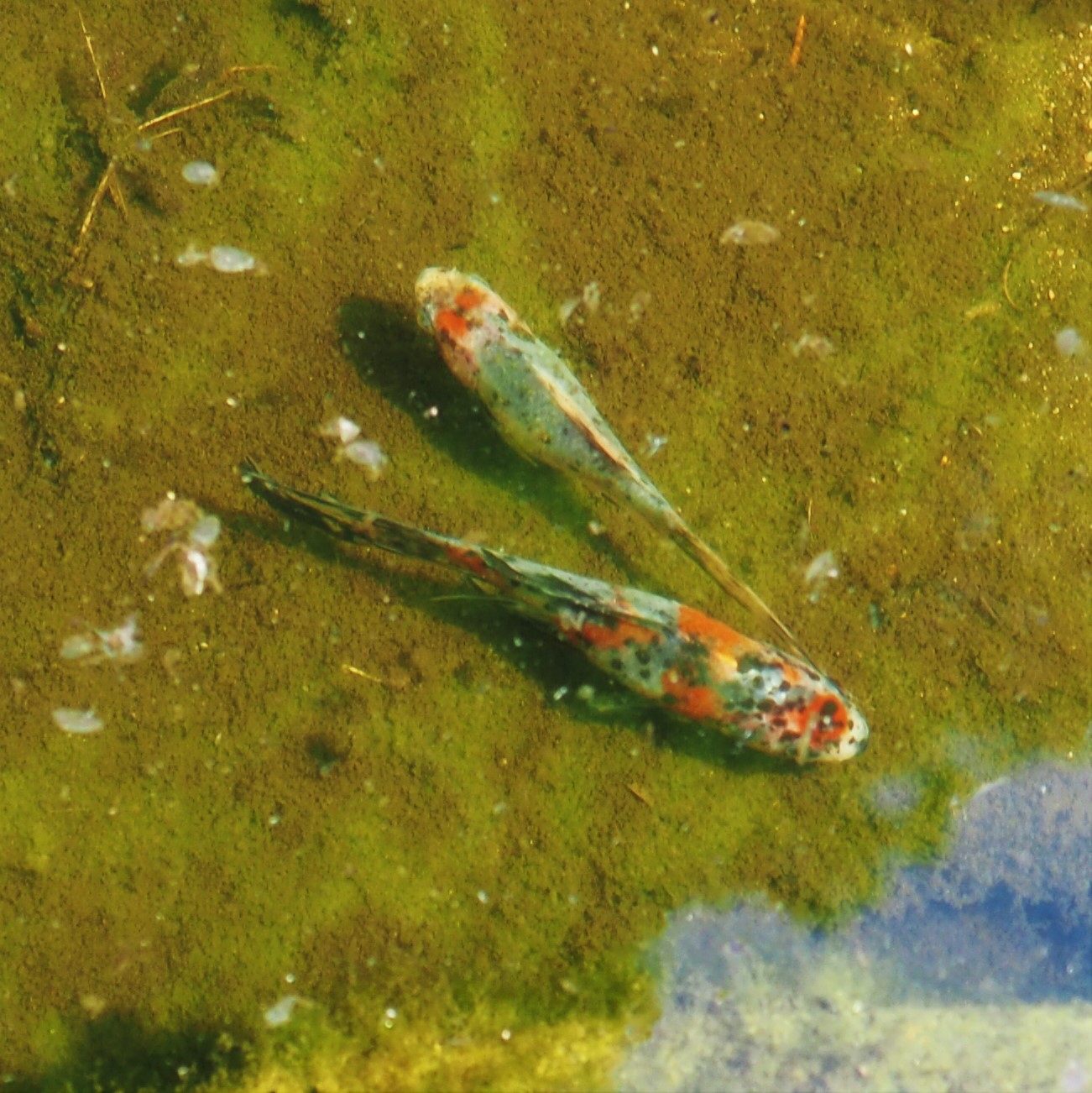
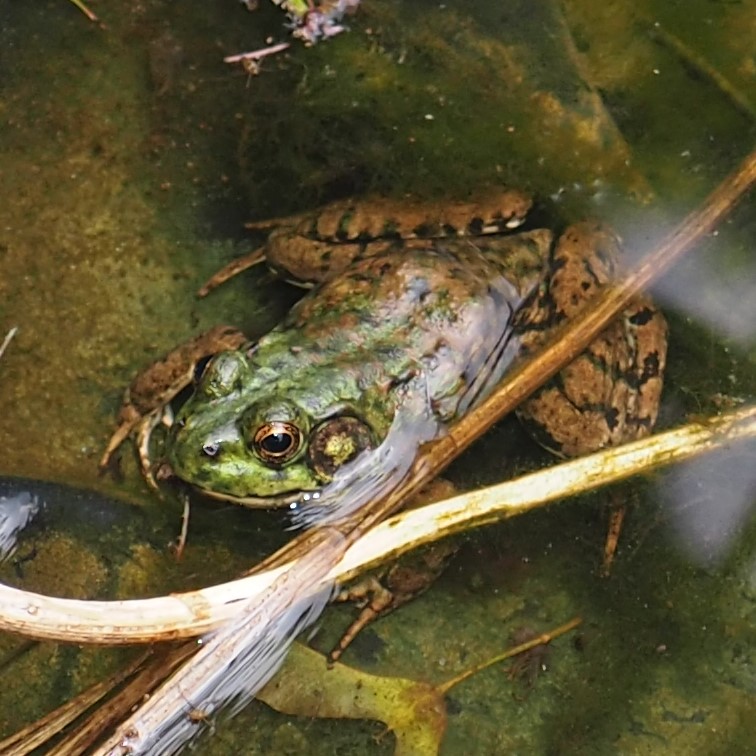
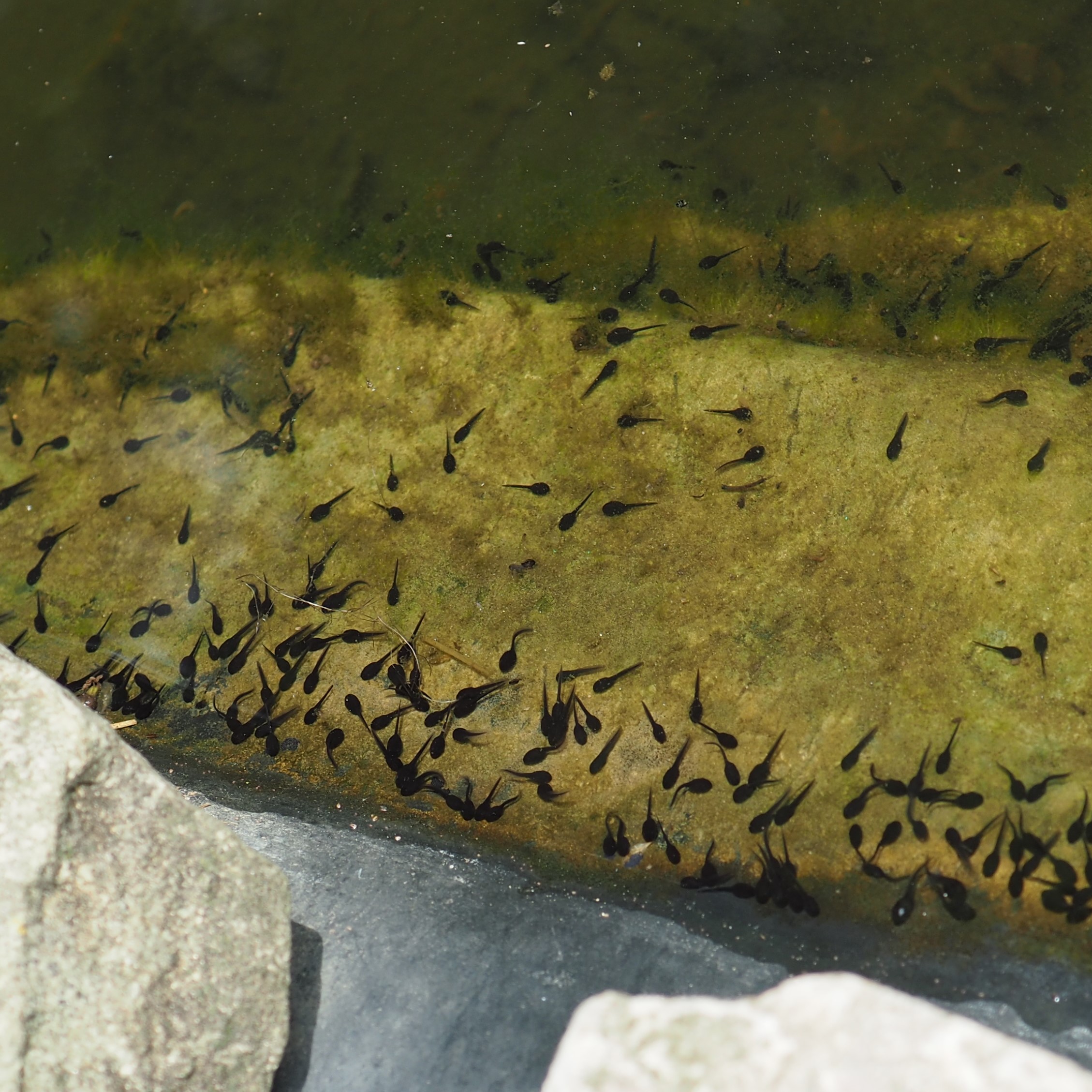
The gardens have gotten weeded over, but a few of the flowering plants I put in and some that were there when I arrived are still alive. But this year some of them surprised me by blooming. This red and white Columbine and the double pink one at the top of this article both bloomed (2 or 3 of each color combo) fantastically this year. Dame's Rocket looks like Autumn Phlox but they are unrelated. Dame's Rocket is now almost a native wildflower. It attracts the little Hover Flies that are out at the same time.
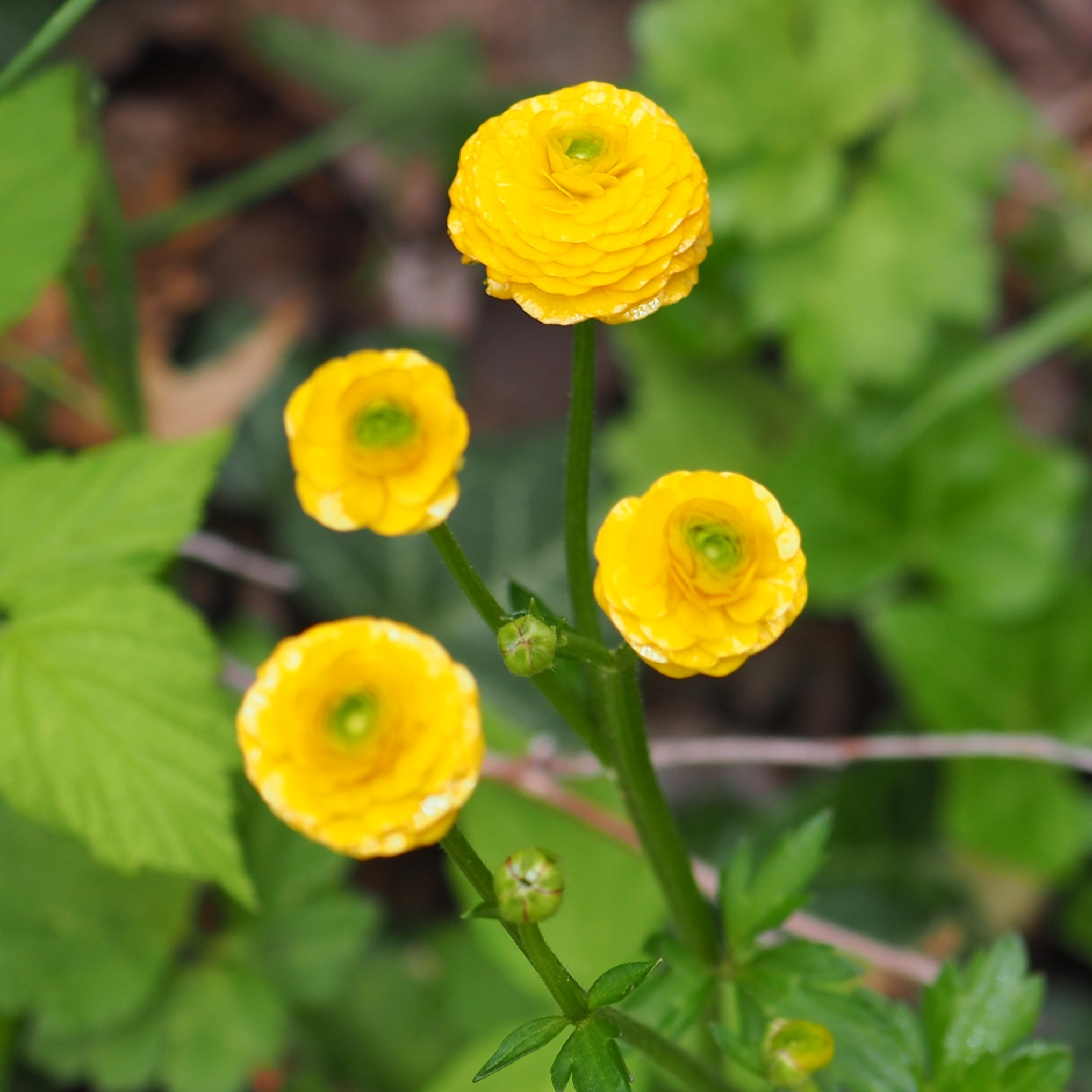
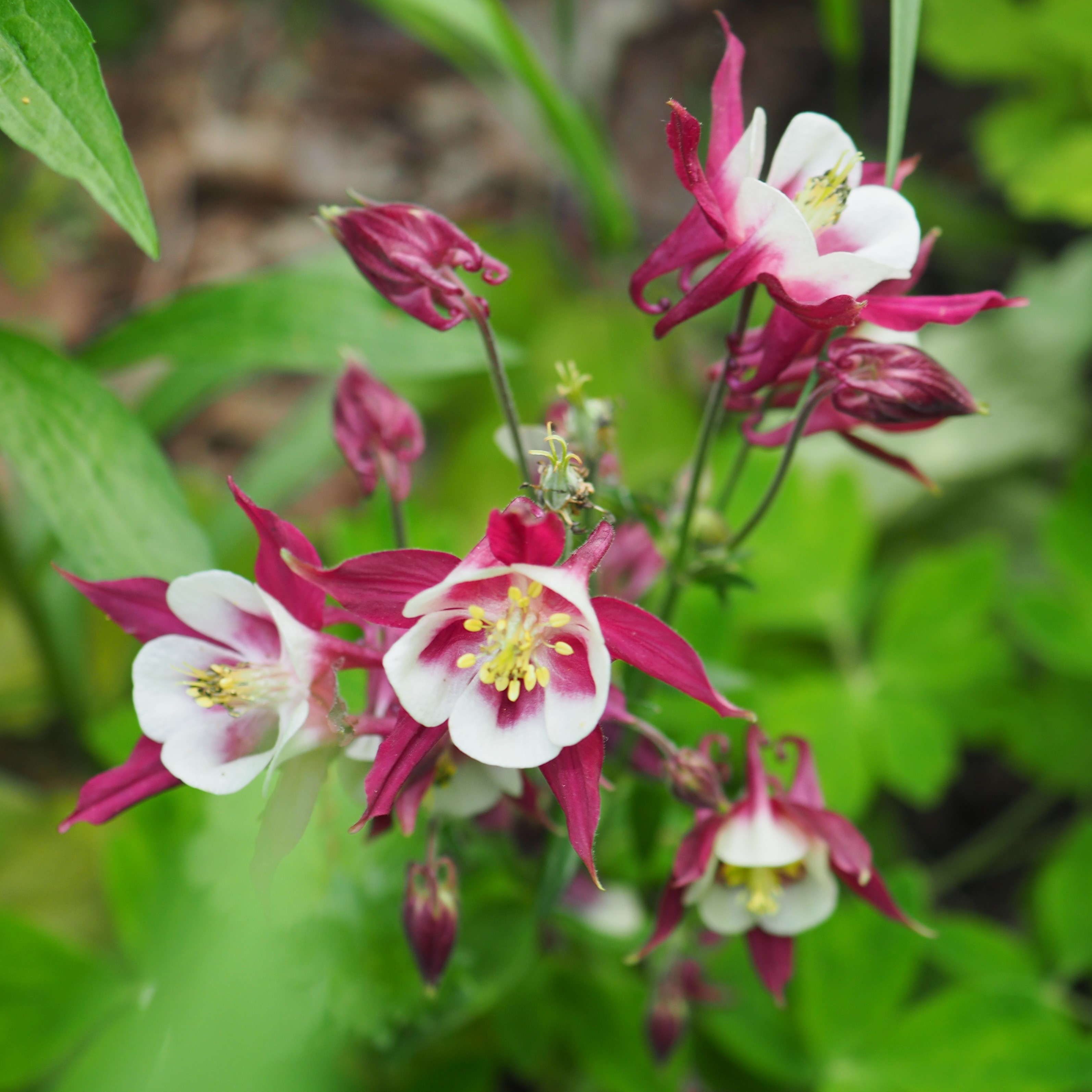

Some plants are still budding. Here is a flower stalk of Baptisia. It will be a lovely blue-violet and full of Bumble Bees soon. The False Solomon's Seal's bud spike will bloom gently and in the fall will make a huge cornucopia of bright red berries. Betty Beese gave me the starter for this plant 10-15 years ago while she still lived in Albion and for years it did little. This year there are suddenly at least three healthy plants! The magenta Peony still stands where it used to bloom - but now it is in a shady spot and so each good year it puts up ONE bud. Each year the ants come to work on the seams. Not always the same kind of ants but you'll be happy to know that this year, the first year I have heard of Acrobat Ants, it is Acrobat Ants at work! In this last image, you can actually see that not only the gaster but also the head is heart-shaped!
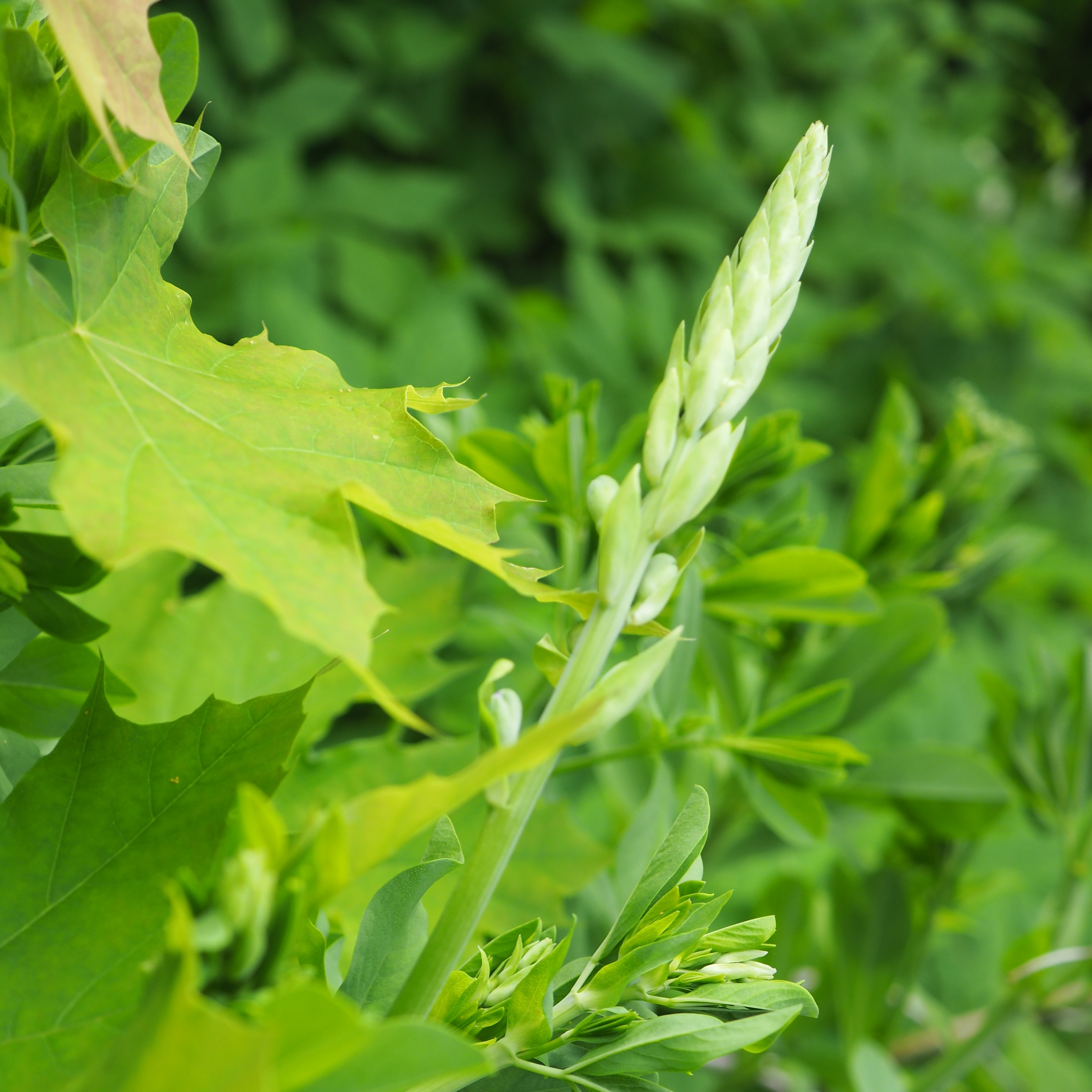

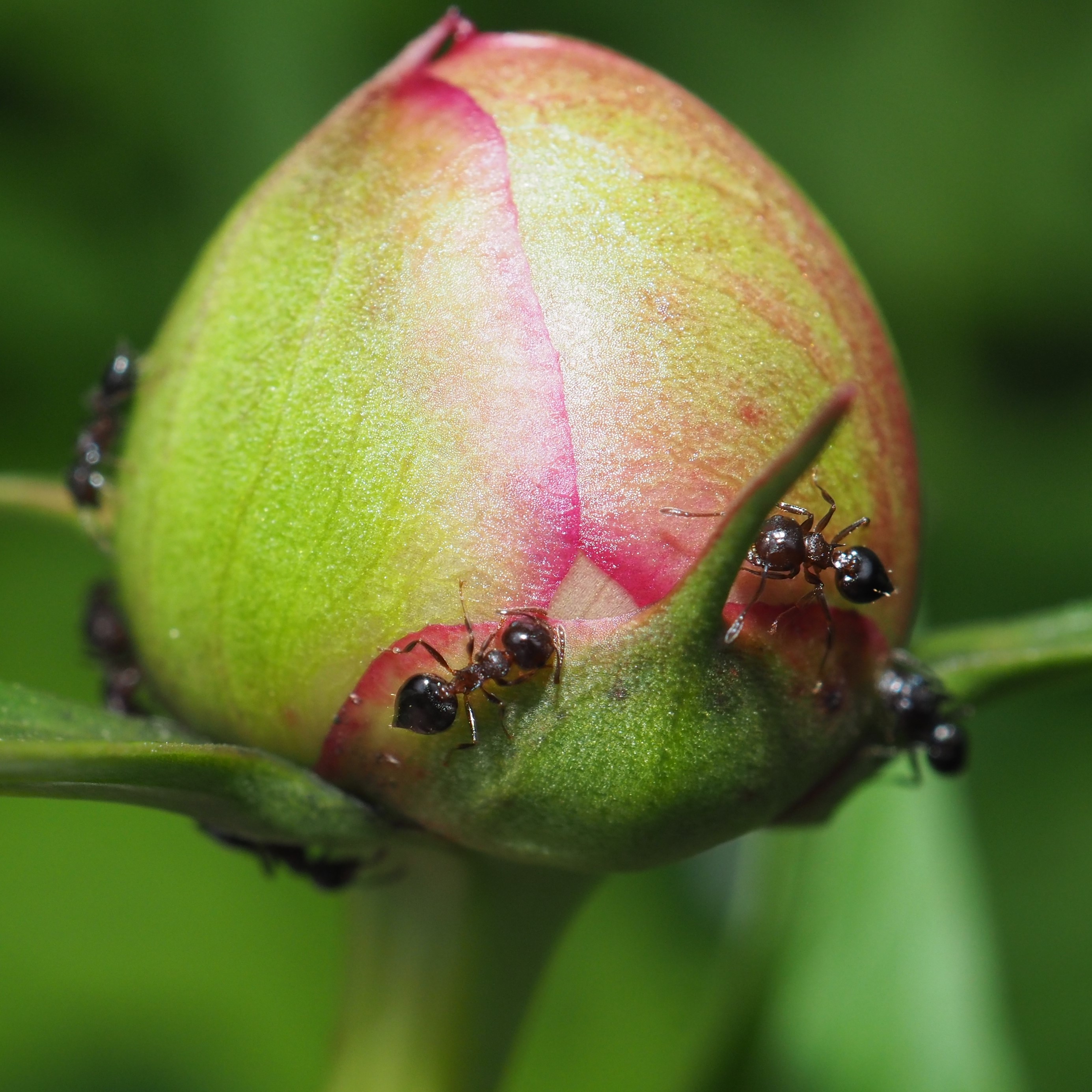

If you see harvestmen, you know the Spiders are coming up soon. But first let's admire how quickly the little harvestmen are taking on the look of adults. Especially this first one! My favorite picture is Number 2, which looks like a saggy baked potato wearing a single eye that looks so much like a human eye. The third picture MAY be of one of the pink harvestmen that will be so common in the summer.
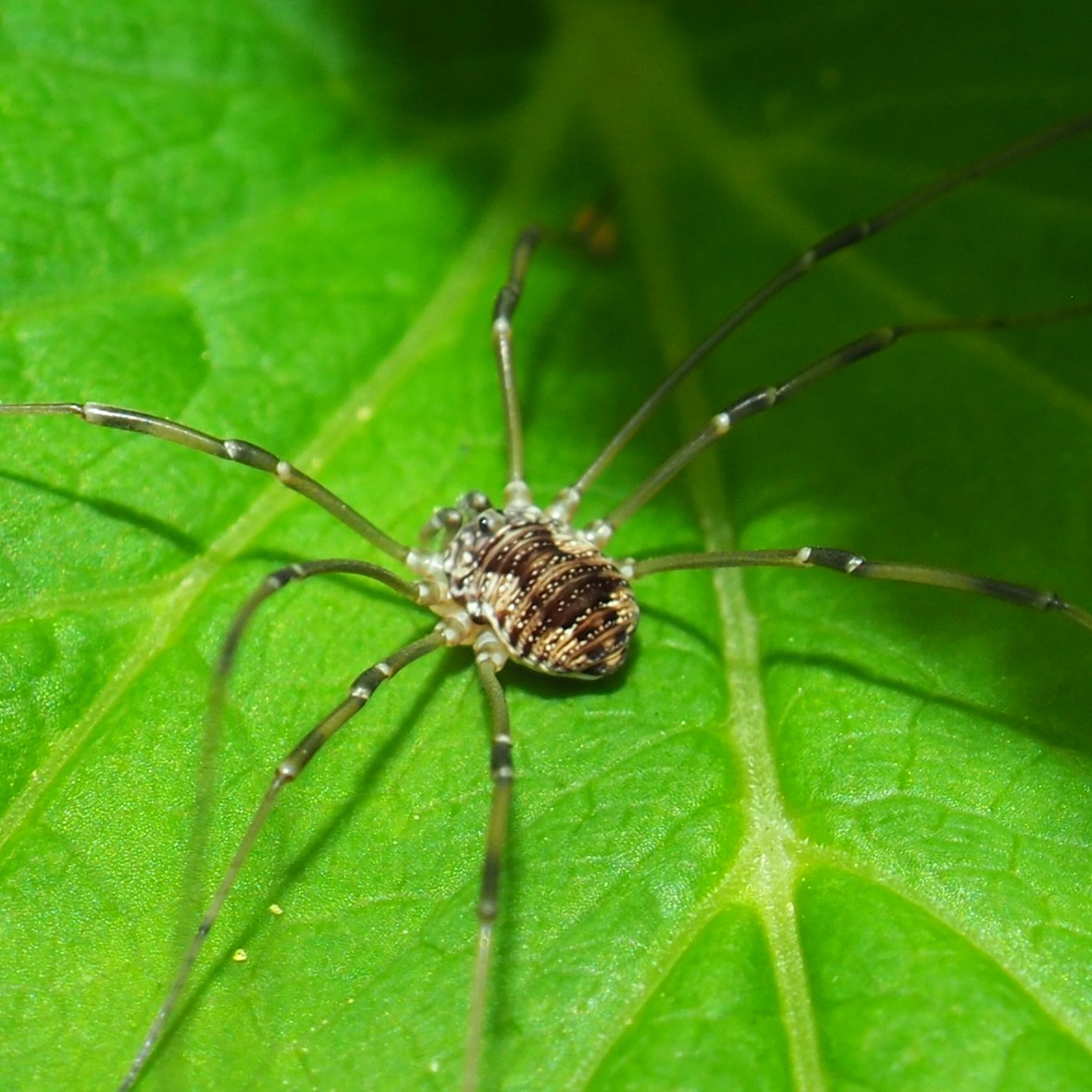
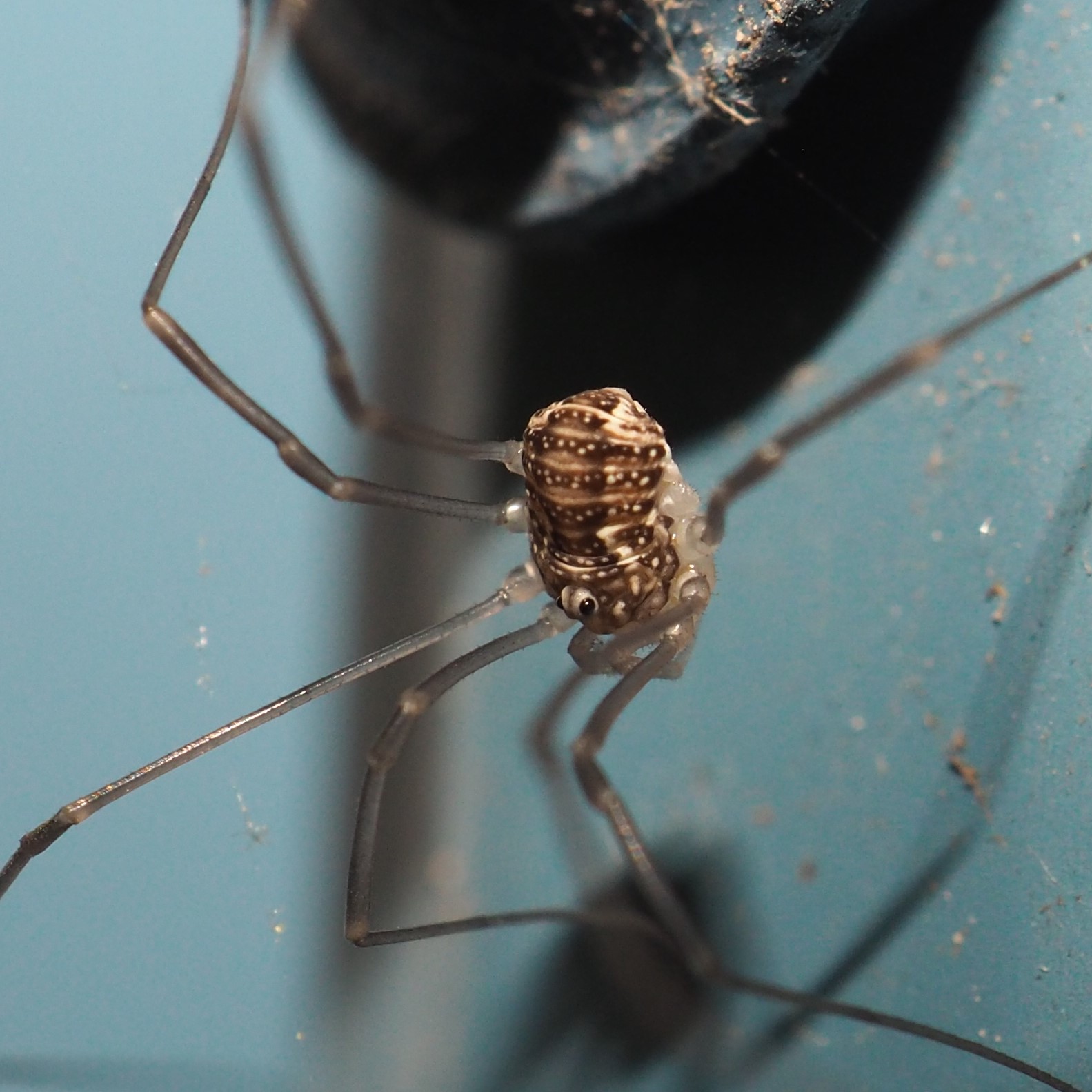
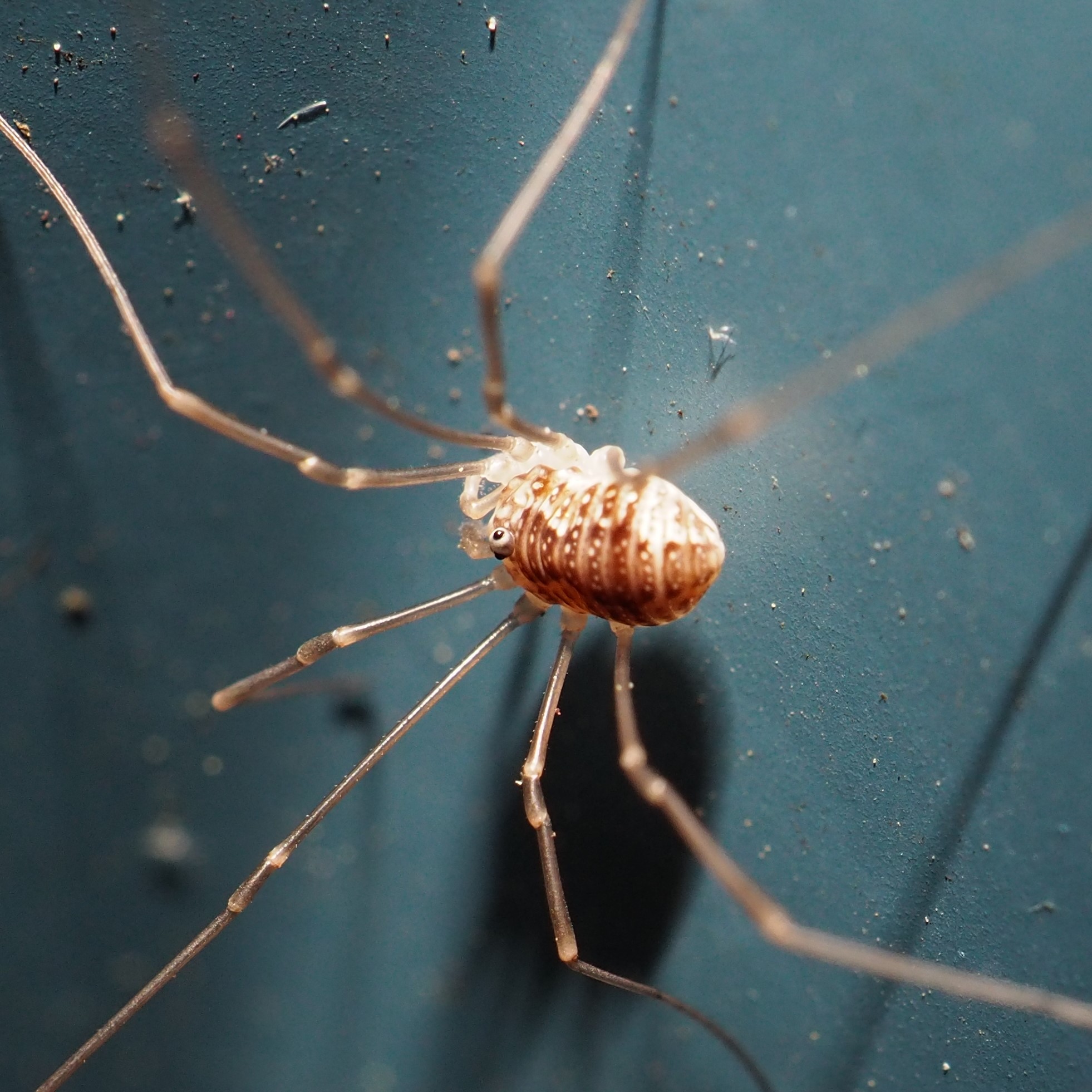
If you ask how many spiders exist in this unkempt yard, you will probably be aghast at the multiplicity of them. I'm still very new at identifying spiders, so let me first tell you that any of these that are identified correctly at least to genus were identified by Rebecca Ray or Matt Claghorn. I tend to label any spider with a round body as a cobweb spider, from a family that includes the Black Widow and other Widows. This first zigzaggy one is a Cobweb Spider of genus Theridion. Same for the black and white one in picture 2. The Common House Spider is also a Cobwebber, but of genus Parasteatoda.
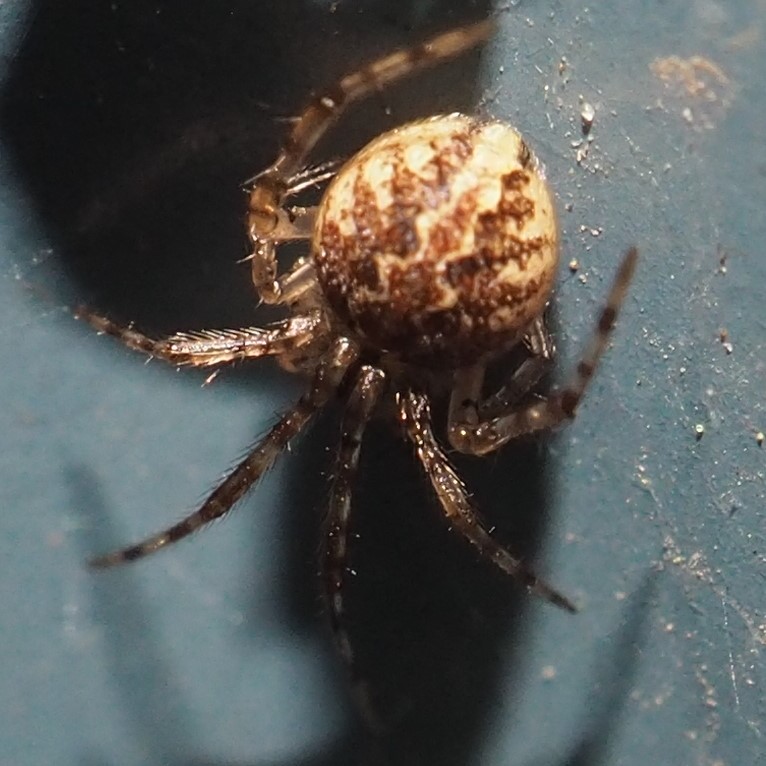
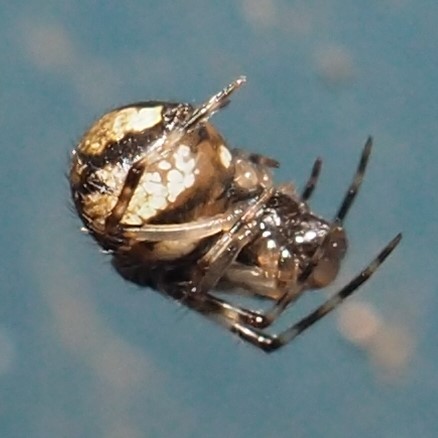
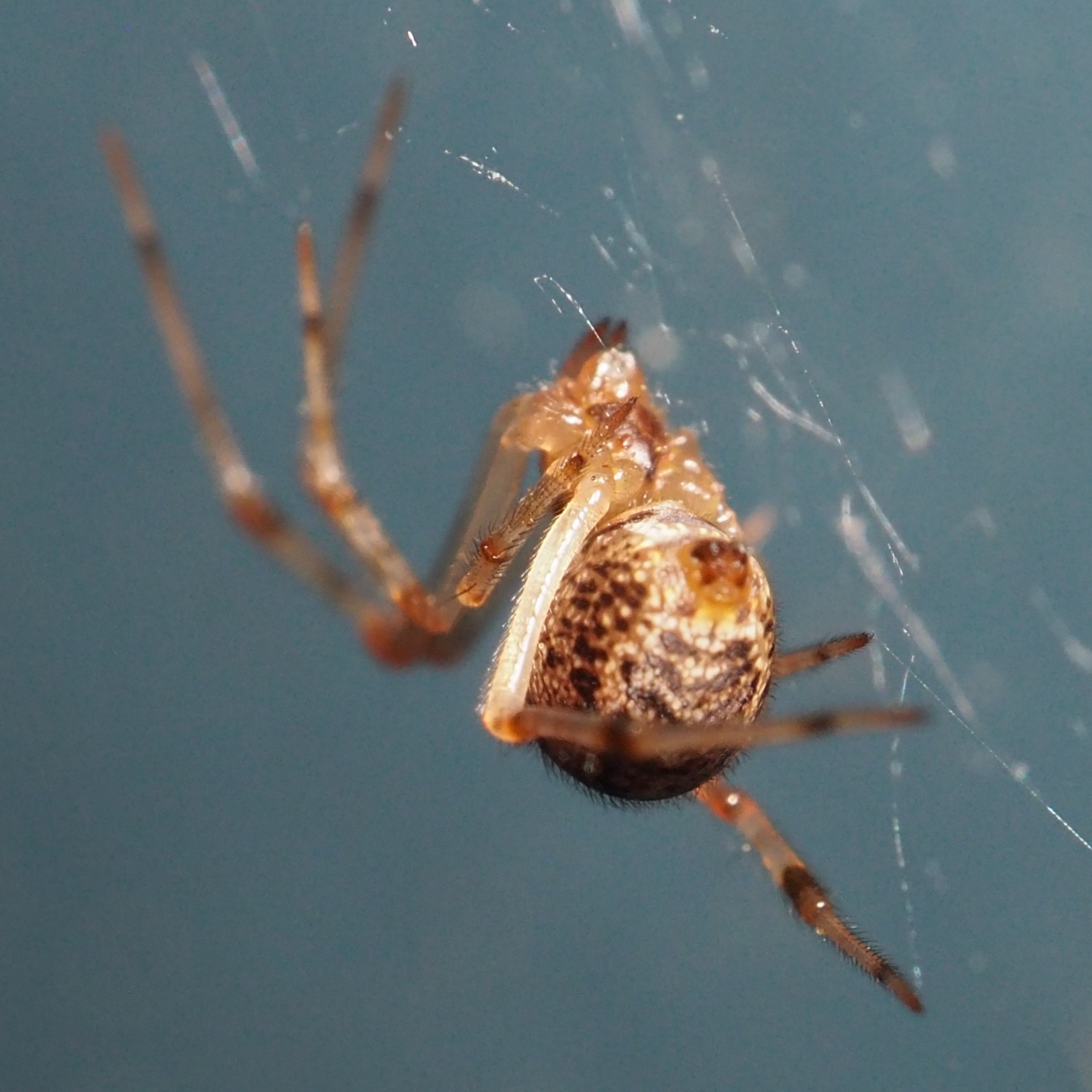
One of my favorite big spiders are the Ground Crab Spiders, genus Xysticus. Here is one that appeared this week on the Wall and also appeared last year about a week apart. The Crab Spider family is very large and contains both the largest and the smallest spiders. Image 2 is of a Northern Crab Spider, a tiny spider that lurks in an amazing number of available spaces, behind and under leaves, waiting for prey. The third one here doesn't yet realize that a Green Lacewing is stalking it! Happy ending. The spider finally notices the lacewing and gets Out of There!
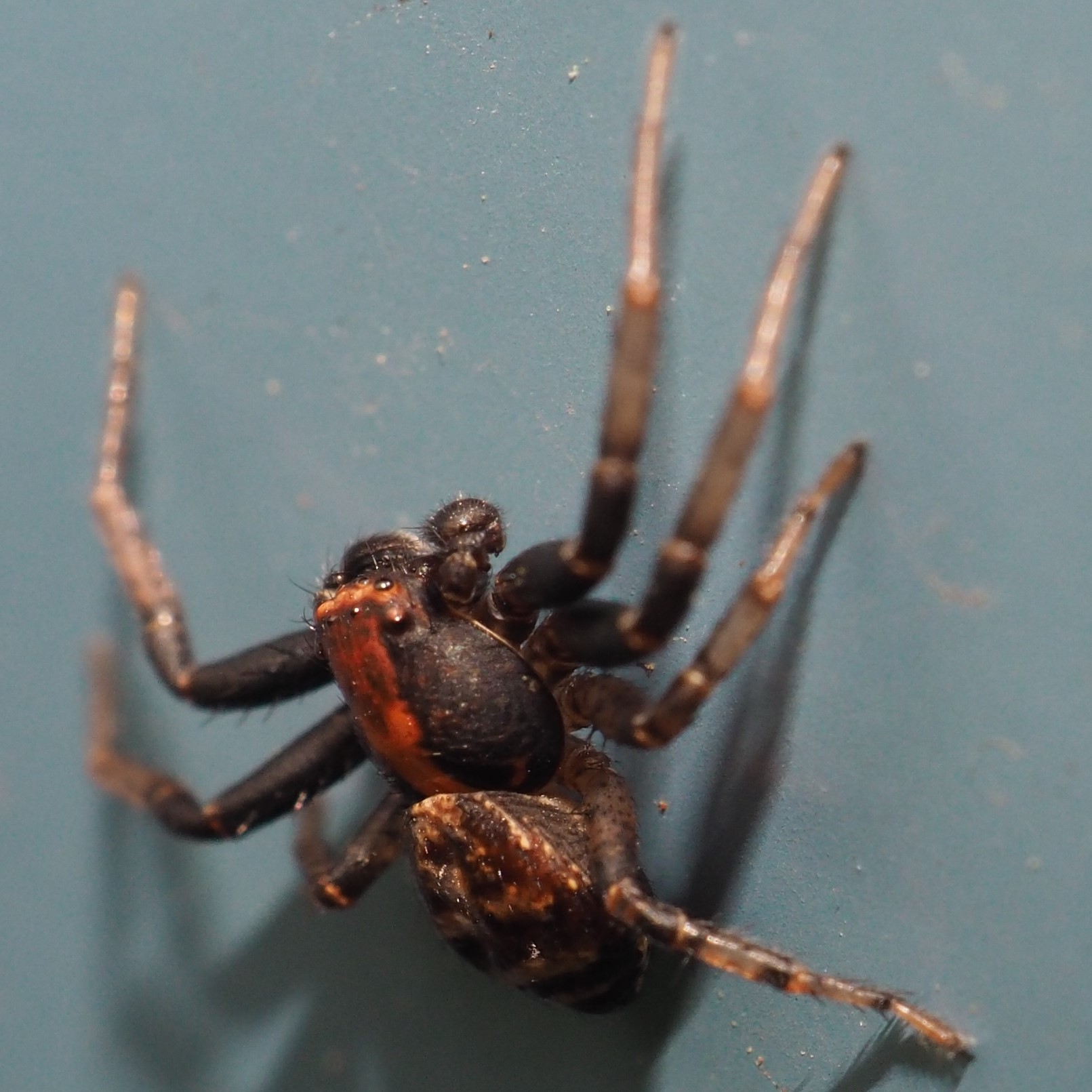
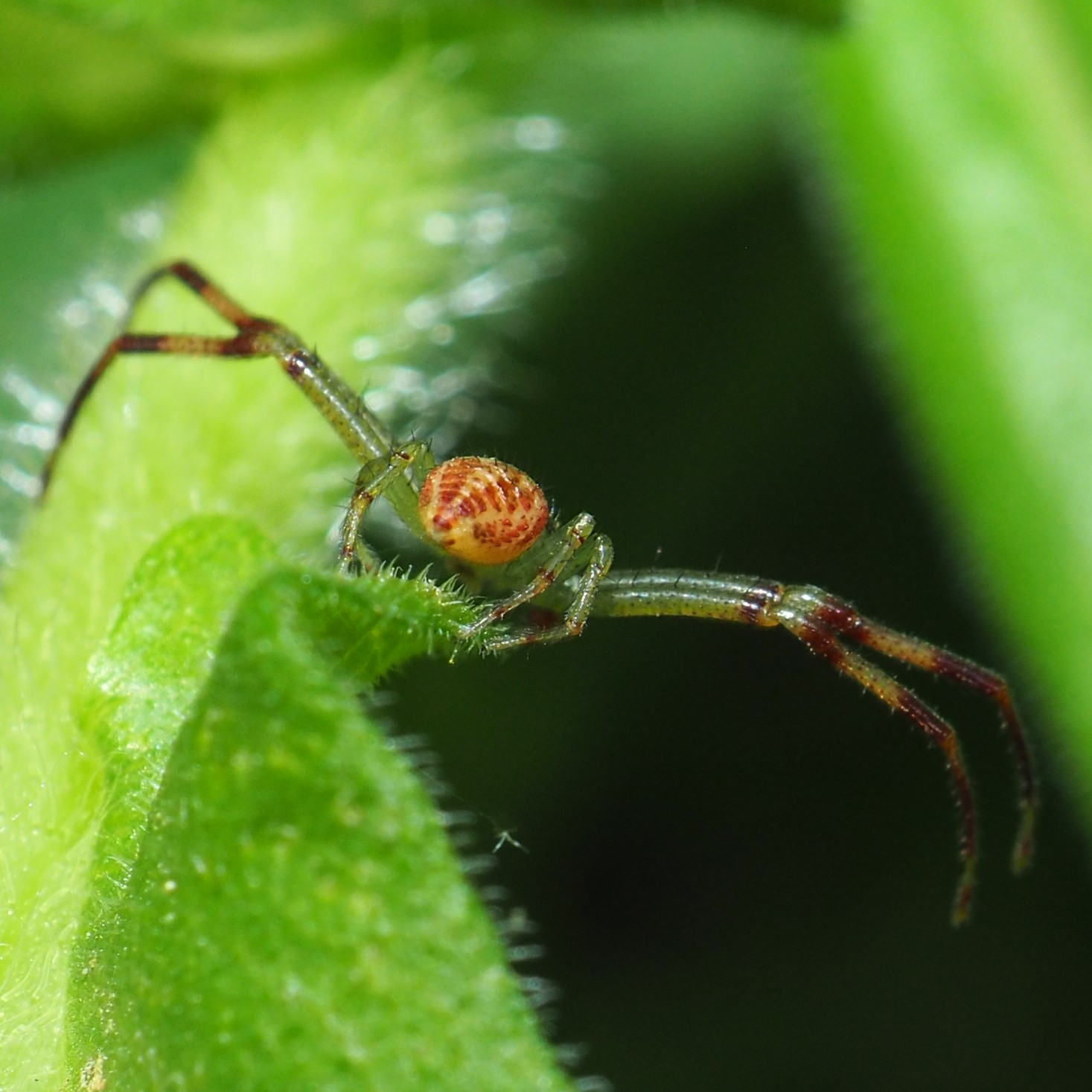
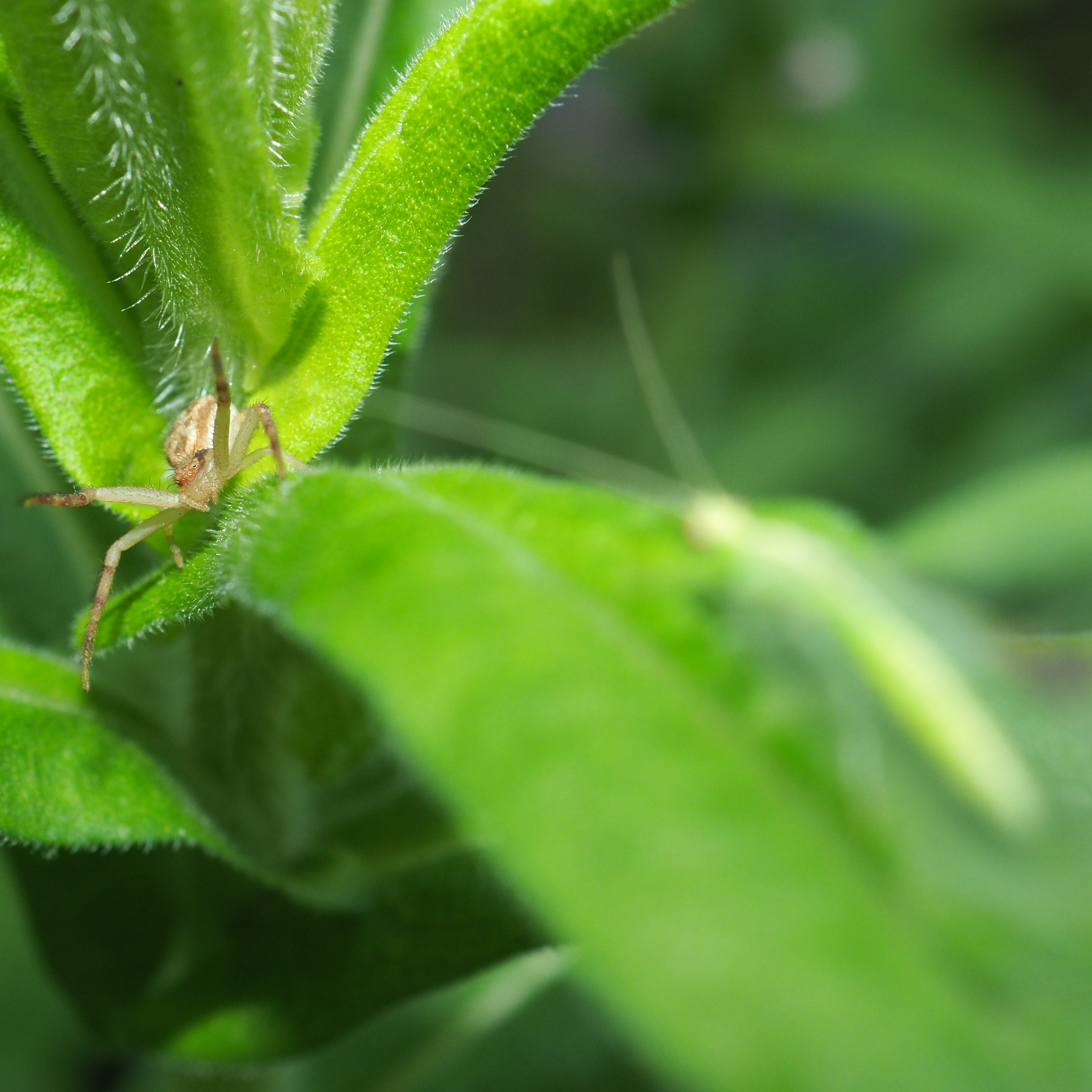
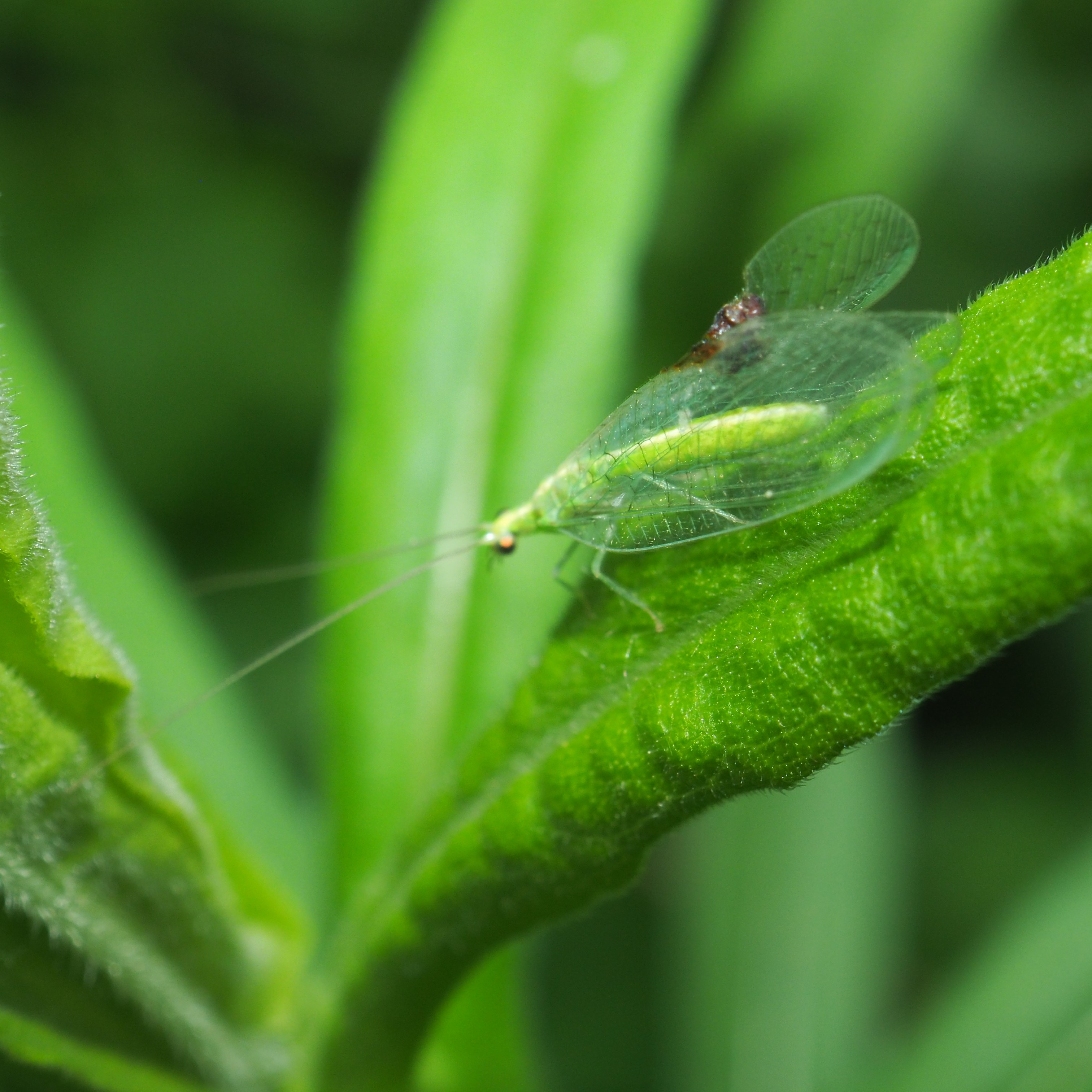
Jumping Spiders are an aesthetic group. My favorite is Naphrys pulex. This week all the spiders were slender, meaning they were either males or post-partum. First is a male judging from the one pedipalp showing. The second image is of a very gravid female on May 5. Compare the pattern with its unstretched version in image 3.
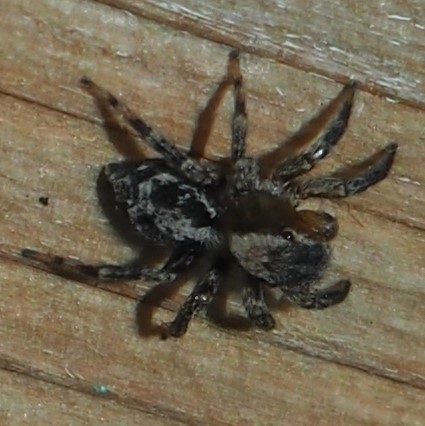
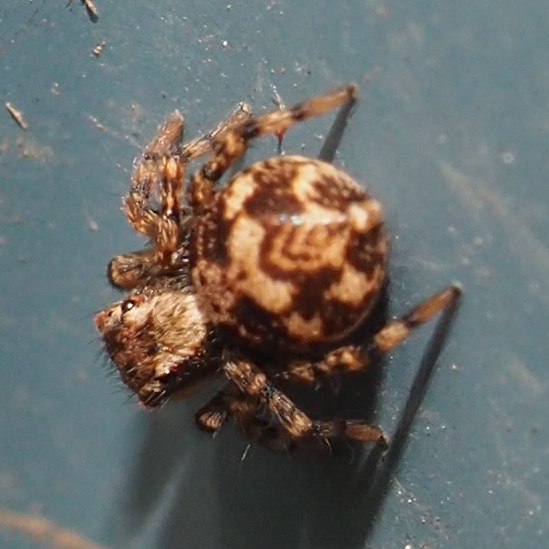
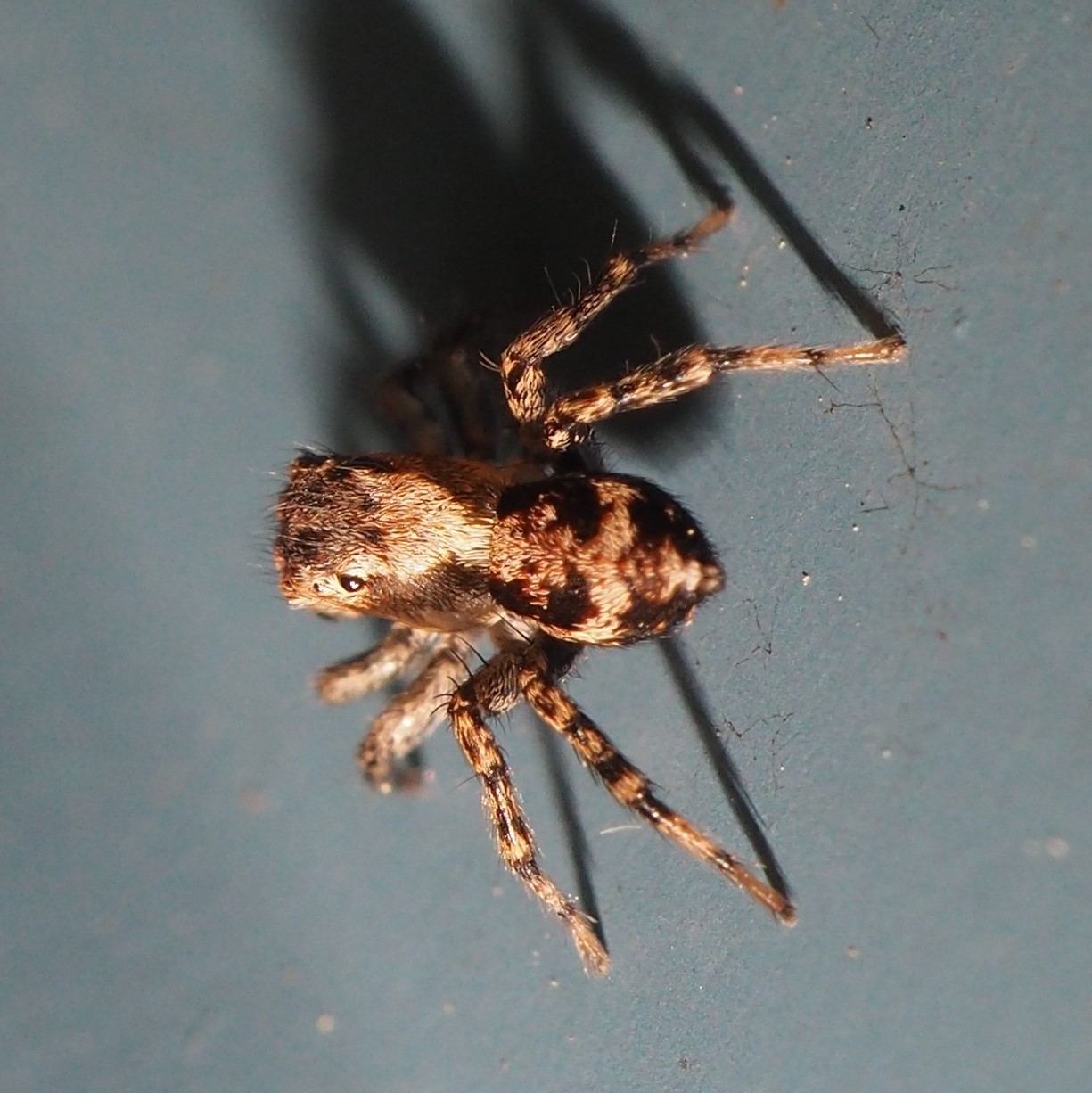
Here is a different Jumper, Pellegrina proterva (pictures 1 and 2). You can see the big eyes from the side. The third picture does not show the "headlight" eyes, but the posture looks very much like that of a Jumping Spider.
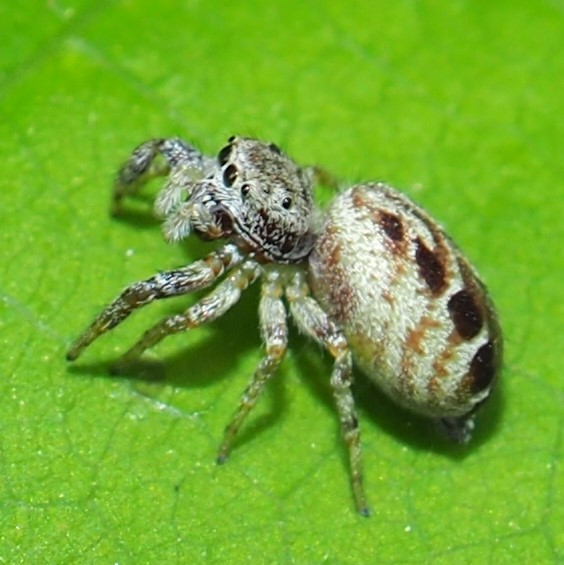
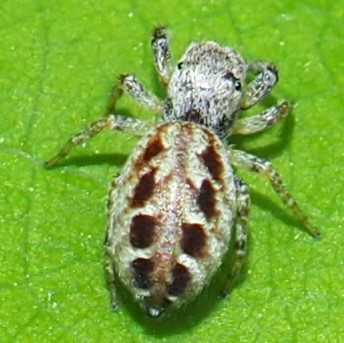
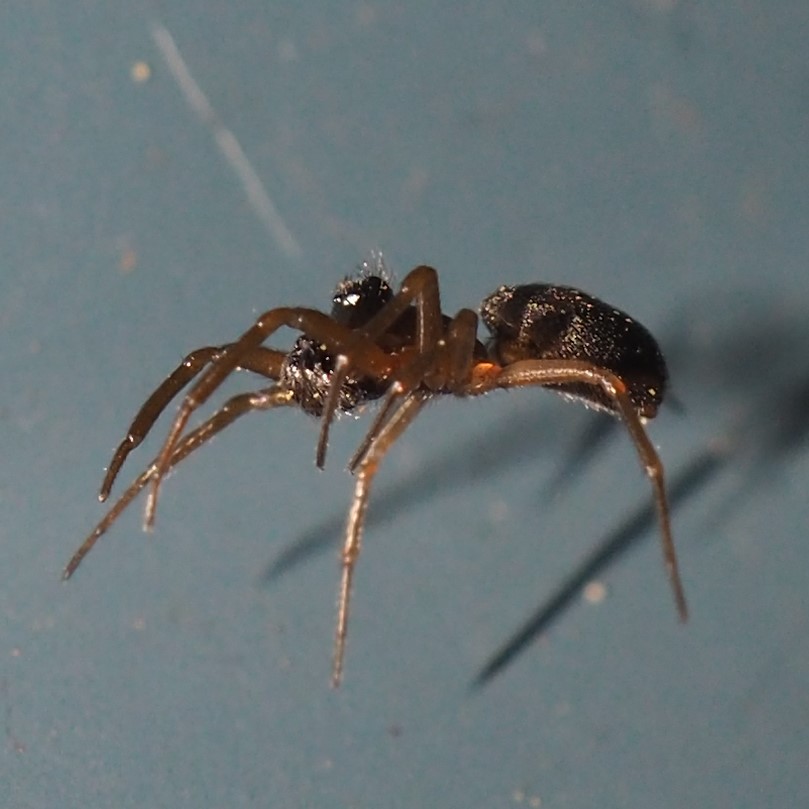
Let's look at a couple of spiders we have been following lately. Here is the latest picture of what I'm confident is genus Mimetus and most likely M. puritanus (with large prey in tow). Second is Leucauge venusta, the Orchard Orbweaver, and third one we found in the field (not on the Wall). Its colors are different in the sun but the green legs are beginning to really show.
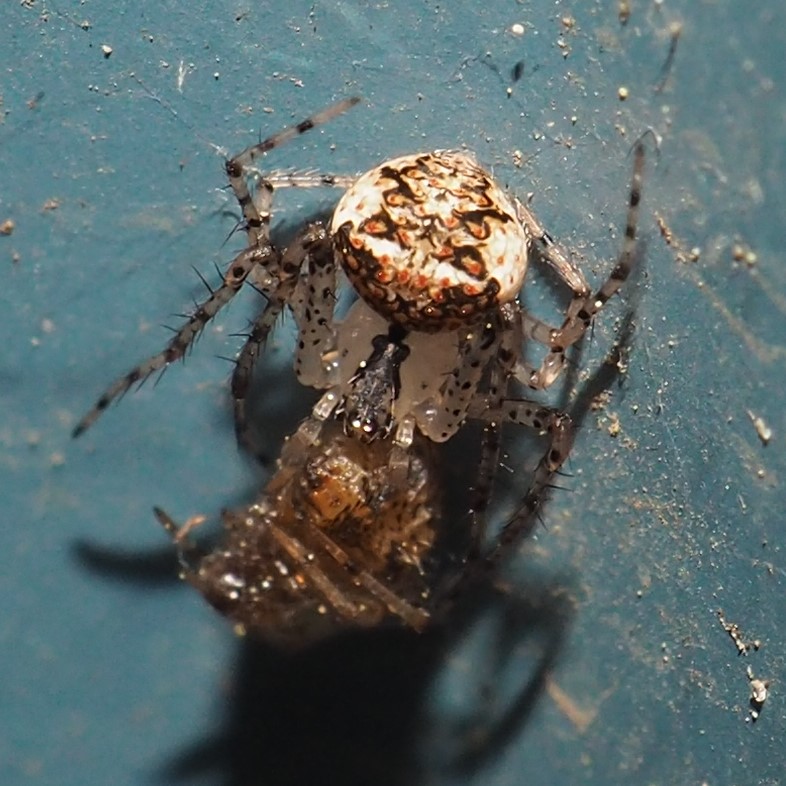
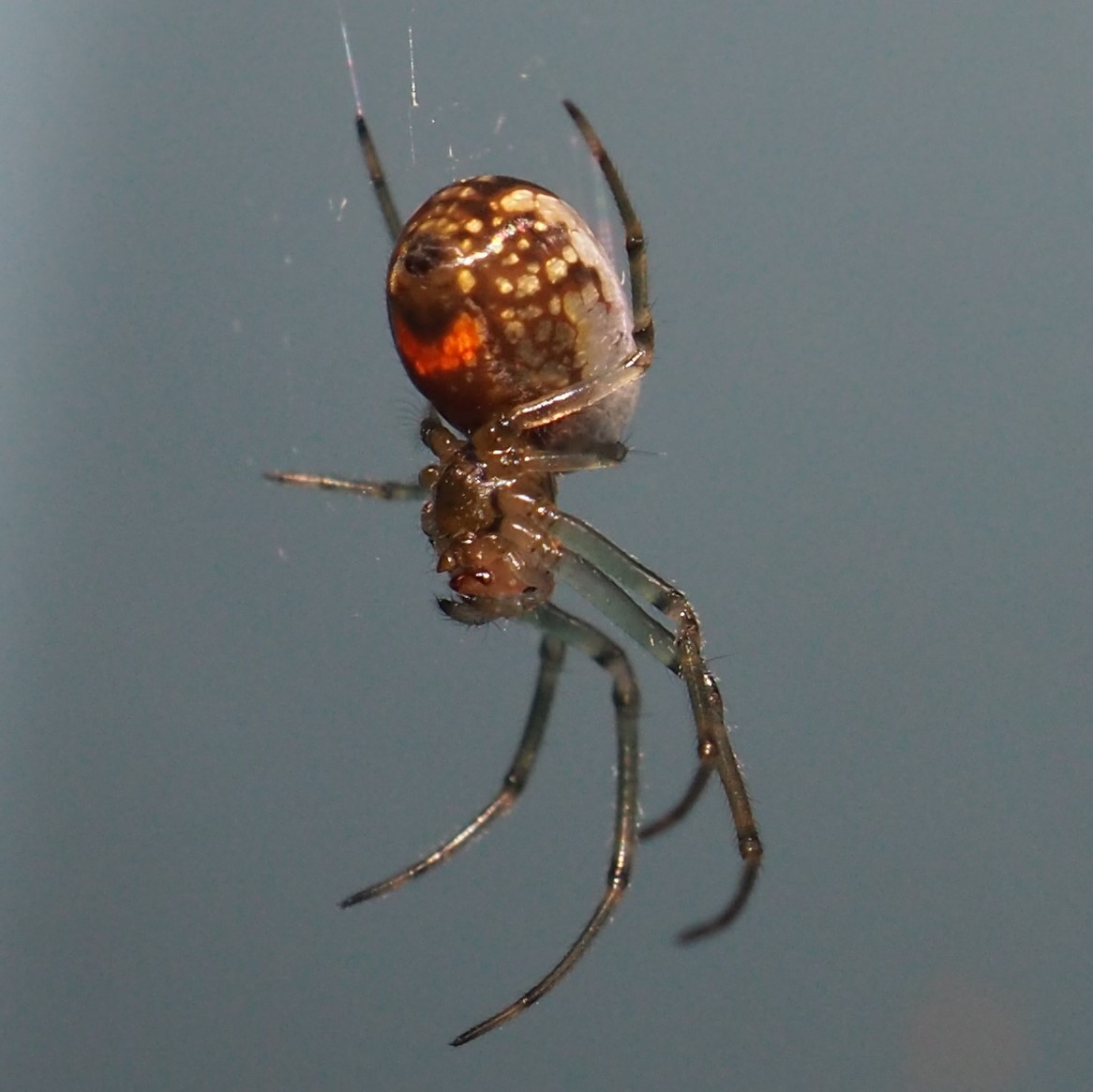
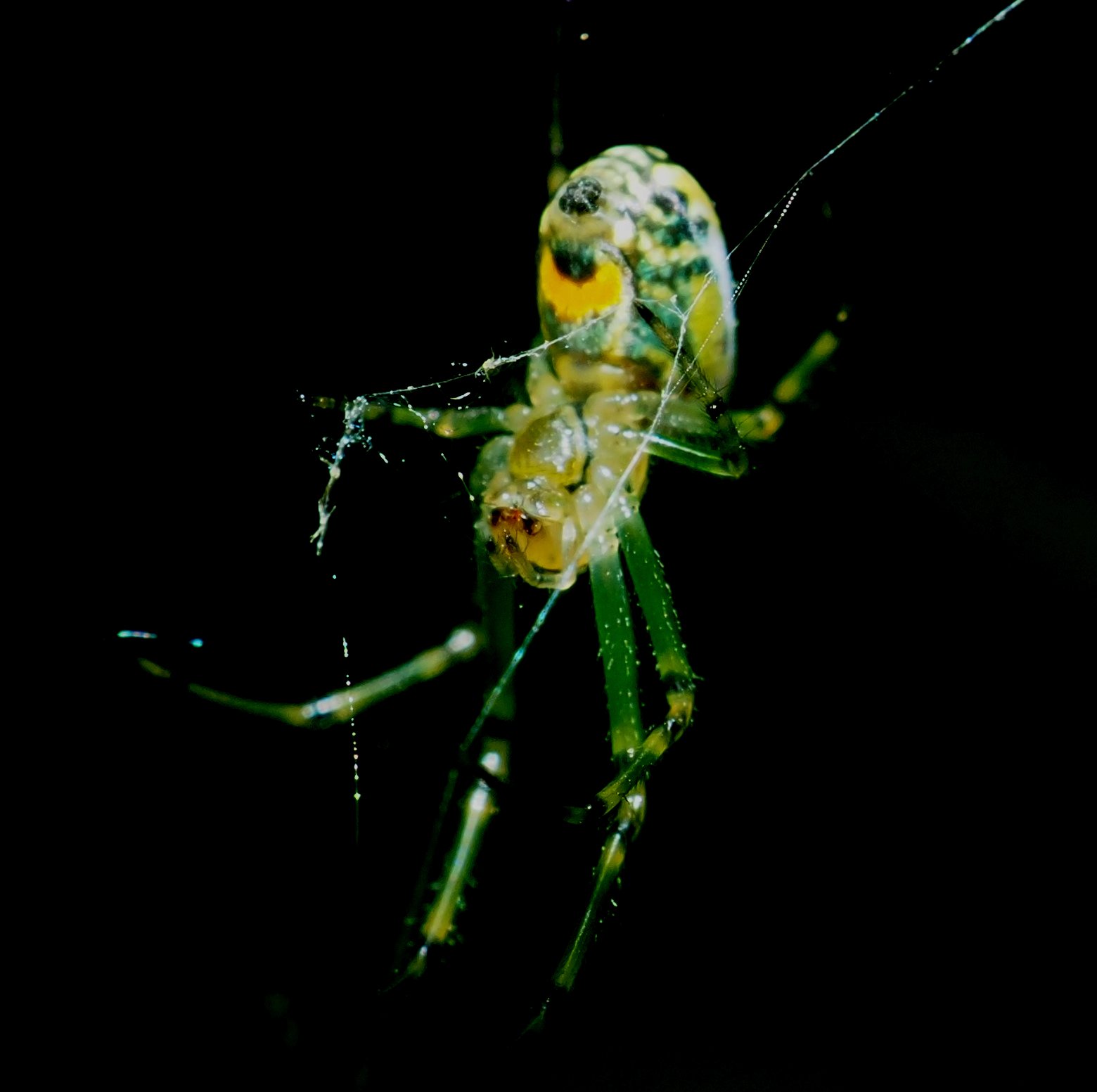
We've been following Mangora placida, the Tuft-legged Orbweaver, for some time now. There are a few scattered around the shop and probably in the weeds as well. Picture 3 is of one we hadn't seen this year but now we have. It's the Six-spotted Orbweaver. Both of these spiders now have webs that are really orb-shaped.
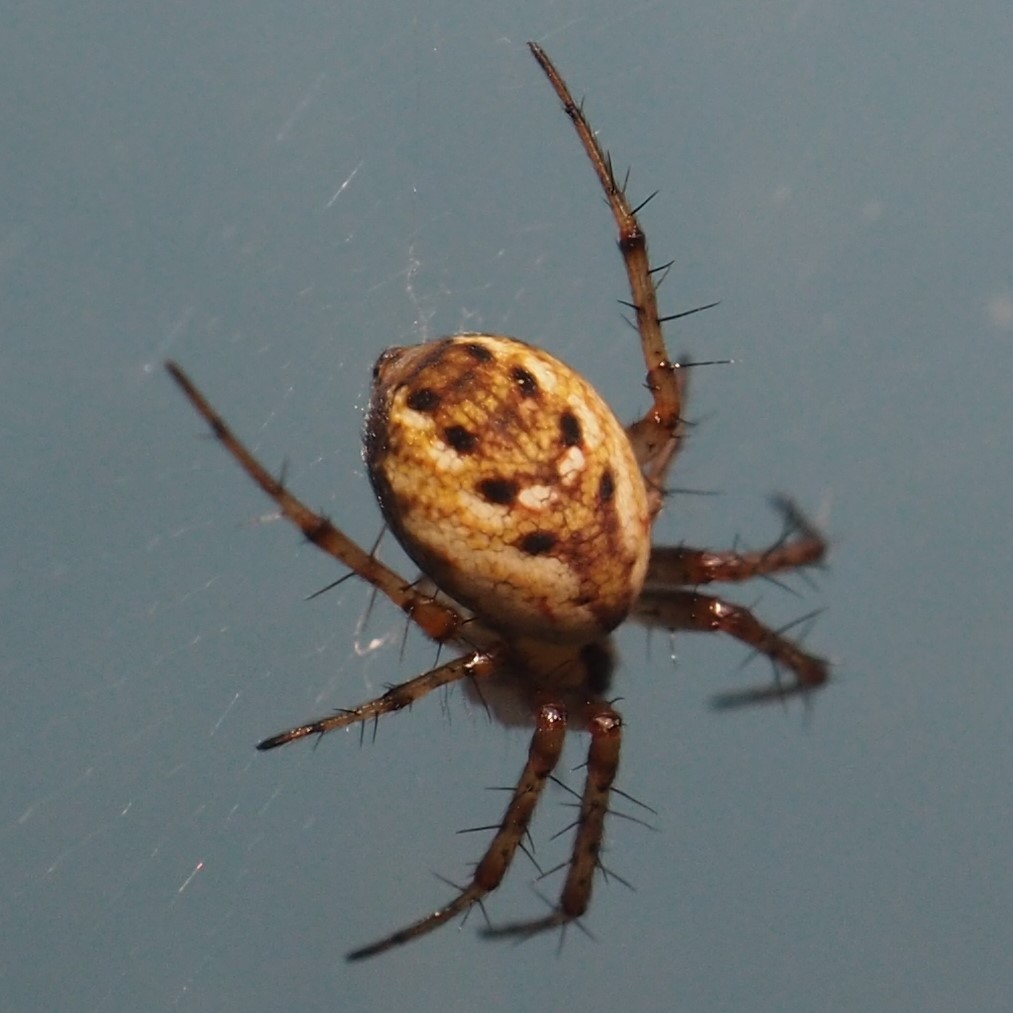
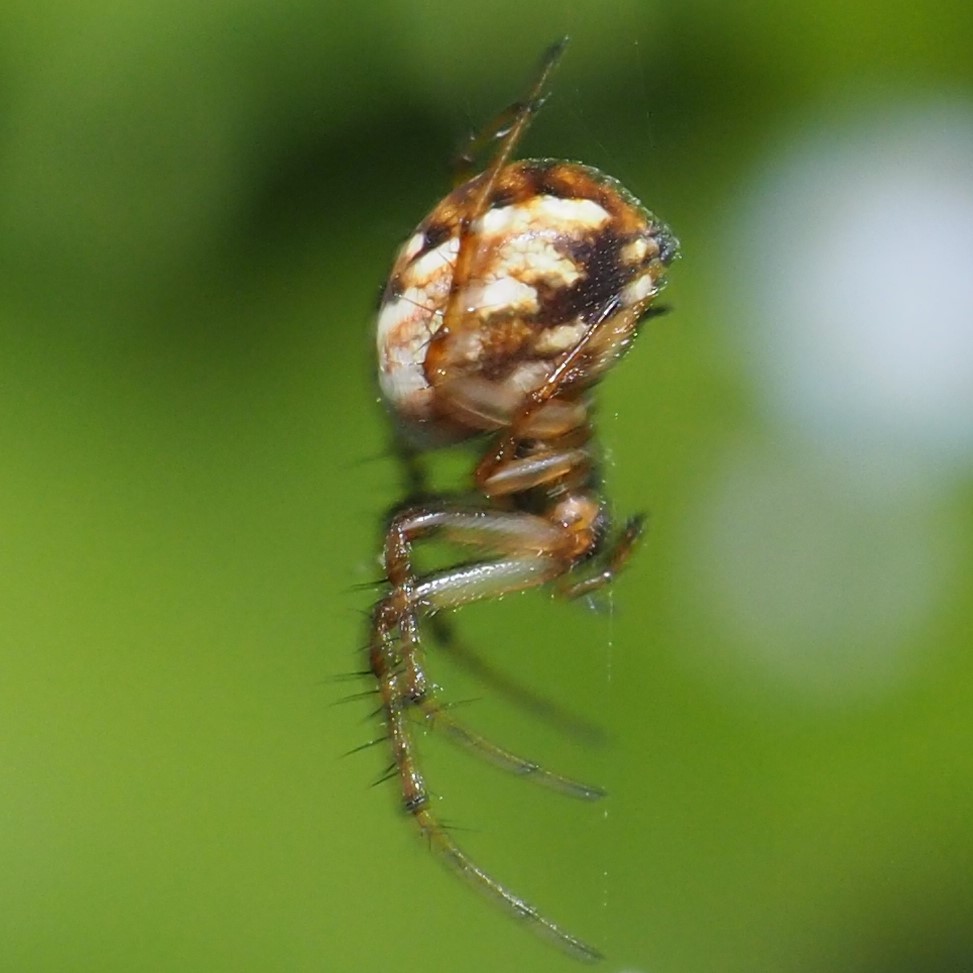
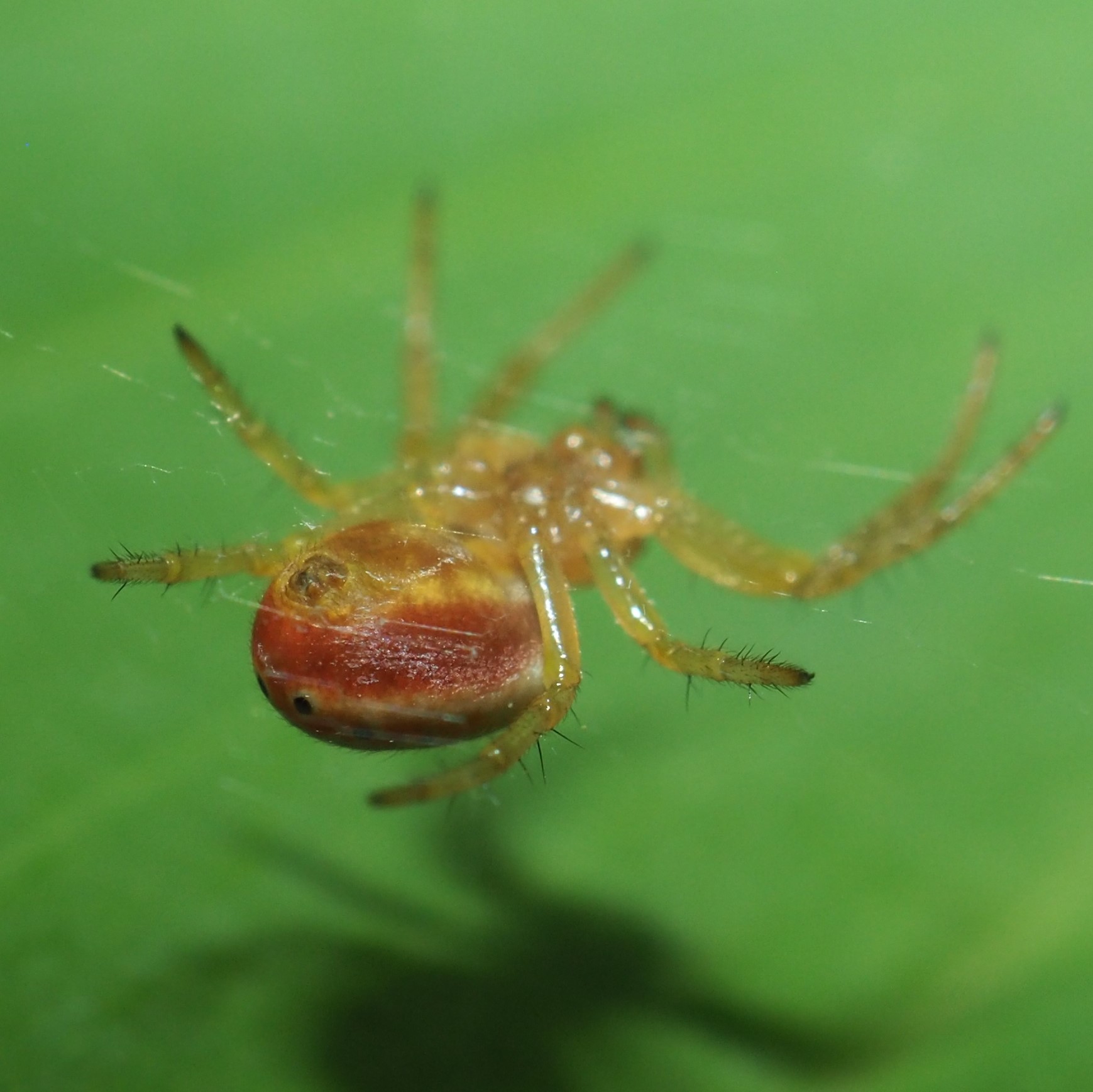
One more creature that we haven't seen since last summer. The Midwest is home to two common species of paper wasp. One is the yellow on black kind, the European Paper Wasp, Polistes dominula. That's the kind that made their nest in my air conditioner a few years back. Here is a female. You can tell the sex of many wasps if you count the segments in the abdomen. Males have seven, and females six. The second is the Northern (or Dark) Paper Wasp. These are highly colored, primarily black with red, and a bit of yellow. Picture 2 is a female Northern Paper Wasp, Polistes fuscatus. At this time of year the females are more active - they have to make pulp out of old plant stems so they can make their nests. In fact, the European in picture 3 was scraping that whitish stem when I disturbed her. They are very fond of raspberry flower nectar now. In the summer you'll see them on the goldenrod. It's very interesting how the timing of things has evolved, isn't it?
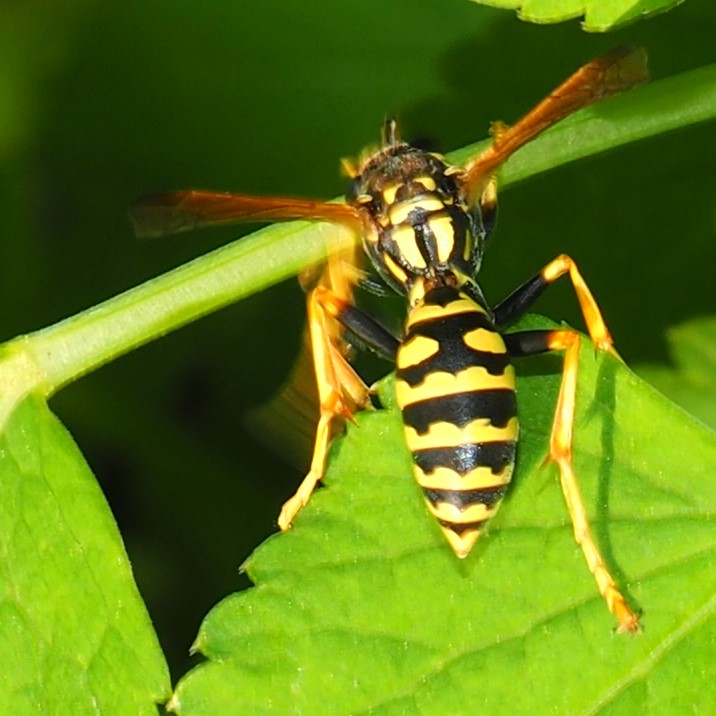
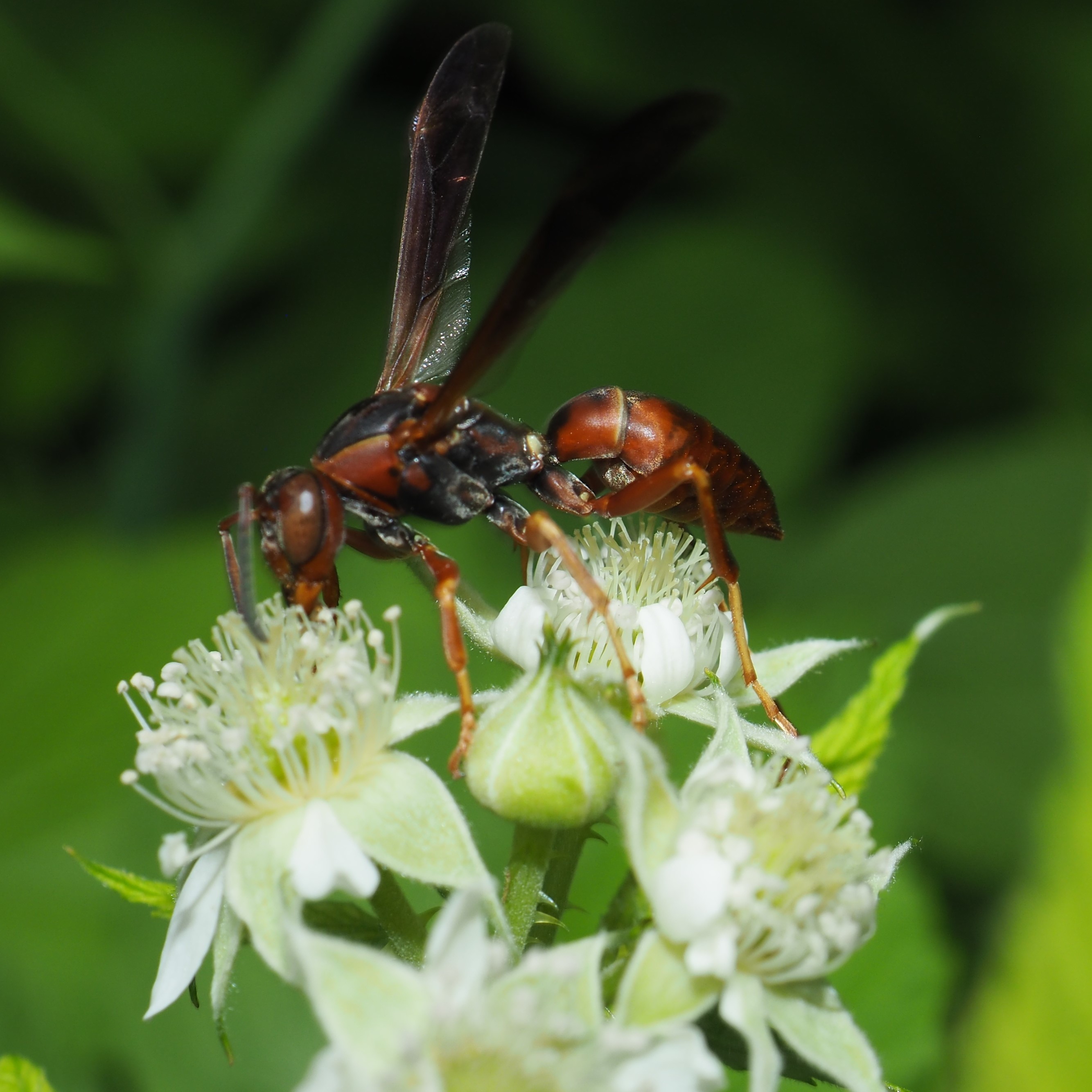
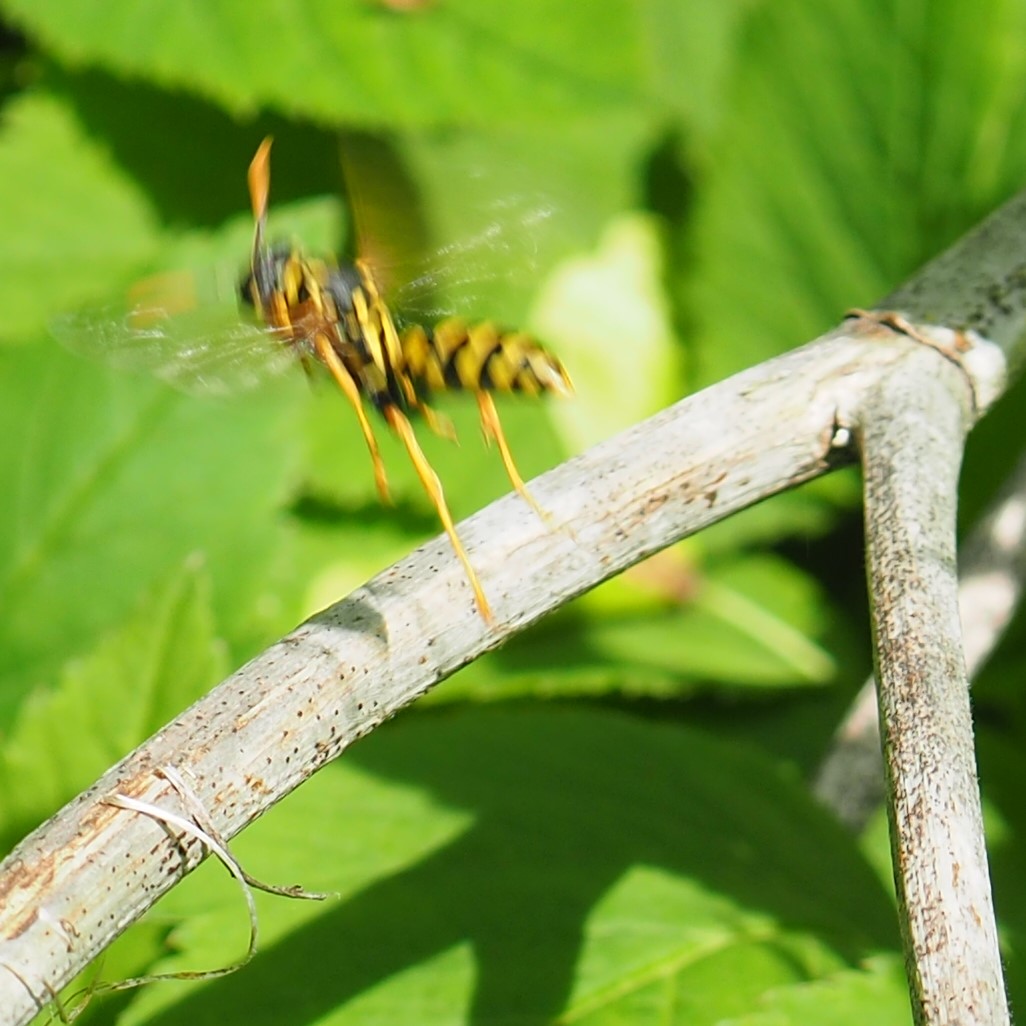
I'll leave you with a puzzle. Maybe you can figure this out before I do. What kind of thing is this? You can email me if you think you have the answer, or even if you have a funny answer. I'll share the answers next week.
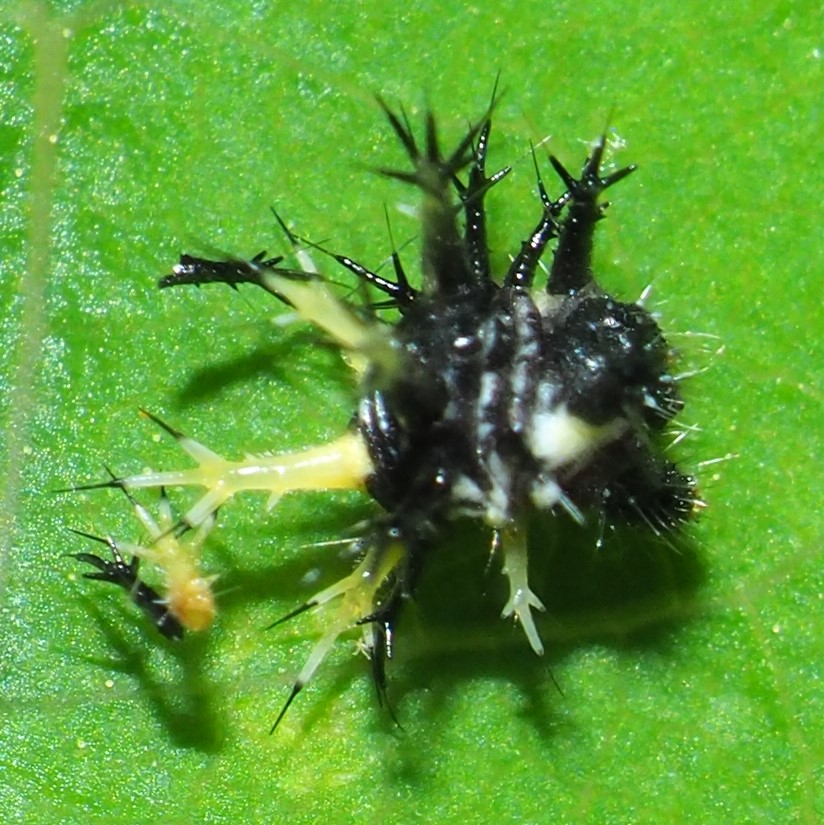
Take care, all of you. I hope that you always find yourselves in a state where people and the weather work together to make life beautiful for all!
Love, Martha
Back to May 26, 2019
Forward to June 9, 2019
Back to main menu
copyright Martha O'Kennon 2019

















































 5 30 19 1.jpg)
 adult 6 9 15a.jpg)




















































